At a time when tech leaders are constantly seeking productivity tools and life hacks to remain youthful and stress-free, an Indian monk and IIT graduate believes he has already unlocked the secret—and it’s entirely non-digital. Speaking at the India Global Forum 2025 in London, ISKCON monk Gauranga Das shared a compelling personal anecdote involving Google CEO Sundar Pichai, triggering thoughtful discussions on spirituality, digital burnout, and the toll of modern life.
On the final day of the event, Gauranga Das, a graduate of IIT Bombay who once appeared set for a bright career in engineering before taking a spiritual path, captivated the audience with his story. During his address, he recalled meeting Sundar Pichai, who was part of the same graduating batch at IIT, though in a different department. Despite not interacting during their student days, the two eventually crossed paths years later under very different circumstances.
What stood out during their meeting was a light-hearted yet meaningful exchange about their appearance. Gauranga Das recounted that Pichai, now 53 and at the helm of one of the world’s most powerful tech giants, remarked on the monk’s notably youthful appearance. In response, the spiritual leader pointed to the divergent lifestyles they lead. He quoted the Google CEO as saying that he looked younger, to which Gauranga Das replied, “You deal with Google, which creates stress. I deal with God, who releases stress.”
The crowd responded warmly to the story, appreciating its humor and underlying wisdom. The remark provided a perfect segue into the monk’s deeper message about the modern mental health crisis, especially one driven by digital overuse. Gauranga Das used the platform to issue a stark warning about the consequences of excessive screen time and growing social media dependence.
He backed up his concerns with data that emphasized the alarming spread of digital addiction. According to him, a staggering 230 million people across the globe are currently addicted to social media. Narrowing it down to India, he claimed that 70 percent of the country’s teenagers are spending an average of seven hours each day online. Additionally, he pointed out that one in every seven individuals worldwide is suffering from mental health disorders.
Gauranga Das used this backdrop to urge a return to more mindful living, emphasizing that a connection with the divine or spiritual discipline could act as a much-needed antidote to the overwhelming pressures of modern digital life.
So who is Gauranga Das? He is not just any monk; his multifaceted profile reveals a deep engagement with both the spiritual and the environmental realms. A product of IIT Bombay, he chose to renounce material pursuits early in life and is now a spiritual teacher, environmental advocate, and education reformer. Presently, he serves as a member of ISKCON’s Governing Body Commission and is the director of the Govardhan Ecovillage (GEV), an innovative project envisioned by Radhanath Swami that serves as a model for sustainable living.
Under Gauranga Das’s stewardship, Govardhan Ecovillage has gained international recognition. It was honored with the United Nations World Tourism Organization Award in 2017 and has earned accreditations from multiple key UN institutions, including the United Nations Environment Programme (UNEP), Economic and Social Council (ECOSOC), United Nations Convention to Combat Desertification (UNCCD), and the Convention on Biological Diversity (CBD).
In addition to his environmental work, Das plays a pivotal role in education and leadership training. He serves on the board of the Govardhan School of Public Leadership, which helps prepare candidates for India’s civil services. He also heads the Bhaktivedanta Research Centre, an institution that works to preserve ancient Vedic manuscripts and provides postgraduate education in philosophy. His literary contributions include the books Art of Resilience and Art of Focus, both of which explore timeless wisdom through a modern lens.
While Gauranga Das has carved his niche in spiritual and ecological circles, Sundar Pichai’s journey has unfolded in the high-stakes world of global technology. Born on June 10, 1972, in Madurai, Tamil Nadu, Pichai grew up in Chennai and later enrolled in IIT Kharagpur, where he pursued metallurgical engineering. His academic brilliance was evident early on—he received a silver medal for his performance at IIT.
Pichai’s pursuit of knowledge took him abroad, where he earned a master’s degree from Stanford University and an MBA from the Wharton School of the University of Pennsylvania. Before joining Google in 2004, he worked with Applied Materials and the consulting firm McKinsey & Company.
At Google, Pichai was instrumental in shaping several flagship products that have become staples of the digital era. He played key roles in the creation and growth of Google Chrome, ChromeOS, Gmail, Google Drive, and Android. His influence at the company continued to grow, and in 2015, he was appointed CEO of Google. In 2019, he assumed leadership of Alphabet Inc., Google’s parent company, succeeding co-founder Larry Page.
As CEO, Pichai has overseen Google’s strategic push into artificial intelligence, cloud computing, and digital infrastructure. His leadership and impact have earned him global recognition. He was named among Time magazine’s 100 most influential people in both 2016 and 2020. In 2022, he received the Padma Bhushan, India’s third-highest civilian award, for his distinguished contributions to trade and industry.
Despite their vastly different paths—one driven by Silicon Valley innovation, the other by ancient Vedic wisdom—both men have emerged as iconic representatives of modern India on the world stage. Their chance meeting and Gauranga Das’s humorous yet thought-provoking remark have opened up a broader conversation about stress, life choices, and the need to re-evaluate what success truly means in an increasingly digital world.
By placing spirituality in the spotlight amid a tech-dominated narrative, Gauranga Das left his audience with a resonant message: real rejuvenation may not lie in productivity apps or CEO routines but in meaningful connection—to others, to nature, and perhaps, to a higher power.

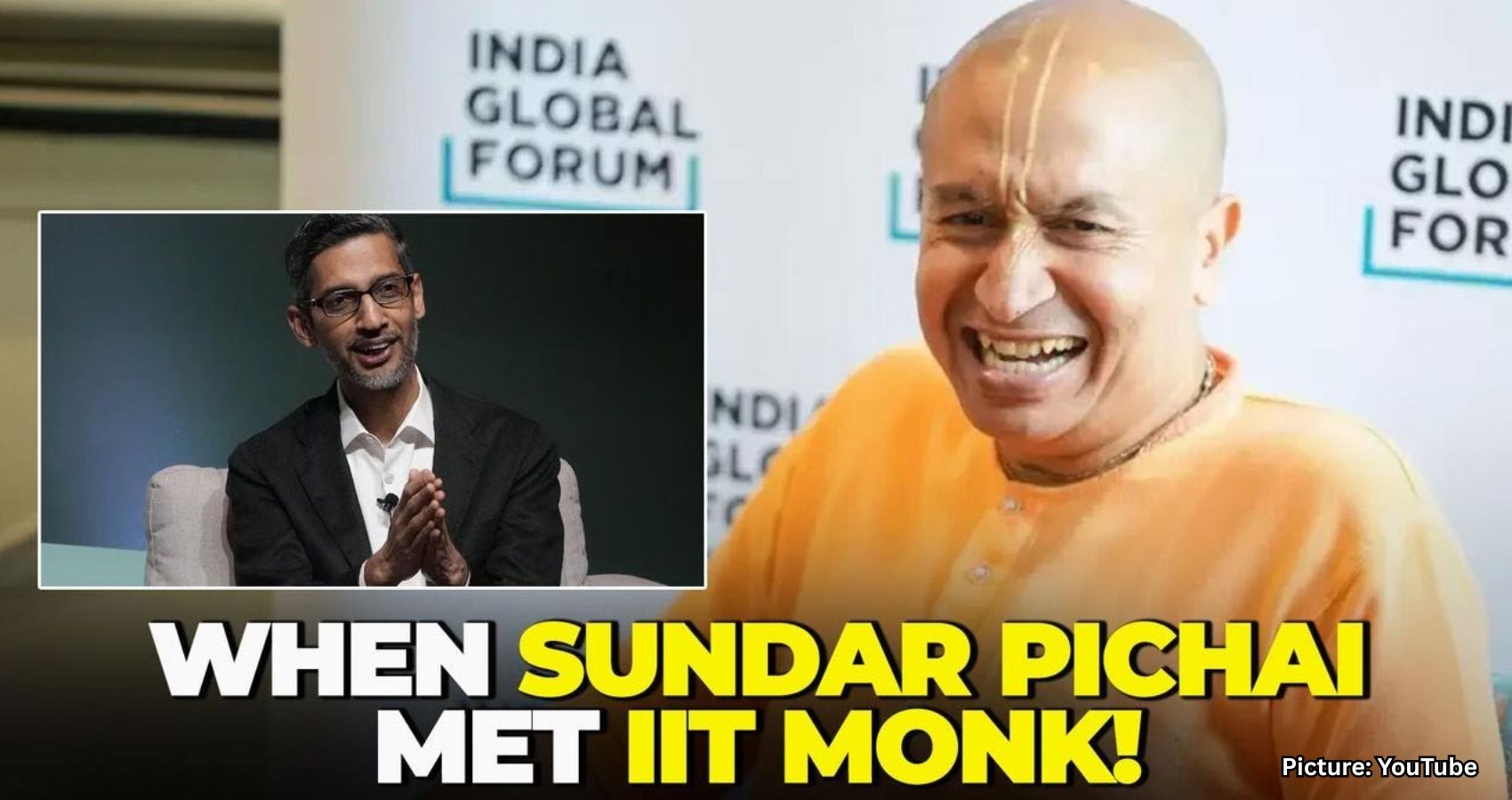
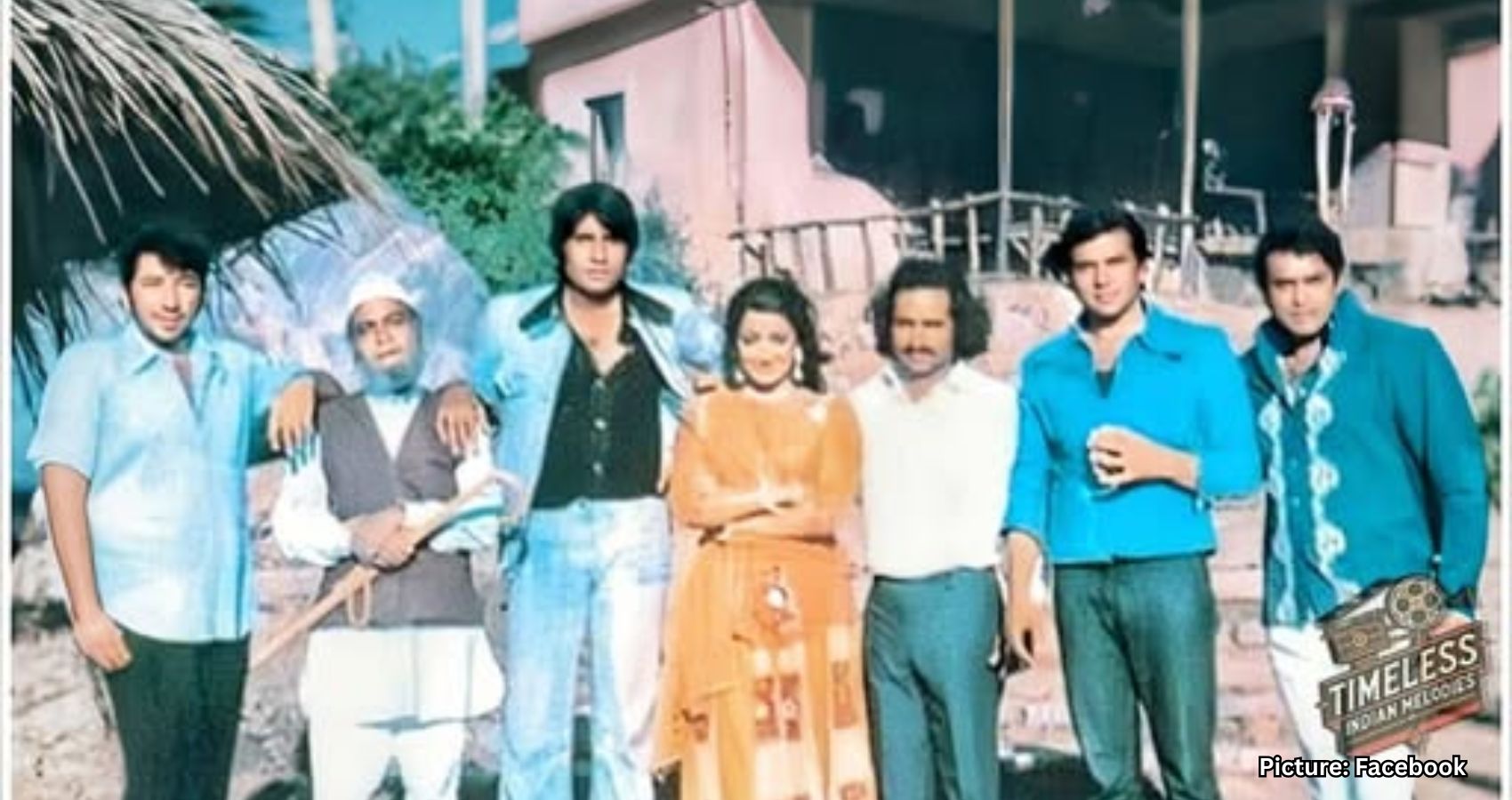
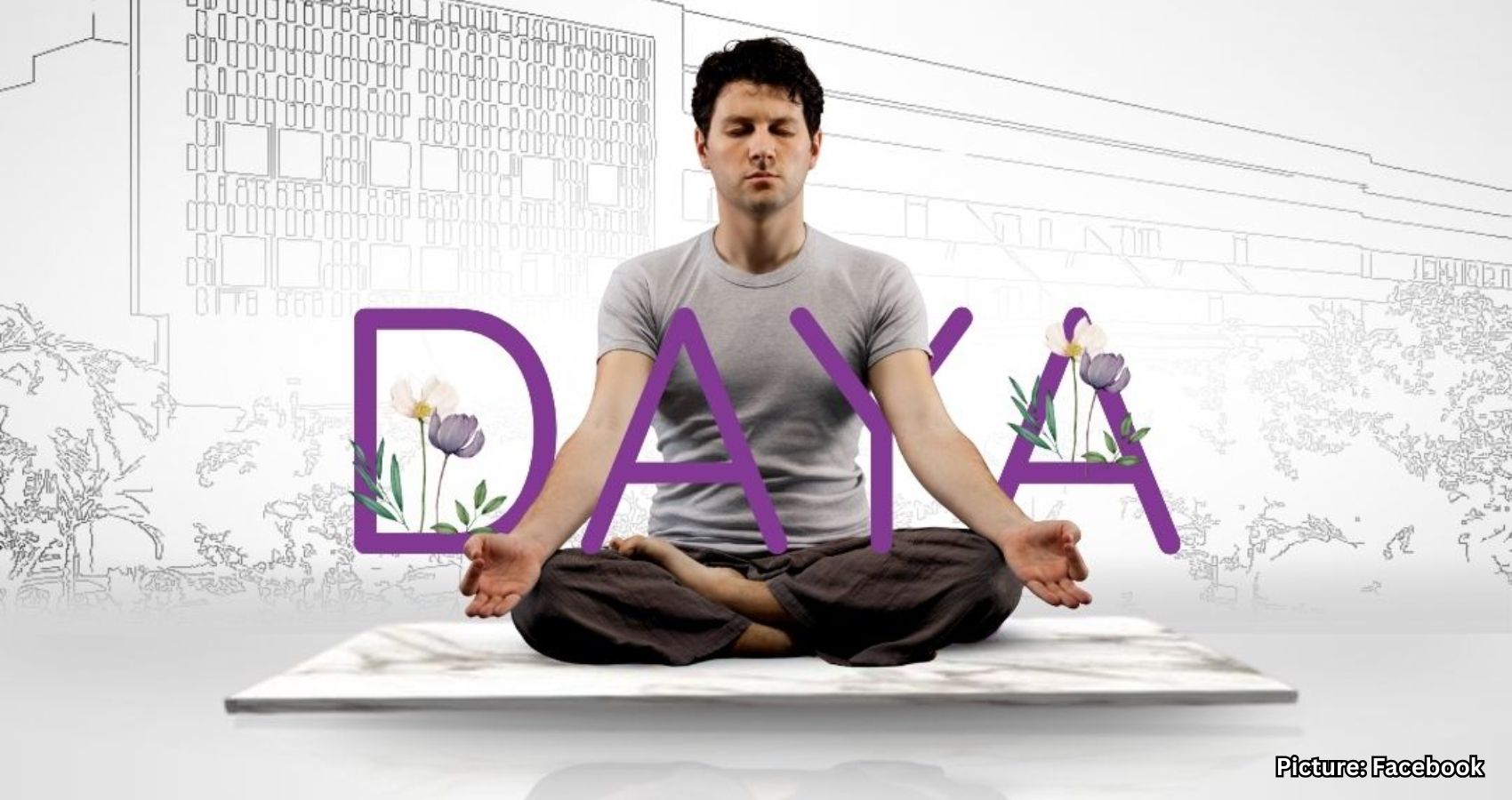
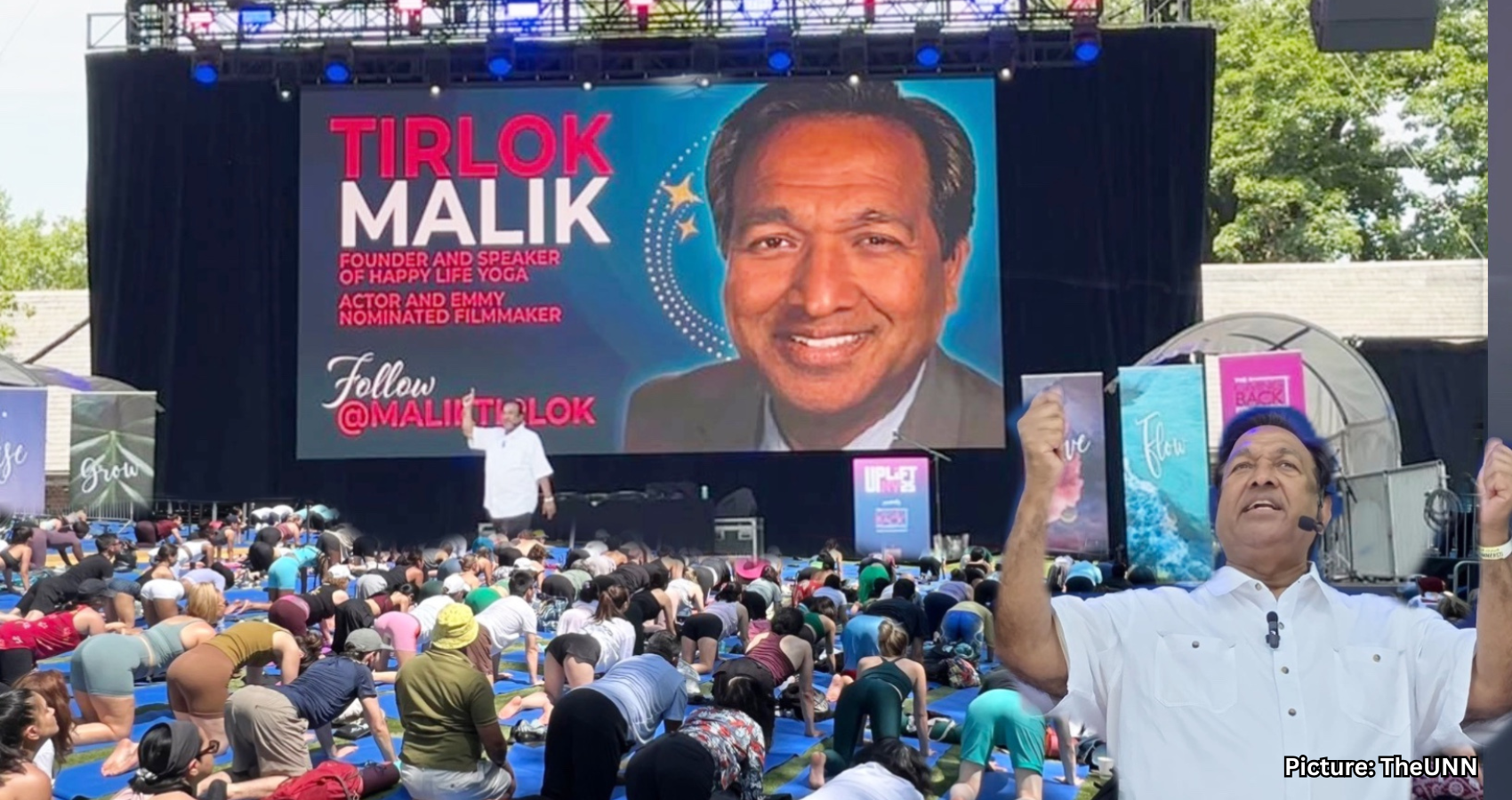
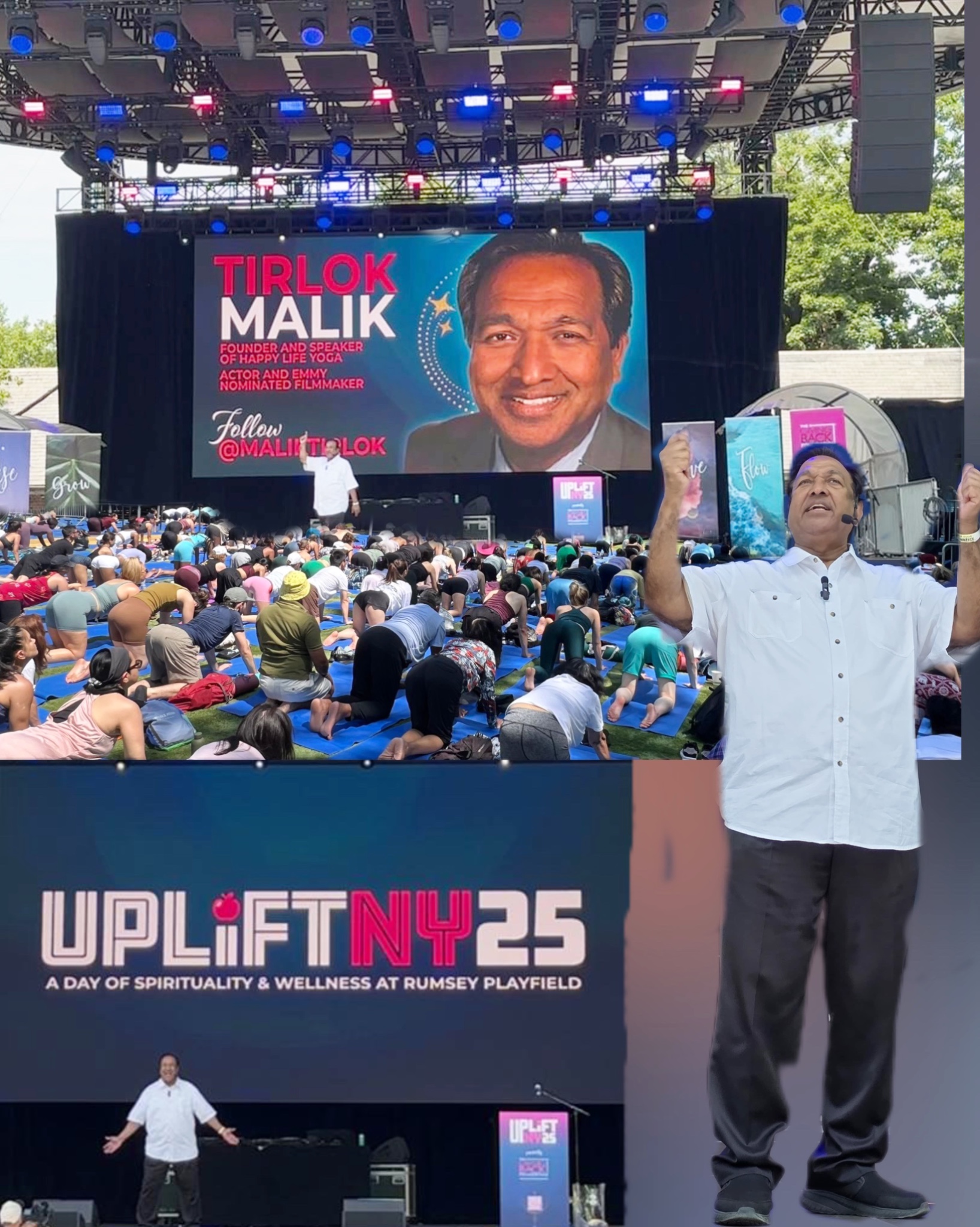
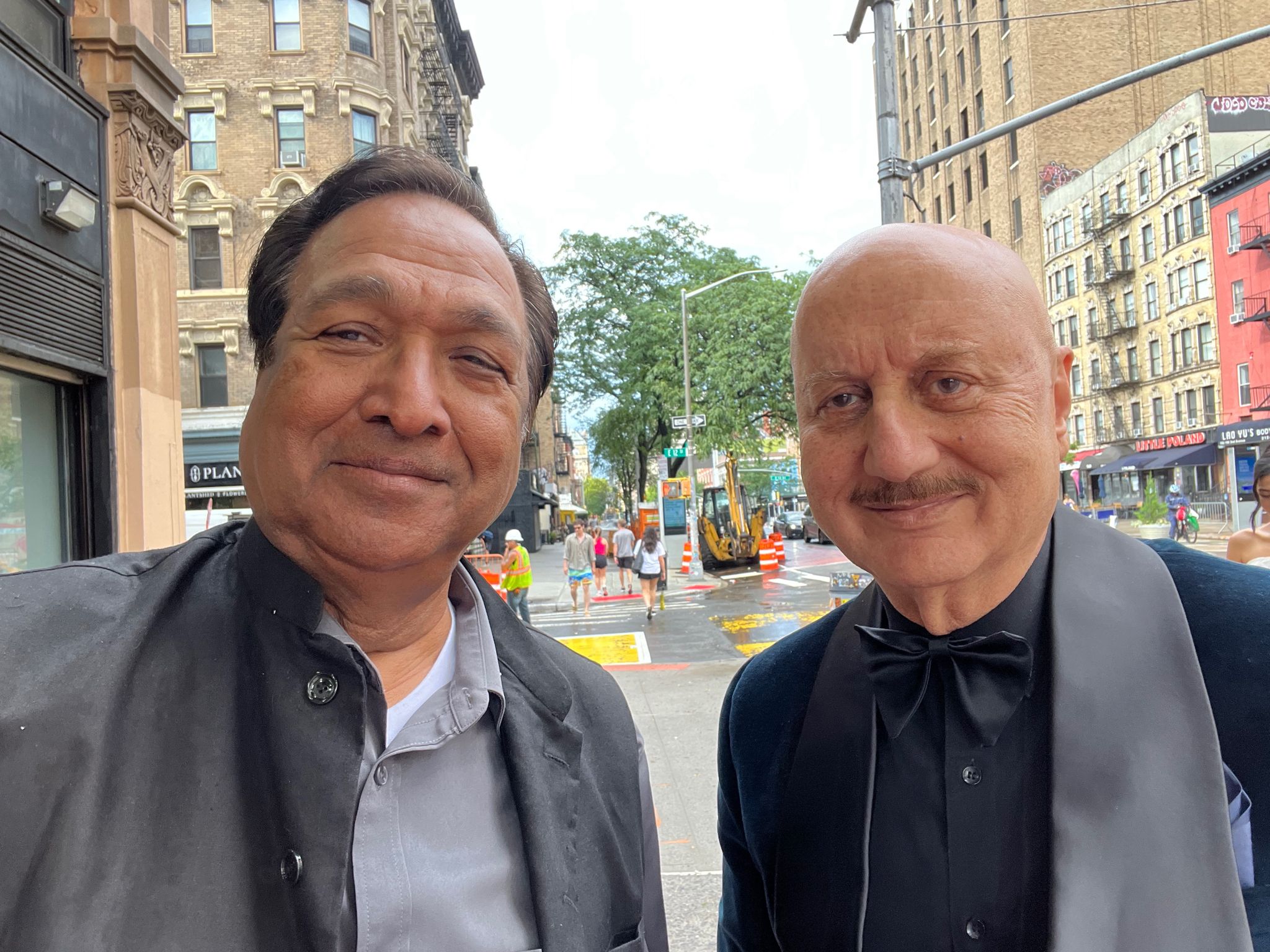
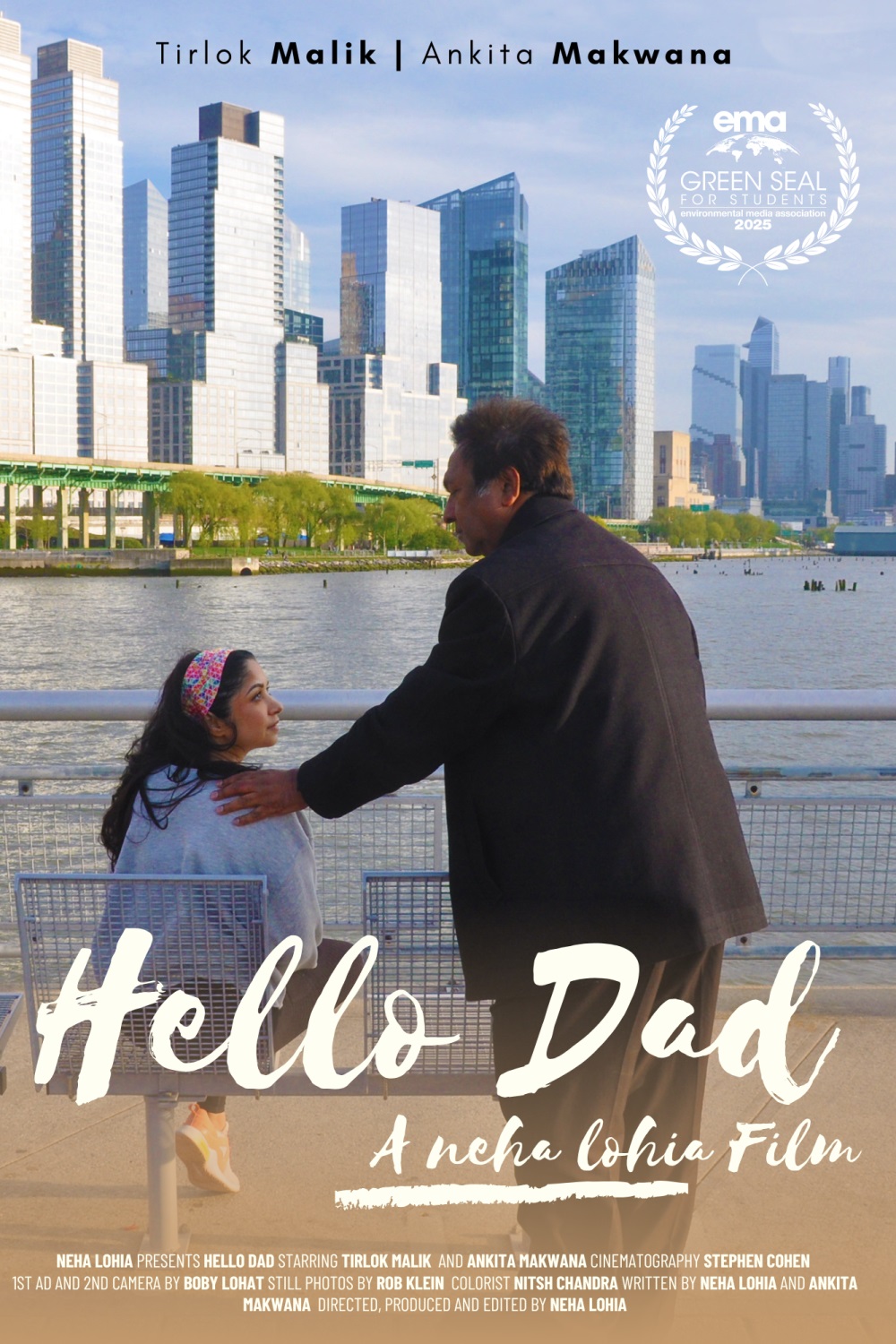
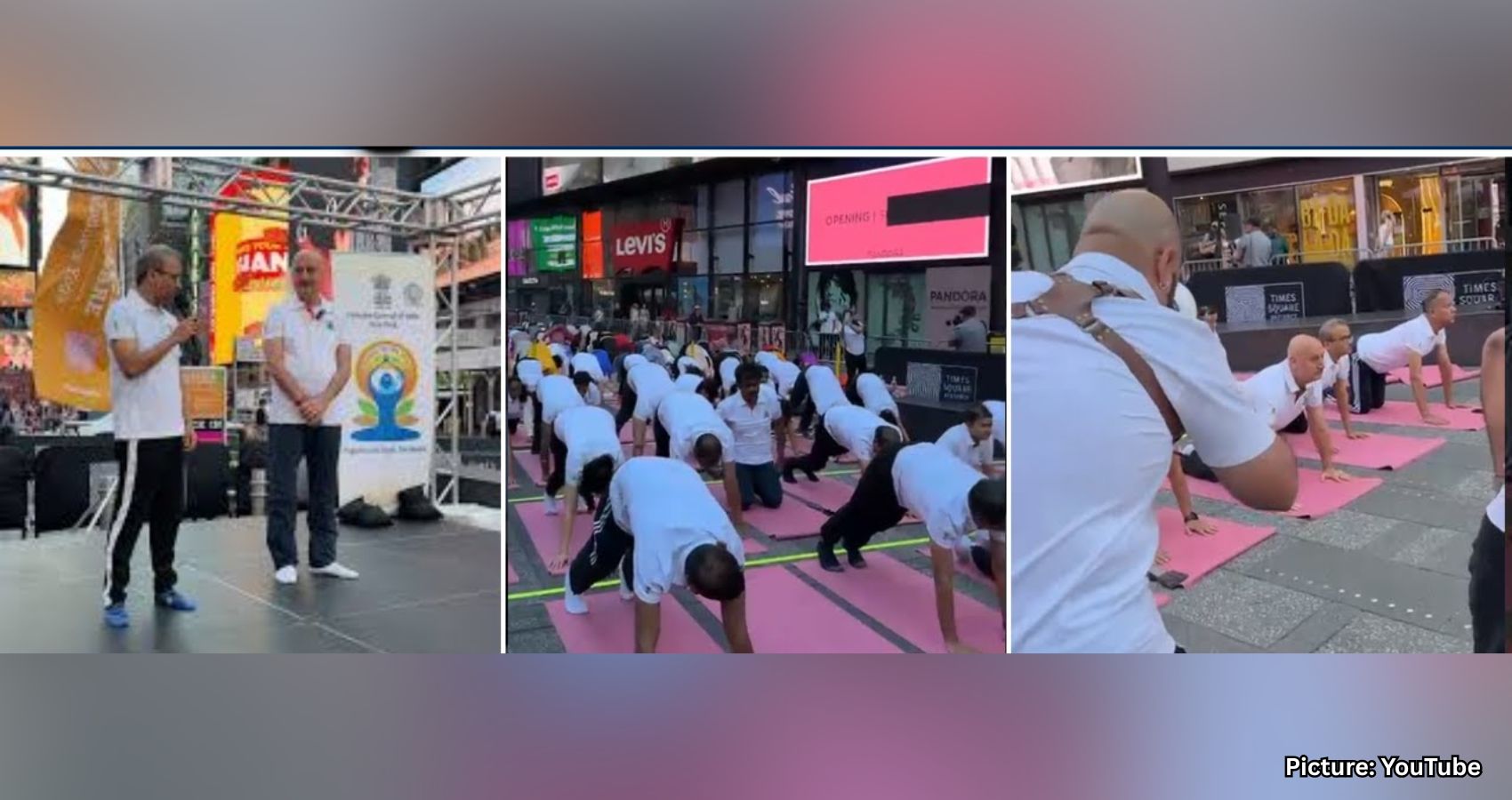
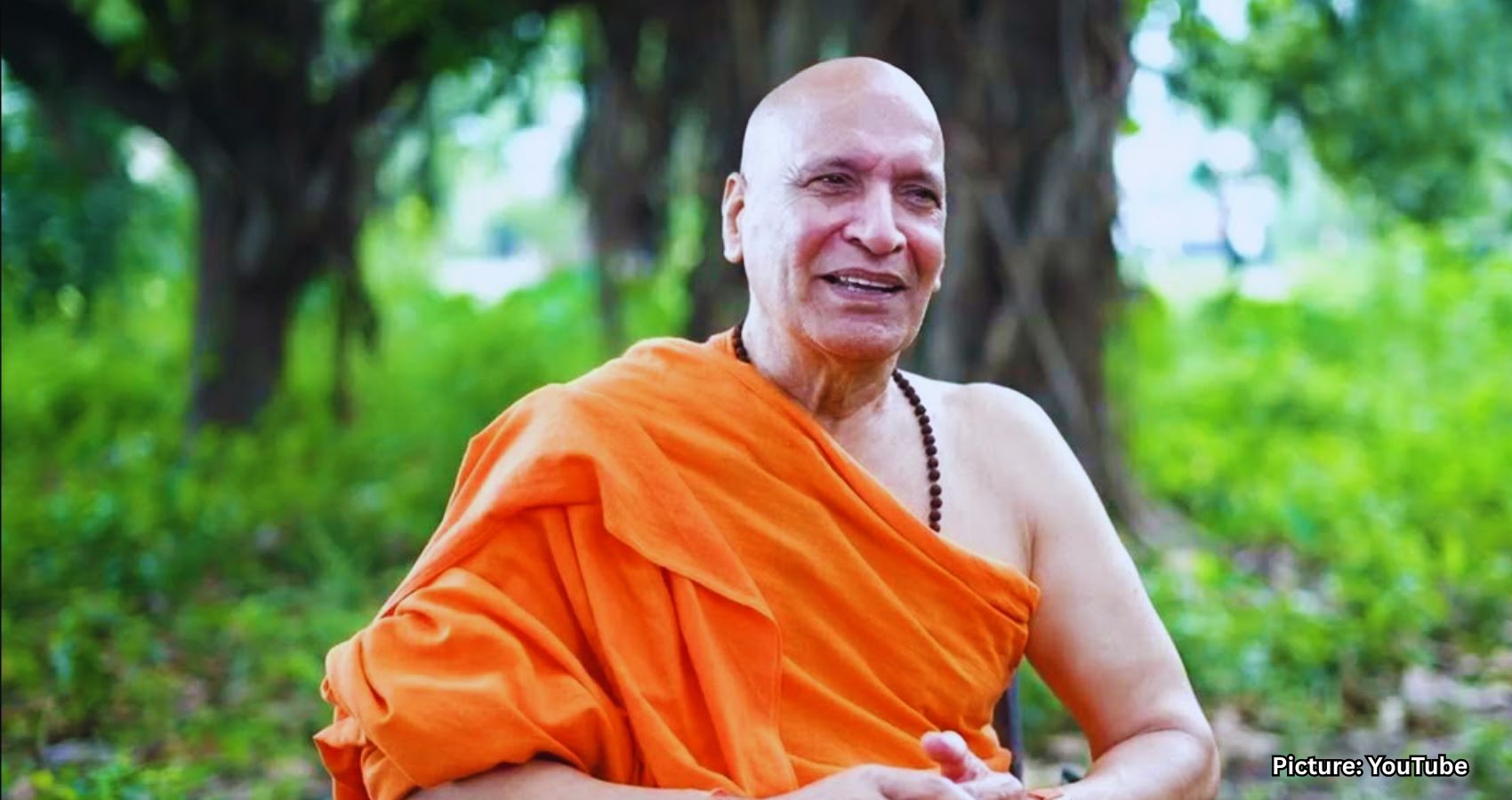
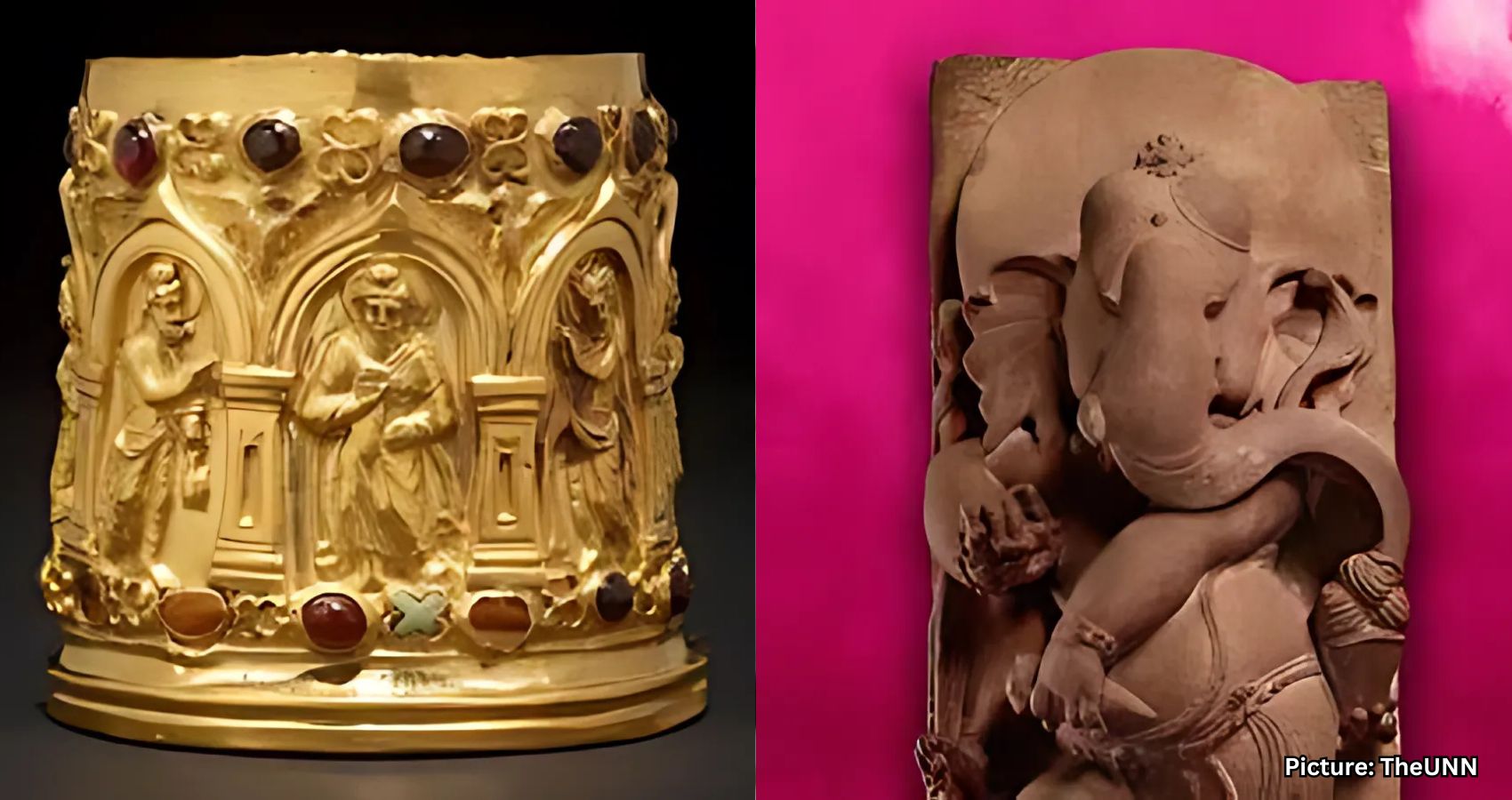
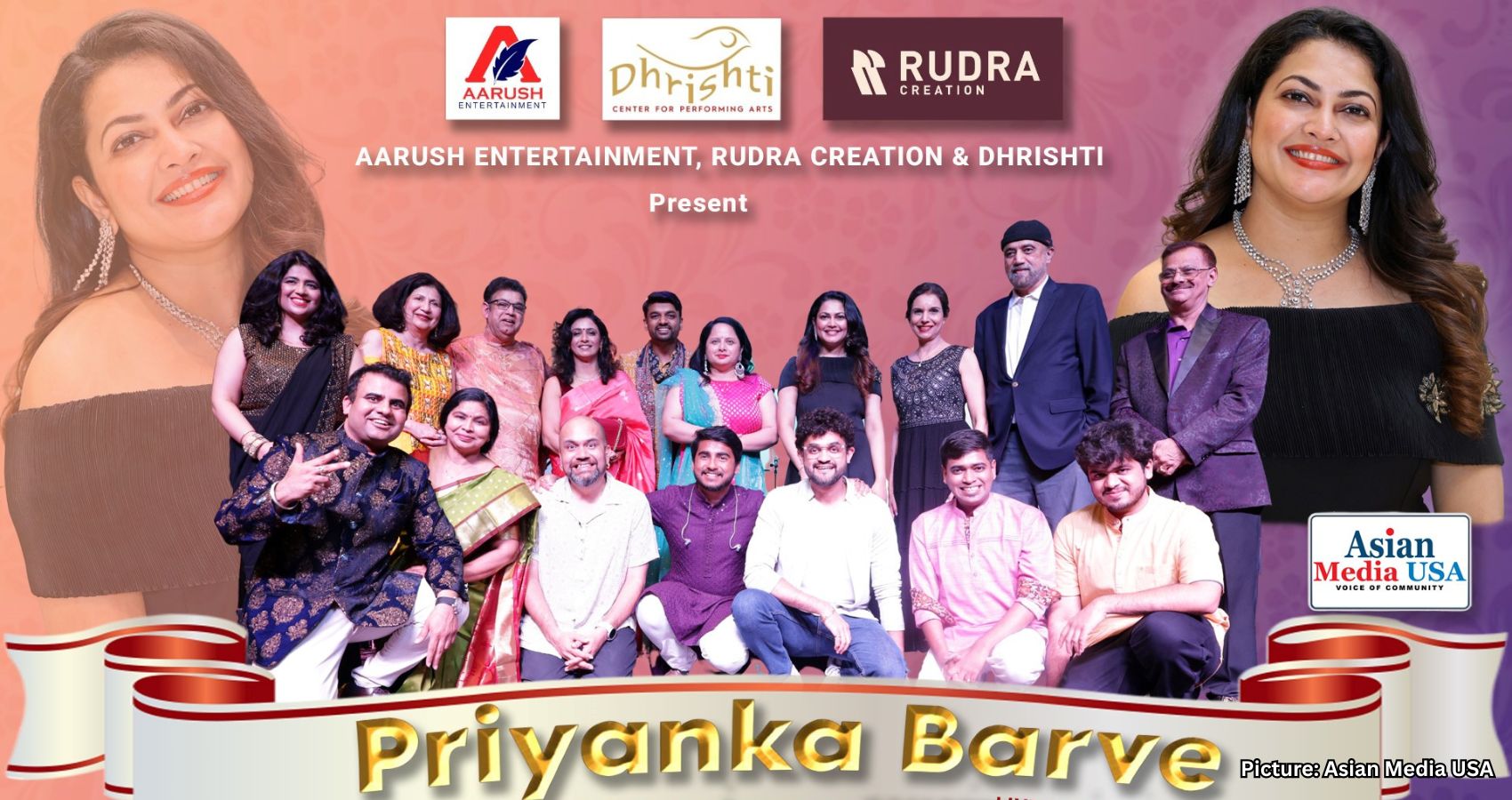
 On a warm evening in Chicago, excitement filled the air at The Matrix Club as music lovers gathered for an unforgettable night of melody and memories. On June 13, 2025, at 7:00 pm, the venue hosted a special event titled “Celebrating Legendary Divas: Mughal-E-Azam’s Anarkali,” presented by Aarush Entertainment, Rudra Creation, and Dhrishti. This performance by the renowned vocalist Priyanka Barve wasn’t merely a concert — it was an emotional tribute to the legendary voices that have shaped Indian music for generations.
On a warm evening in Chicago, excitement filled the air at The Matrix Club as music lovers gathered for an unforgettable night of melody and memories. On June 13, 2025, at 7:00 pm, the venue hosted a special event titled “Celebrating Legendary Divas: Mughal-E-Azam’s Anarkali,” presented by Aarush Entertainment, Rudra Creation, and Dhrishti. This performance by the renowned vocalist Priyanka Barve wasn’t merely a concert — it was an emotional tribute to the legendary voices that have shaped Indian music for generations.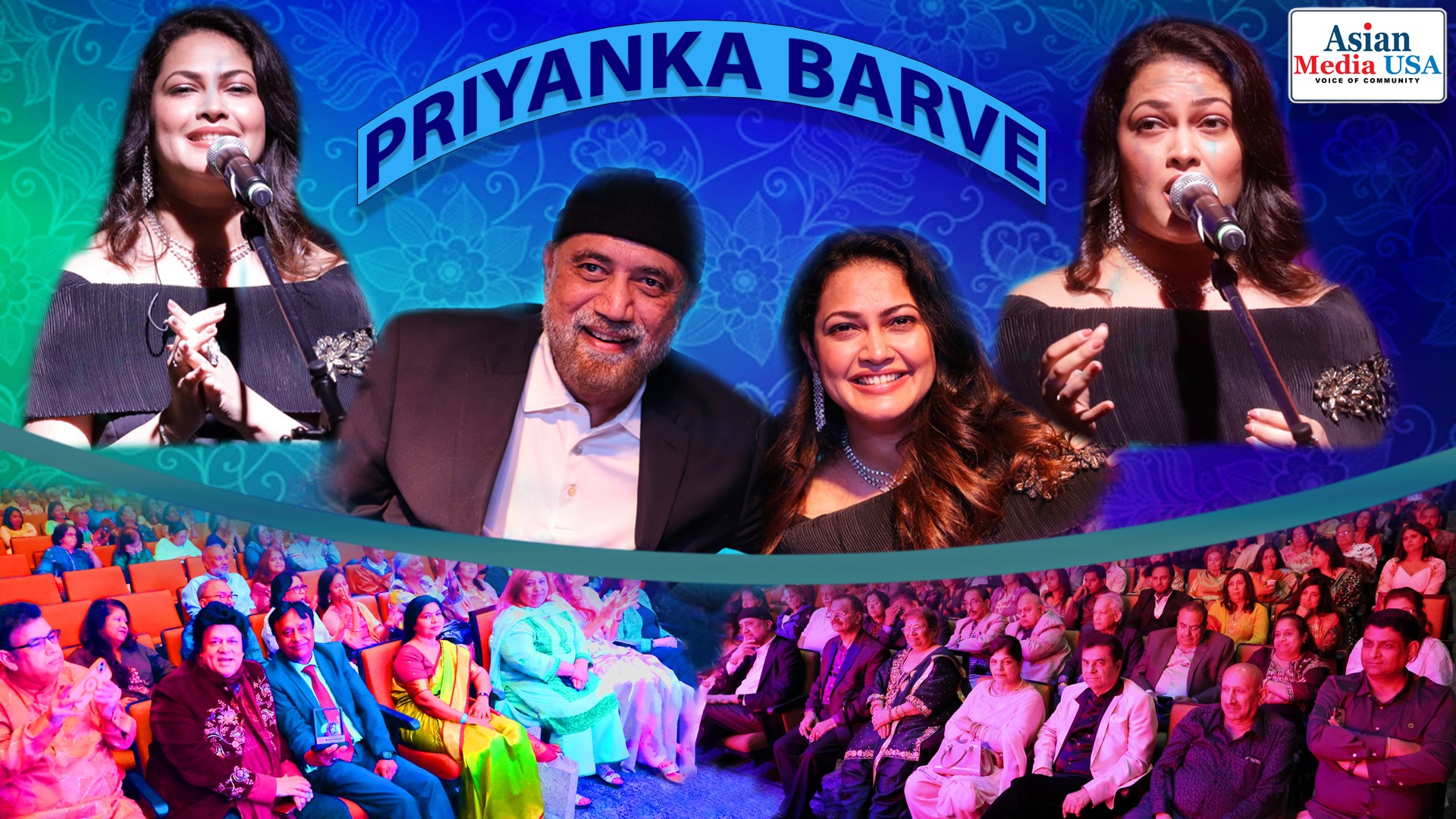 cultural heritage and musical expression. It was a full-house event, with attendees of all ages — families, friends, and music connoisseurs — coming together to immerse themselves in the musical legacy of India. The evening became a shared experience of nostalgia, reverence, and joy, leaving a lasting impression on everyone present.
cultural heritage and musical expression. It was a full-house event, with attendees of all ages — families, friends, and music connoisseurs — coming together to immerse themselves in the musical legacy of India. The evening became a shared experience of nostalgia, reverence, and joy, leaving a lasting impression on everyone present. with a contemporary touch has elevated her career, but it is her portrayal of Anarkali in the stage adaptation of Mughal-E-Azam that has set her apart as a multi-dimensional artist capable of merging voice, emotion, and stage presence seamlessly.
with a contemporary touch has elevated her career, but it is her portrayal of Anarkali in the stage adaptation of Mughal-E-Azam that has set her apart as a multi-dimensional artist capable of merging voice, emotion, and stage presence seamlessly.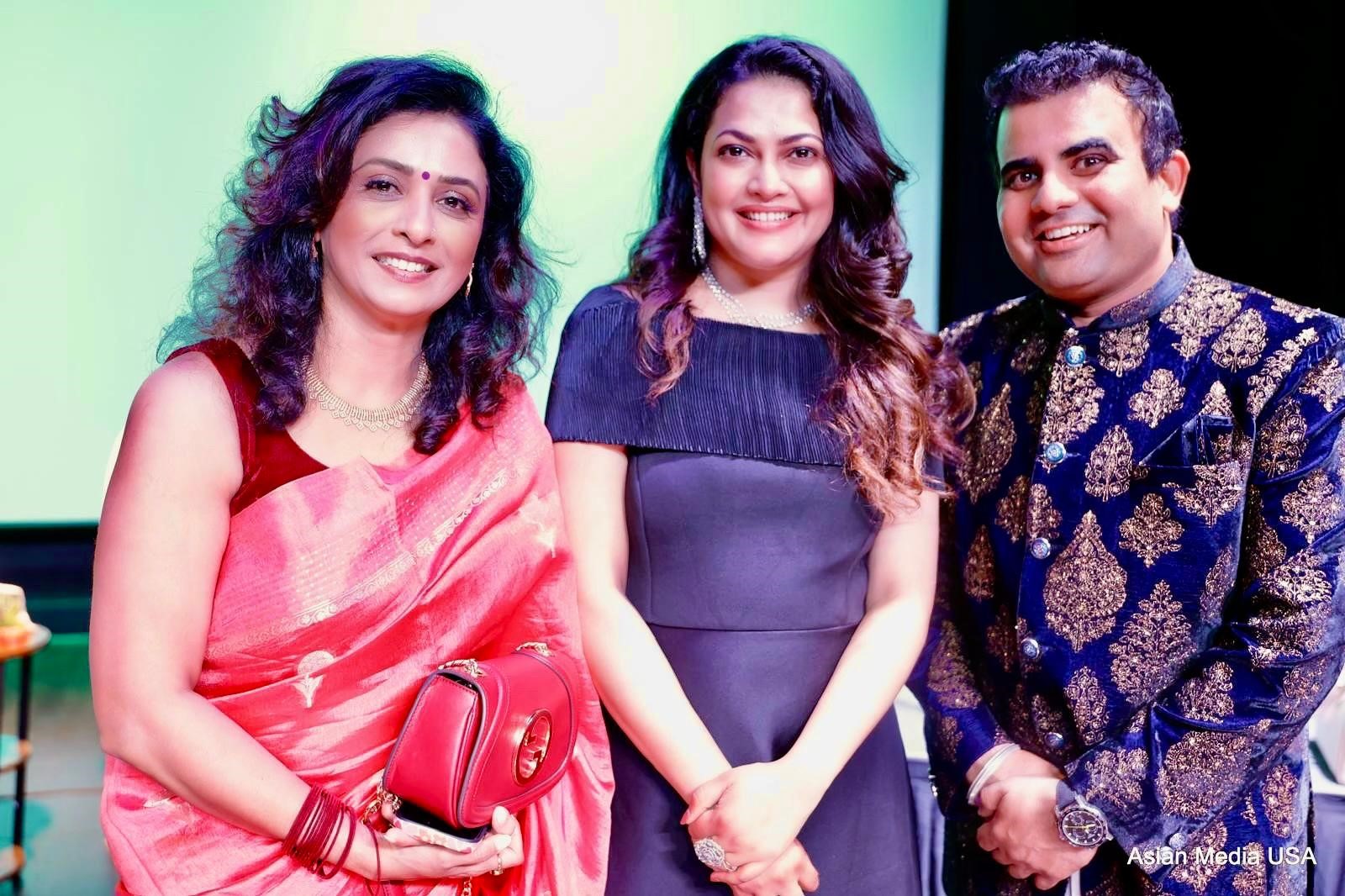 evergreen or lifting spirits with an energetic number, her voice brought each song’s story to life.
evergreen or lifting spirits with an energetic number, her voice brought each song’s story to life.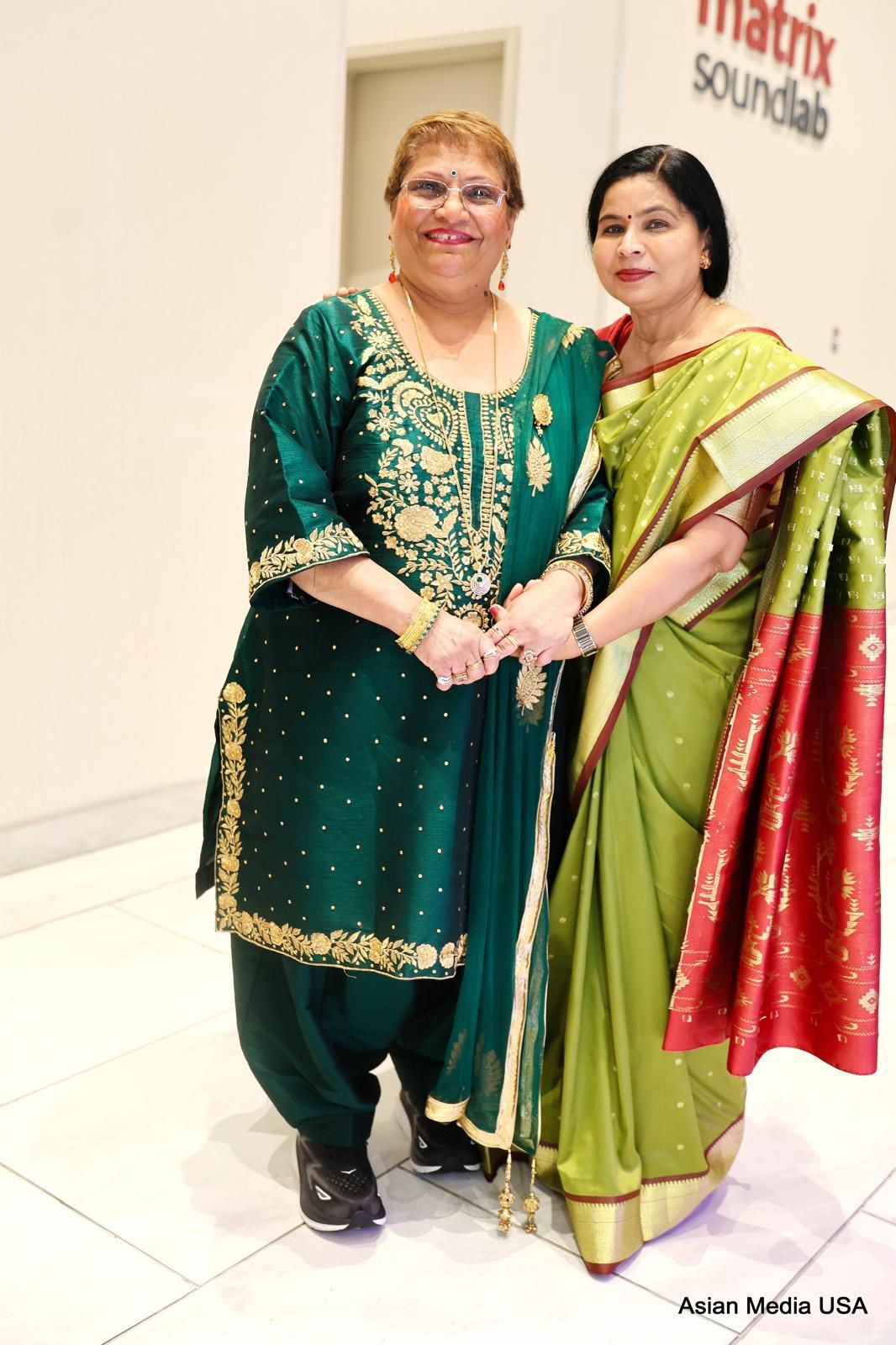 Priyanka also spoke fondly of her personal connection with Chicago. “I was 21 when I first performed here. The love from this diverse audience — people from Karnataka, Maharashtra, and beyond — was overwhelming. Coming back feels like coming home,” she said, expressing her appreciation for the warmth and support of the city’s multicultural community.
Priyanka also spoke fondly of her personal connection with Chicago. “I was 21 when I first performed here. The love from this diverse audience — people from Karnataka, Maharashtra, and beyond — was overwhelming. Coming back feels like coming home,” she said, expressing her appreciation for the warmth and support of the city’s multicultural community.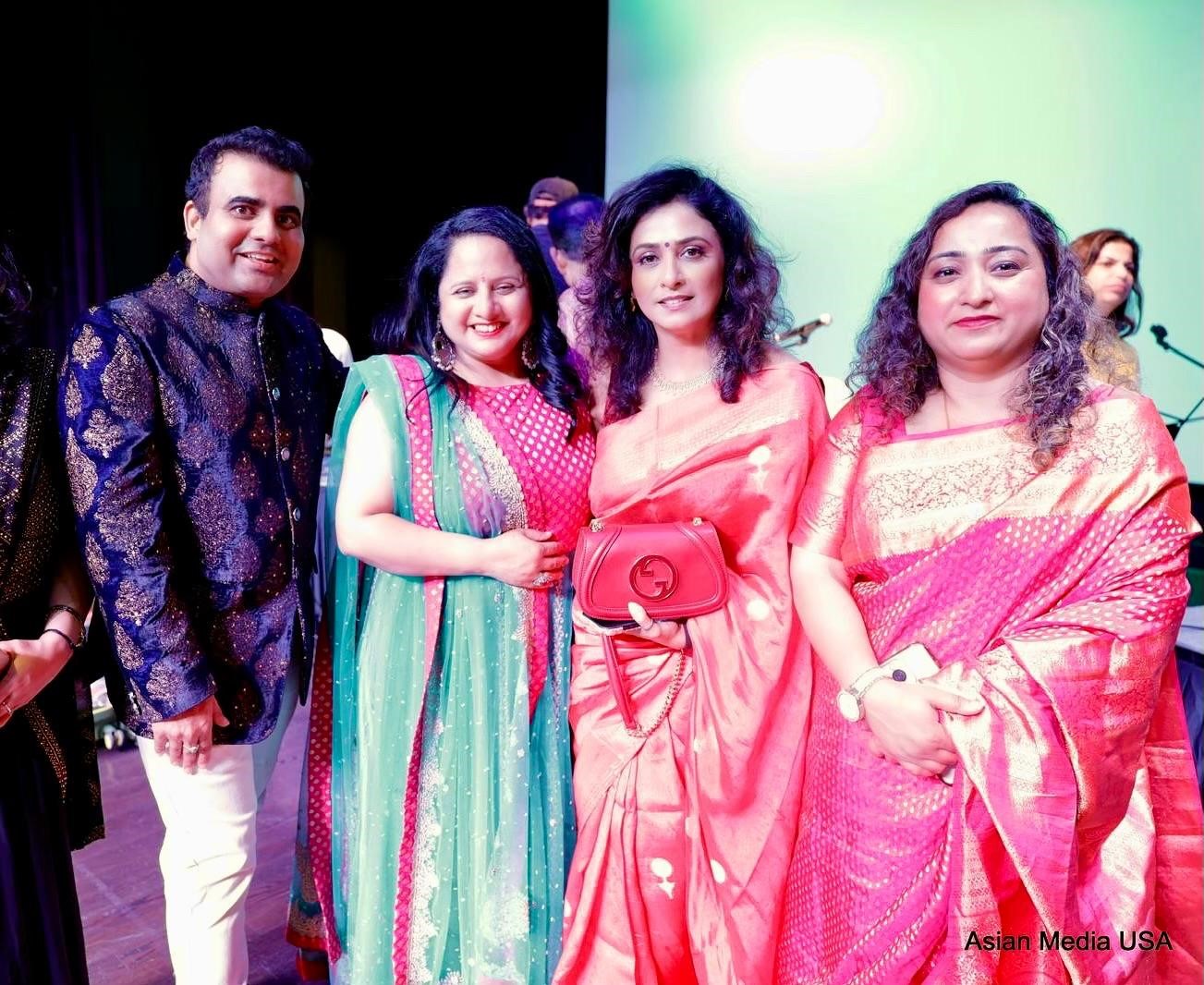 expressed their deep gratitude to everyone who attended, as well as to the sponsors and fellow organizers who contributed to making the evening a grand success. Their collaborative effort with Rajkumari Rathod of Rudra Creations and Dhrishti demonstrated a shared passion for promoting rich cultural experiences. “This night was not just about the music; it was about honoring our rich culture and the unity we find in it. We’re proud to bring Priyanka Barve to Chicago — a true musical gem,” said the team, underlining the emotional and cultural significance of the occasion.
expressed their deep gratitude to everyone who attended, as well as to the sponsors and fellow organizers who contributed to making the evening a grand success. Their collaborative effort with Rajkumari Rathod of Rudra Creations and Dhrishti demonstrated a shared passion for promoting rich cultural experiences. “This night was not just about the music; it was about honoring our rich culture and the unity we find in it. We’re proud to bring Priyanka Barve to Chicago — a true musical gem,” said the team, underlining the emotional and cultural significance of the occasion.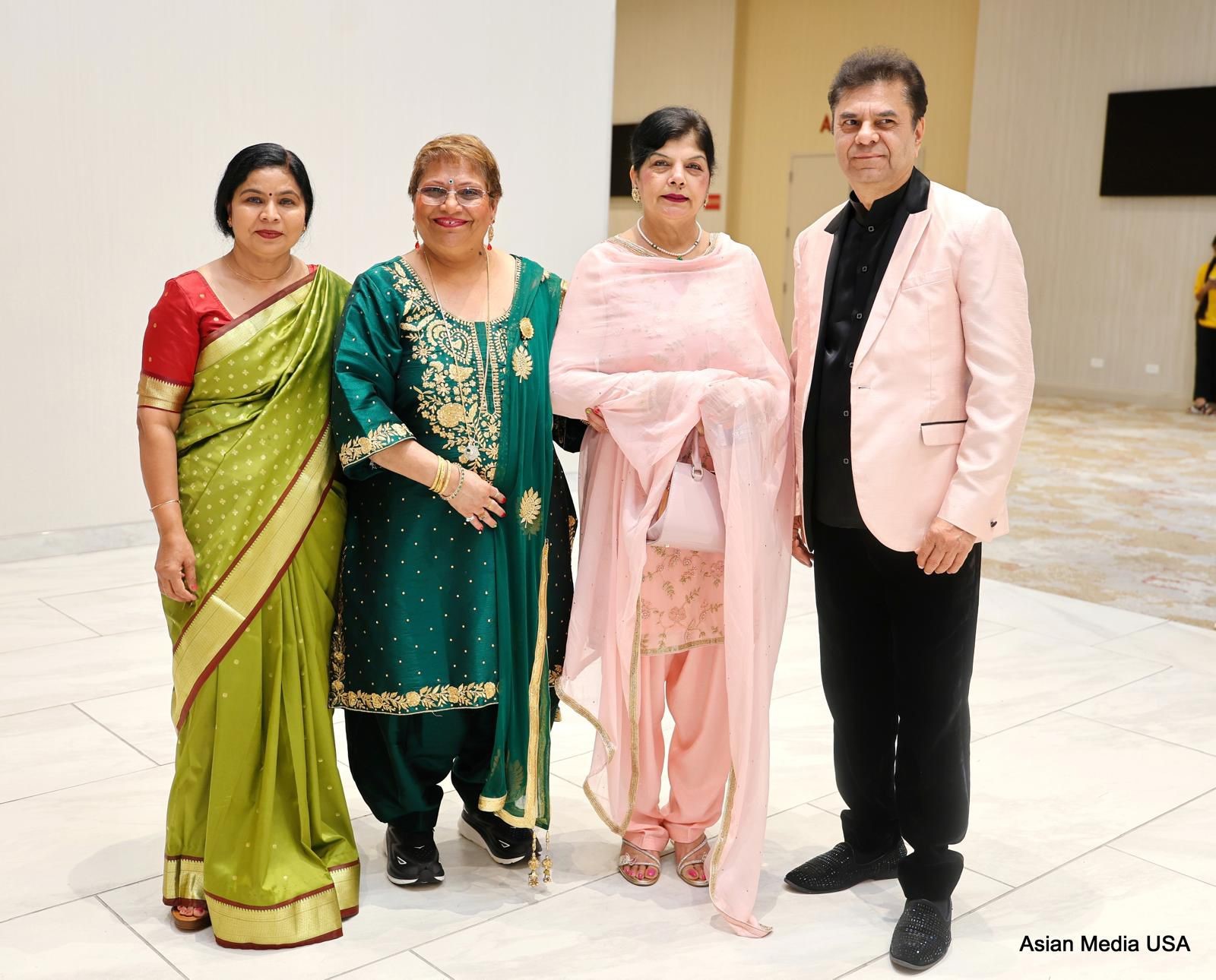 Suresh Bodiwala, Chairman of Asian Media USA, echoed the importance of the concert in highlighting the role of cultural unity through the arts. “We are proud to support Priyanka Barve’s extraordinary concert, a celebration of musical excellence and cultural unity. This event underscores our commitment to promoting diverse artistic talent and fostering community engagement through the universal language of music,” he said. Recognizing the power of music to transcend boundaries, he praised the concert for honoring the timeless voices that continue to inspire. “She brought vocal magic to Chicago, paying homage to the legendary divas — Lata Mangeshkar, Asha Bhosle, Shreya Ghoshal — whose voices have defined generations,” he added.
Suresh Bodiwala, Chairman of Asian Media USA, echoed the importance of the concert in highlighting the role of cultural unity through the arts. “We are proud to support Priyanka Barve’s extraordinary concert, a celebration of musical excellence and cultural unity. This event underscores our commitment to promoting diverse artistic talent and fostering community engagement through the universal language of music,” he said. Recognizing the power of music to transcend boundaries, he praised the concert for honoring the timeless voices that continue to inspire. “She brought vocal magic to Chicago, paying homage to the legendary divas — Lata Mangeshkar, Asha Bhosle, Shreya Ghoshal — whose voices have defined generations,” he added.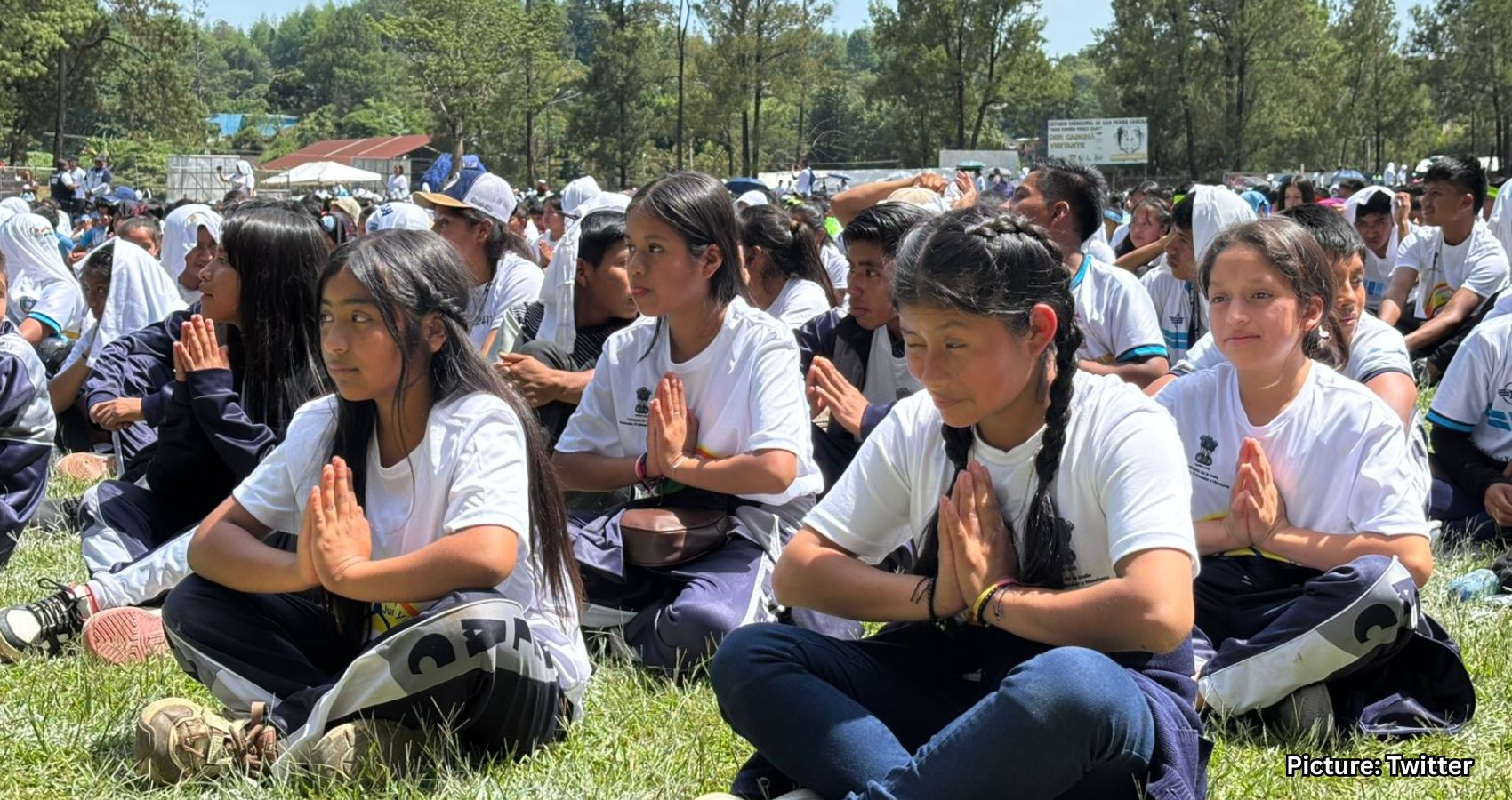
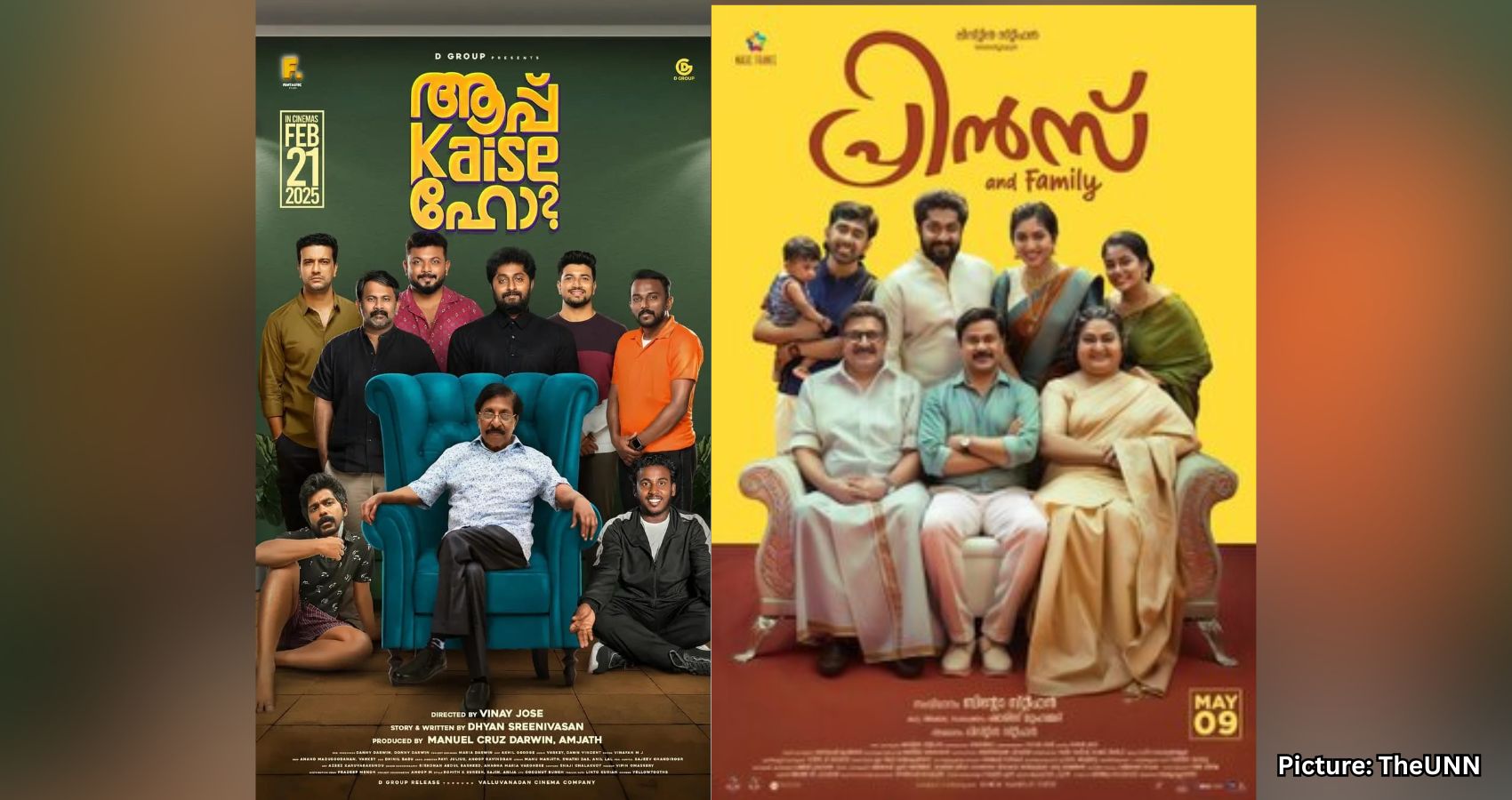
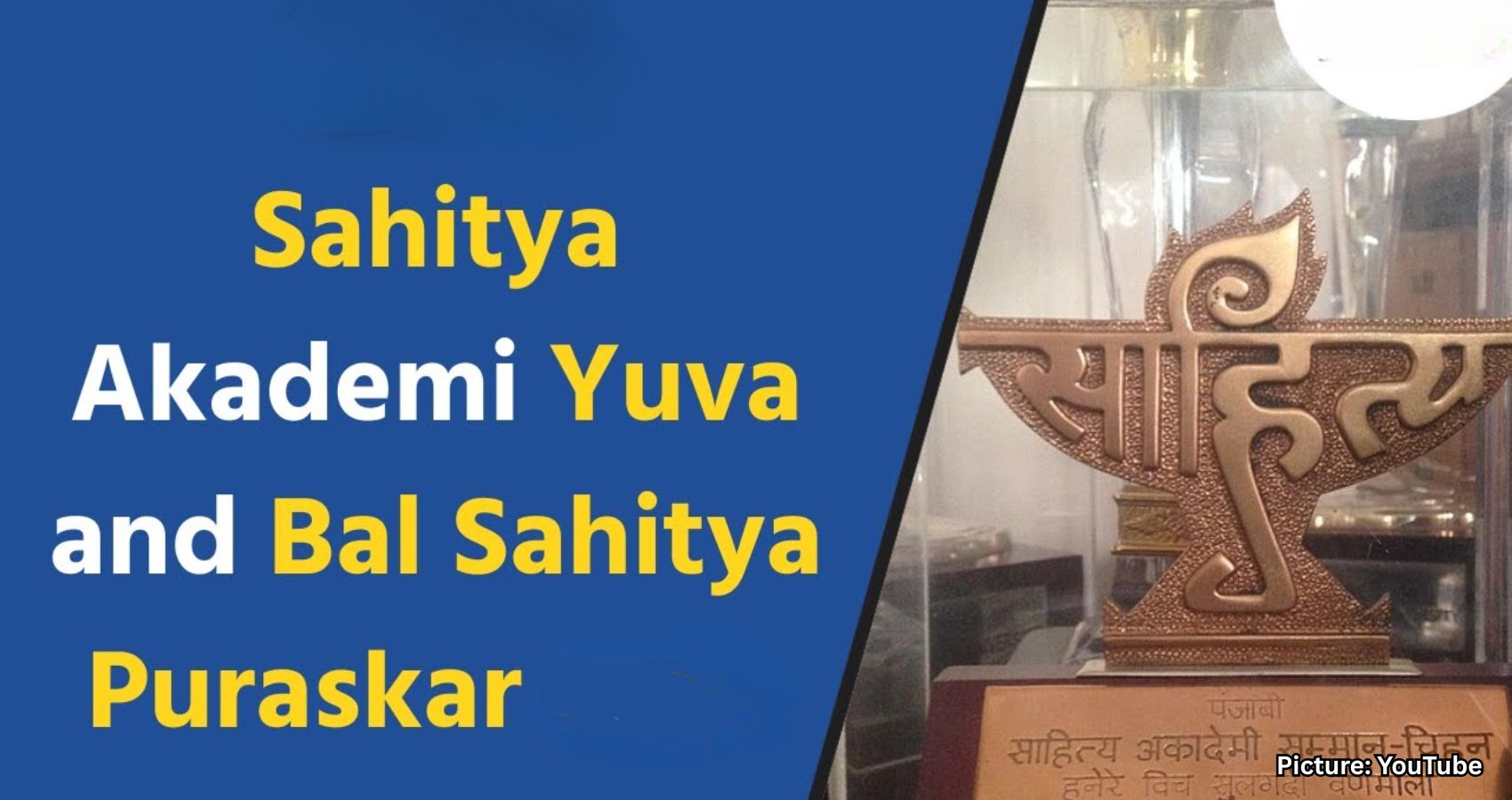

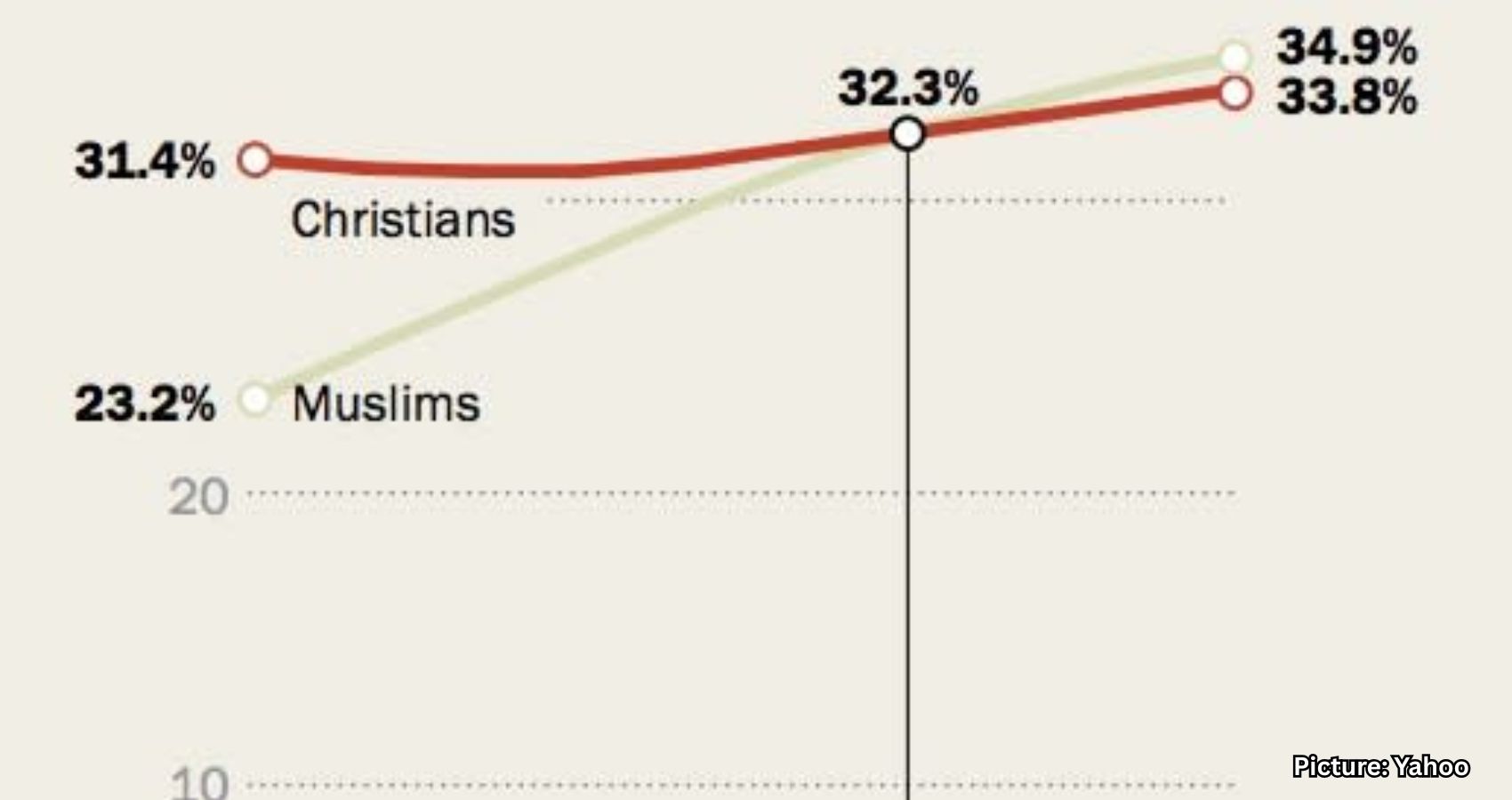

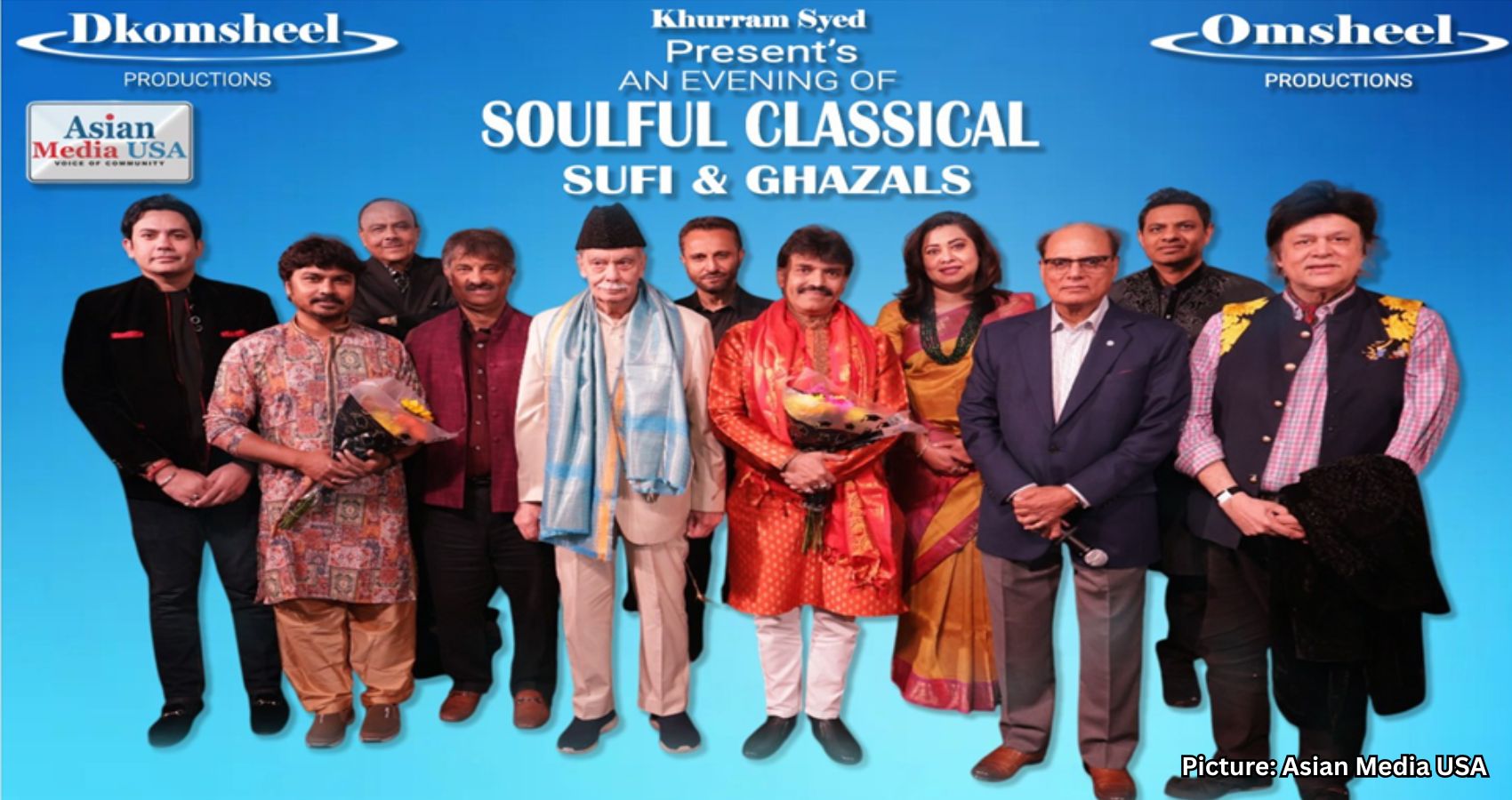
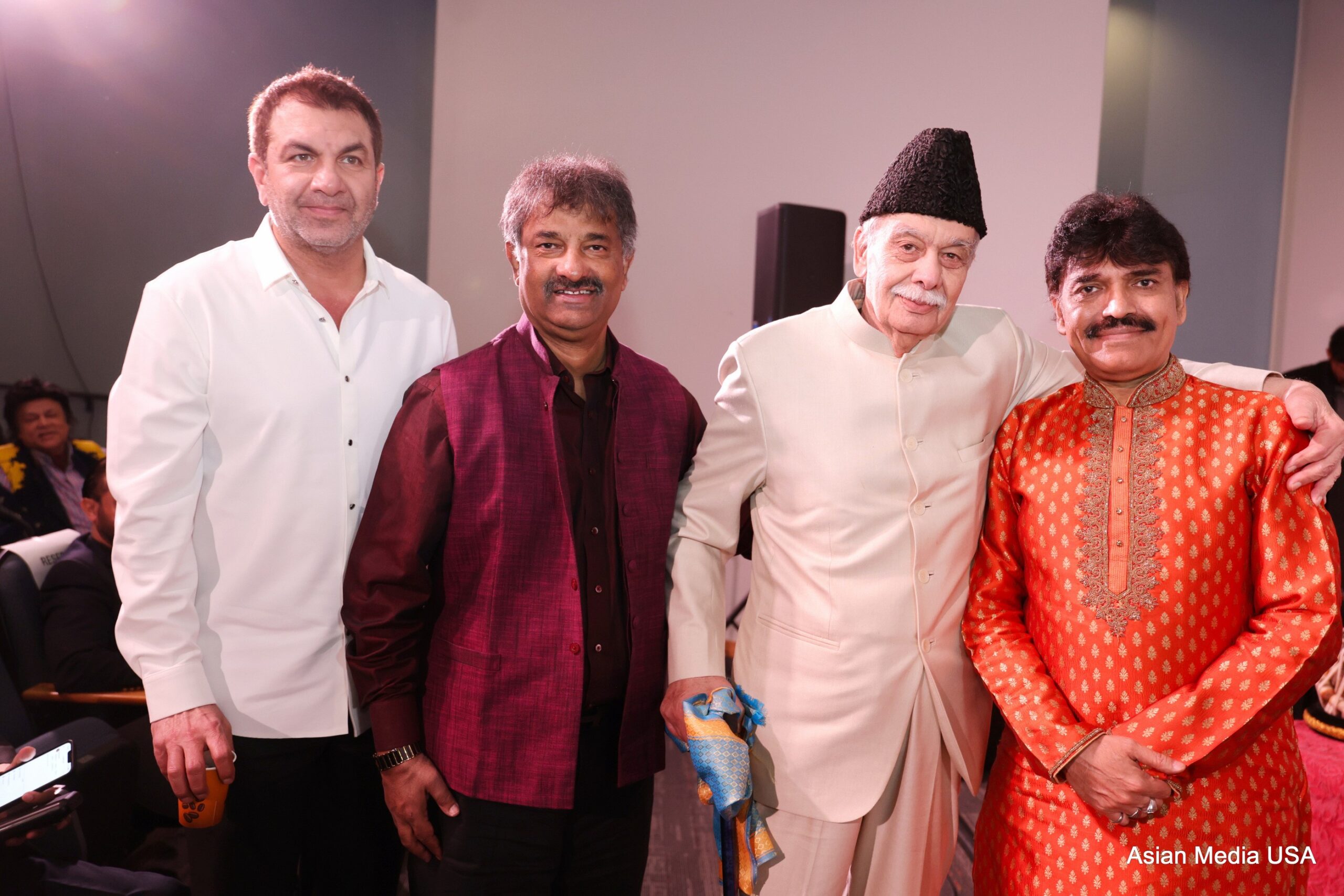 Serving as a cultural showcase and tribute to the enduring legacy of Indian classical music, the event harmonized tradition with emotional storytelling. Anchoring the evening was the eloquent Amin Haider, whose articulate hosting and thoughtful commentary added significant depth to the program. Haider’s narration was not just informative but evocative, highlighting several memorable moments from Ustad Ghulam Abbas Khan’s life and career. A particularly striking story he shared revolved around a young Ghulam Abbas, only 16 at the time, who had to perform Hindustani classical music at Delhi’s Daulat Ram College—a genre then unfamiliar to him. Despite his lack of experience, the young artist impressed none other than Pandit Debu Chaudhary. So captivated was the maestro that he interrupted the concert to tune the tanpura himself, allowing Ghulam Abbas to shine at his best. As Haider described, this story was emblematic of “the resilience and passion of a maestro whose name is synonymous with excellence.”
Serving as a cultural showcase and tribute to the enduring legacy of Indian classical music, the event harmonized tradition with emotional storytelling. Anchoring the evening was the eloquent Amin Haider, whose articulate hosting and thoughtful commentary added significant depth to the program. Haider’s narration was not just informative but evocative, highlighting several memorable moments from Ustad Ghulam Abbas Khan’s life and career. A particularly striking story he shared revolved around a young Ghulam Abbas, only 16 at the time, who had to perform Hindustani classical music at Delhi’s Daulat Ram College—a genre then unfamiliar to him. Despite his lack of experience, the young artist impressed none other than Pandit Debu Chaudhary. So captivated was the maestro that he interrupted the concert to tune the tanpura himself, allowing Ghulam Abbas to shine at his best. As Haider described, this story was emblematic of “the resilience and passion of a maestro whose name is synonymous with excellence.”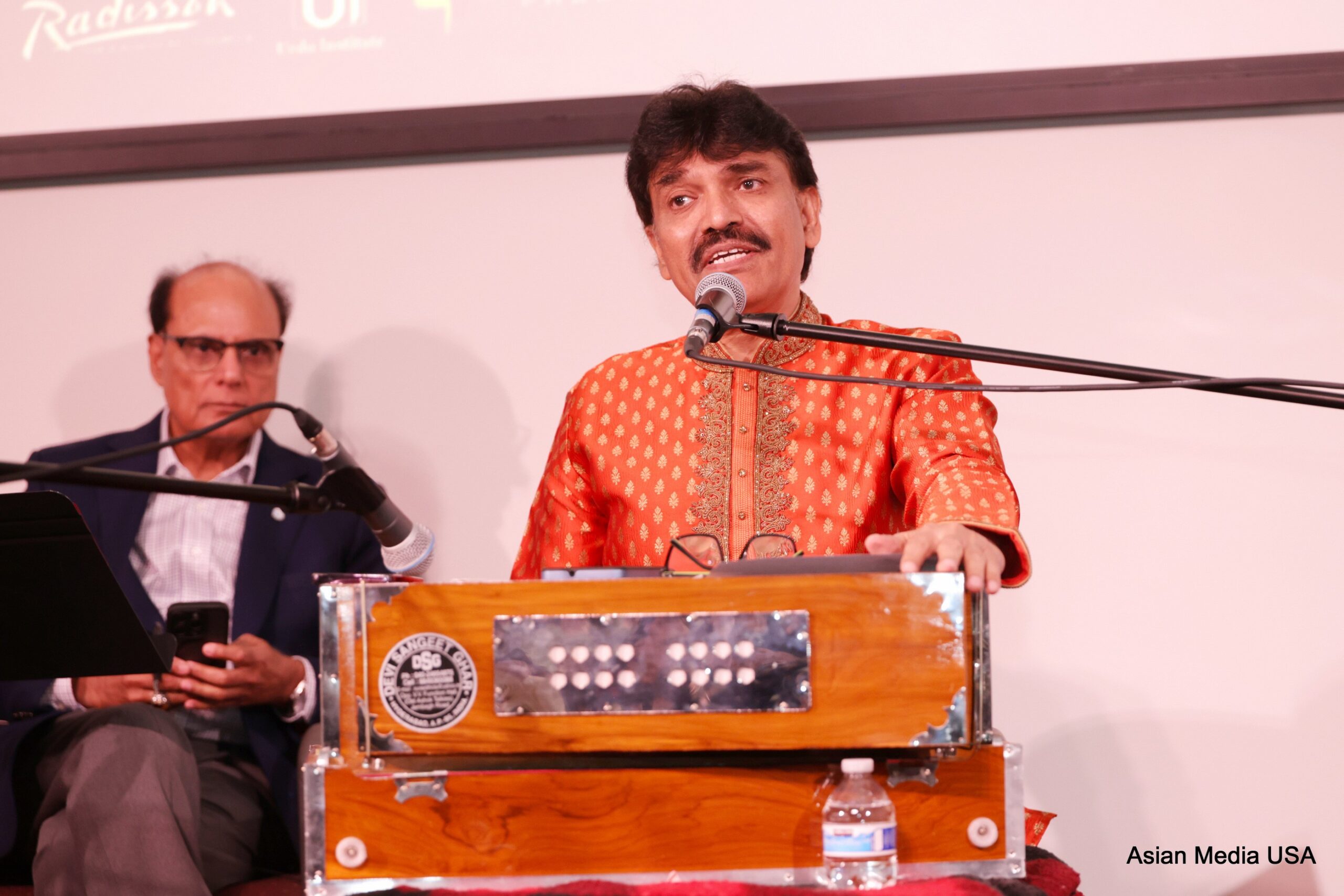 performance that was as spiritually uplifting as it was technically flawless. He seamlessly navigated an array of musical forms, from khayal and thumri to dadra, Sufi kalams, bhajans, and ghazals. Audiences were deeply moved by his performance of Raga Puriya Kalyan and original and traditional bandishes like “More Ghar Aaja” and “Ab To Tumhi Sang Lagan Lagai.” His ability to infuse these centuries-old compositions with fresh emotion and contemporary nuance was nothing short of mesmerizing. The performance bore the unmistakable imprint of his artistic lineage—being the son of Padmashri Ustad Ghulam Sadiq Khan, and the maternal grandson of Padmabhushan Ustad Mushtaq Husain Khan.
performance that was as spiritually uplifting as it was technically flawless. He seamlessly navigated an array of musical forms, from khayal and thumri to dadra, Sufi kalams, bhajans, and ghazals. Audiences were deeply moved by his performance of Raga Puriya Kalyan and original and traditional bandishes like “More Ghar Aaja” and “Ab To Tumhi Sang Lagan Lagai.” His ability to infuse these centuries-old compositions with fresh emotion and contemporary nuance was nothing short of mesmerizing. The performance bore the unmistakable imprint of his artistic lineage—being the son of Padmashri Ustad Ghulam Sadiq Khan, and the maternal grandson of Padmabhushan Ustad Mushtaq Husain Khan.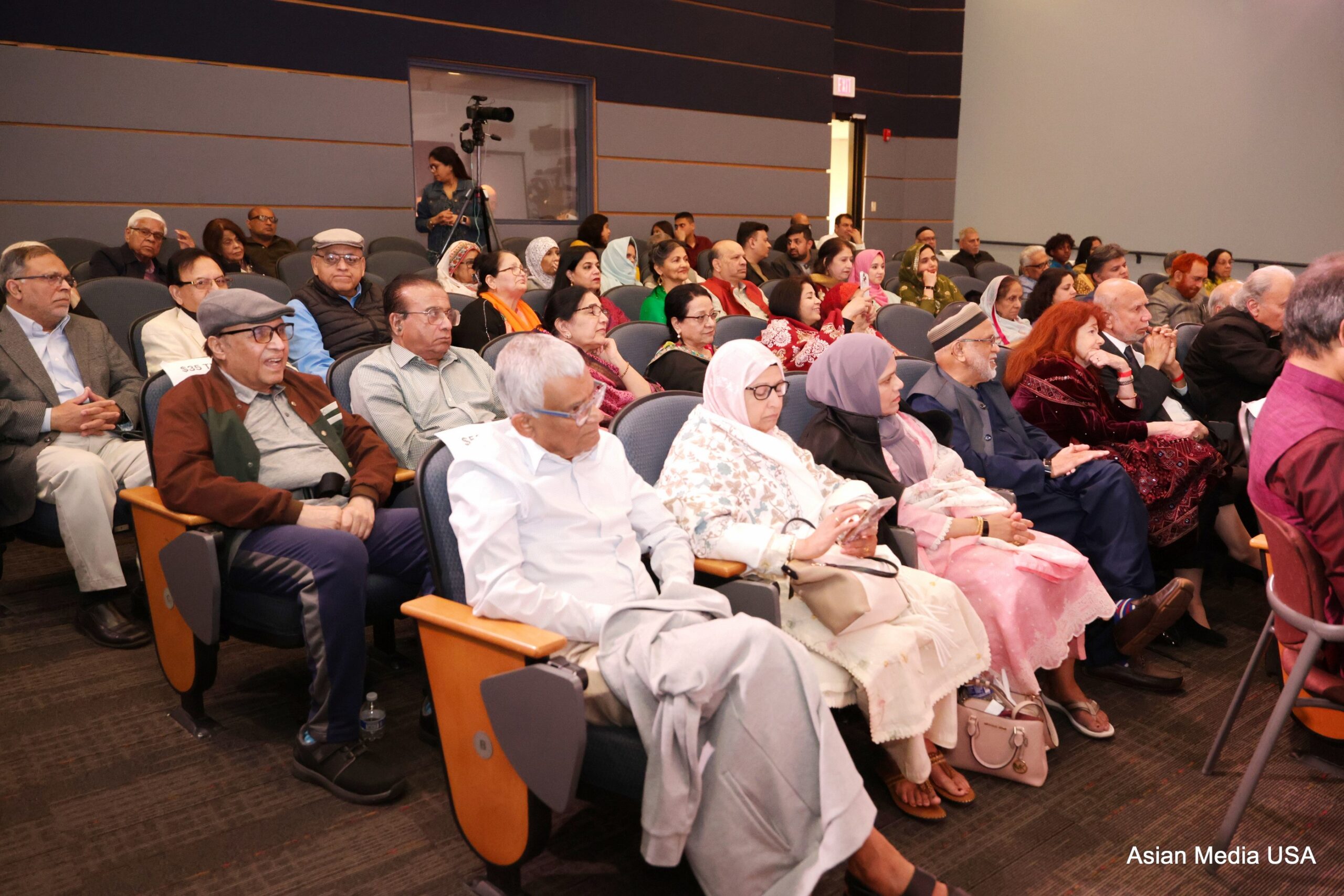 Adding a local flavor to the evening, Chicago-based vocalist Payel Ganguly gave a brief yet impactful performance that paid homage to the same musical traditions Ustad Ghulam Abbas embodies. Her rendition was heartfelt and authentic, resonating powerfully with the audience. The crowd responded with enthusiastic applause, affirming her rising status in the realm of classical music.
Adding a local flavor to the evening, Chicago-based vocalist Payel Ganguly gave a brief yet impactful performance that paid homage to the same musical traditions Ustad Ghulam Abbas embodies. Her rendition was heartfelt and authentic, resonating powerfully with the audience. The crowd responded with enthusiastic applause, affirming her rising status in the realm of classical music.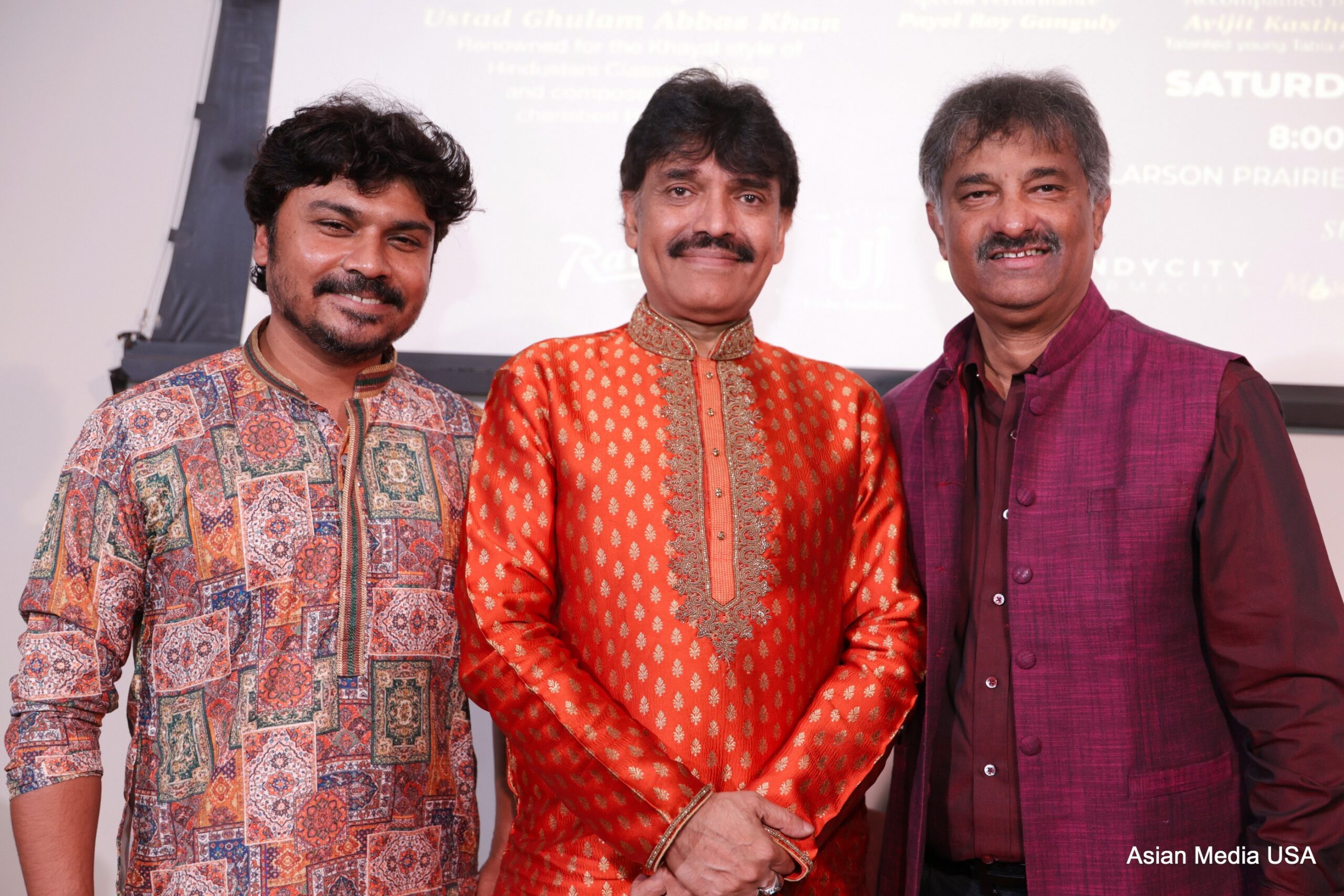 Kastha delivered a stunning rhythmic performance, displaying a maturity and finesse that belied his age. His intricate patterns and subtle flourishes aligned flawlessly with the vocal cadences, creating a musical dialogue that captivated listeners throughout the night.
Kastha delivered a stunning rhythmic performance, displaying a maturity and finesse that belied his age. His intricate patterns and subtle flourishes aligned flawlessly with the vocal cadences, creating a musical dialogue that captivated listeners throughout the night.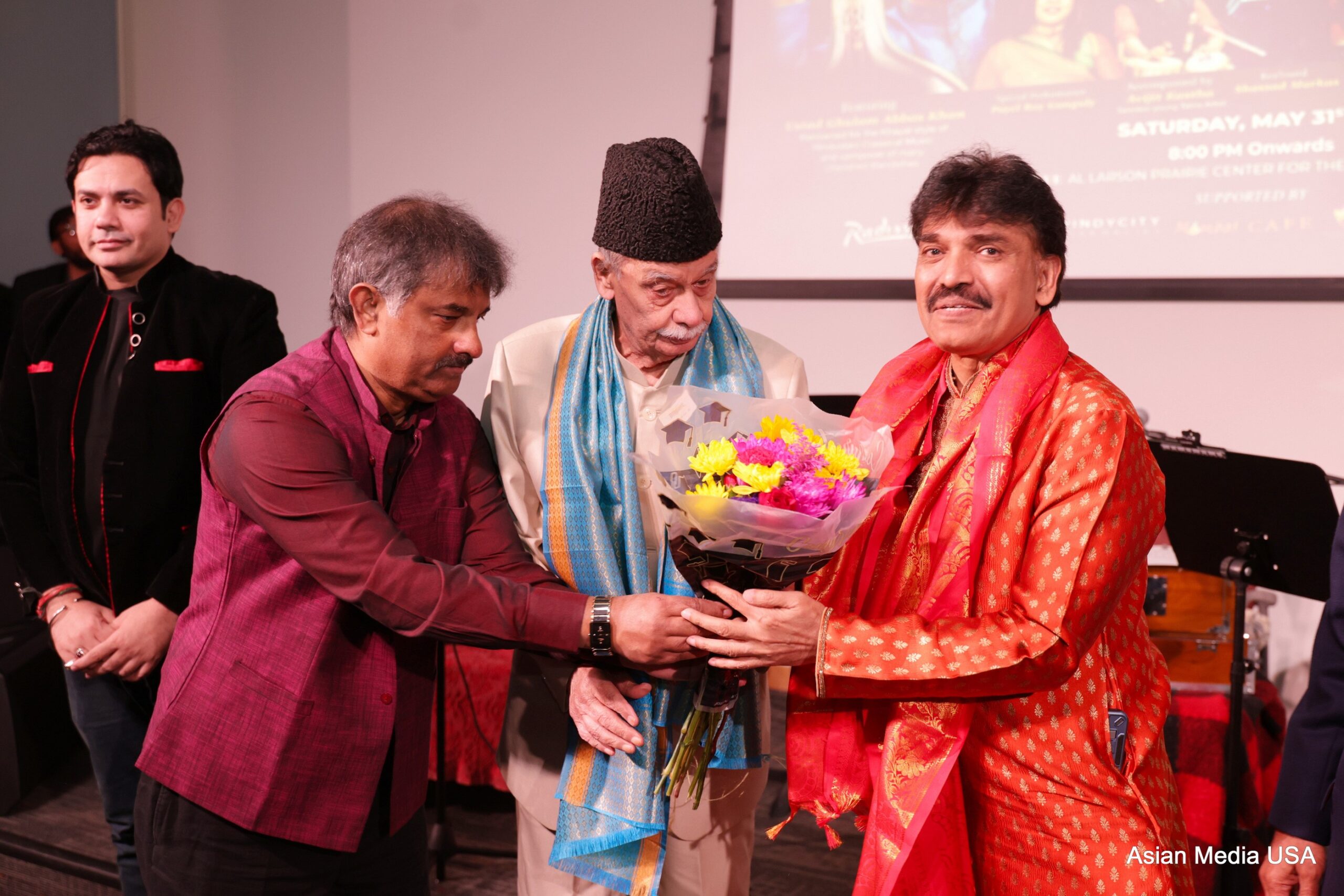 emphasizing the evening’s significance as a unifying cultural moment for the South Asian community in Chicago. Though Mr. Iftekhar Sharif, the designated chief guest, was unable to attend due to unforeseen scheduling issues, the event was graced by the esteemed ghazal singer Amir Mohammed Khan, who appeared as the Guest of Honor.
emphasizing the evening’s significance as a unifying cultural moment for the South Asian community in Chicago. Though Mr. Iftekhar Sharif, the designated chief guest, was unable to attend due to unforeseen scheduling issues, the event was graced by the esteemed ghazal singer Amir Mohammed Khan, who appeared as the Guest of Honor.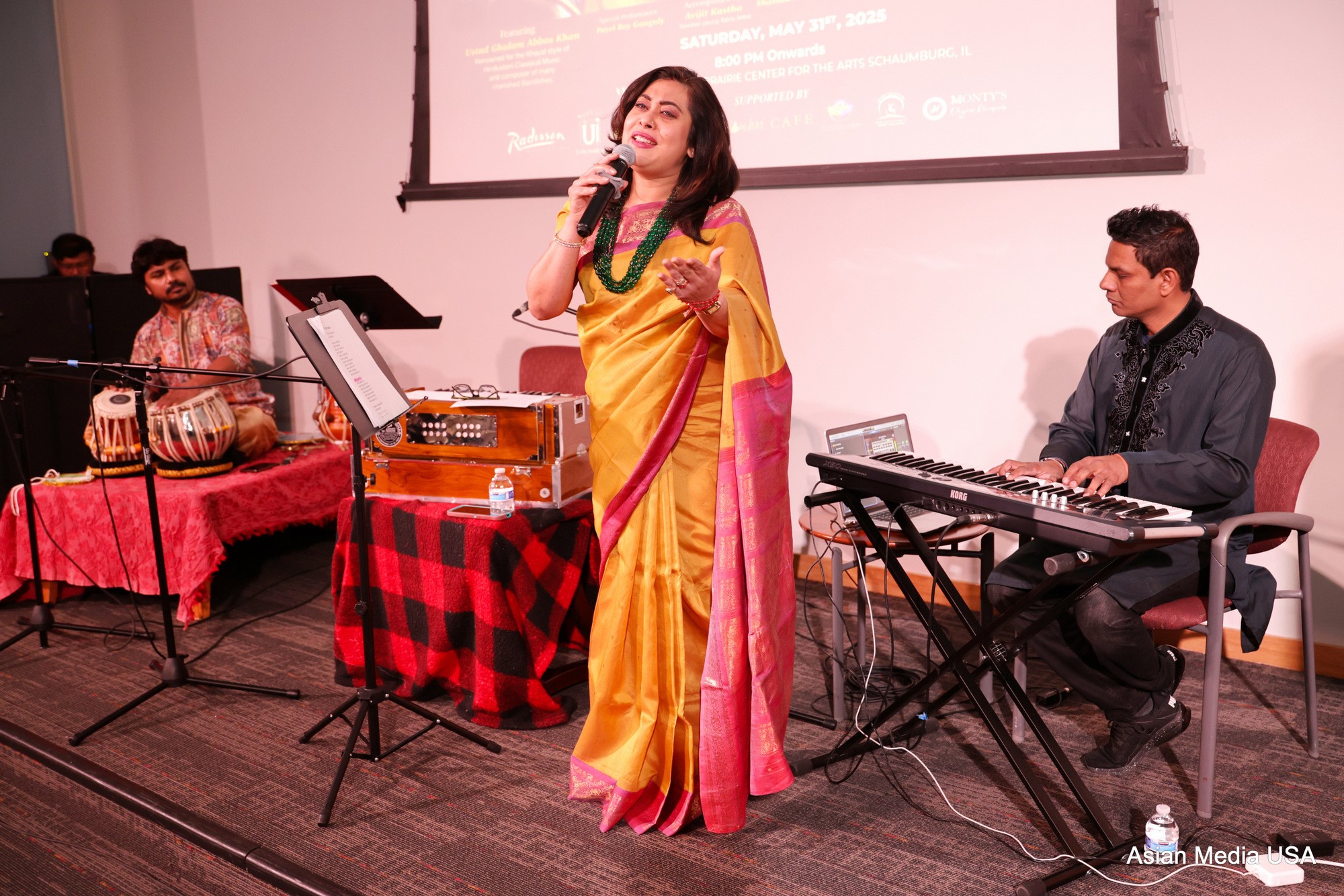 and contributions to Hindustani classical music have earned him several prestigious honors. These include the Central Fellowship Award from India’s Ministry of Culture, the Global Achievement Award in 2017, and the Dr. Radhakrishnan Award in 2018. One of the pinnacles of his career was a performance at the President’s House during the tenure of Dr. APJ Abdul Kalam—an event that remains a highlight in his professional journey.
and contributions to Hindustani classical music have earned him several prestigious honors. These include the Central Fellowship Award from India’s Ministry of Culture, the Global Achievement Award in 2017, and the Dr. Radhakrishnan Award in 2018. One of the pinnacles of his career was a performance at the President’s House during the tenure of Dr. APJ Abdul Kalam—an event that remains a highlight in his professional journey.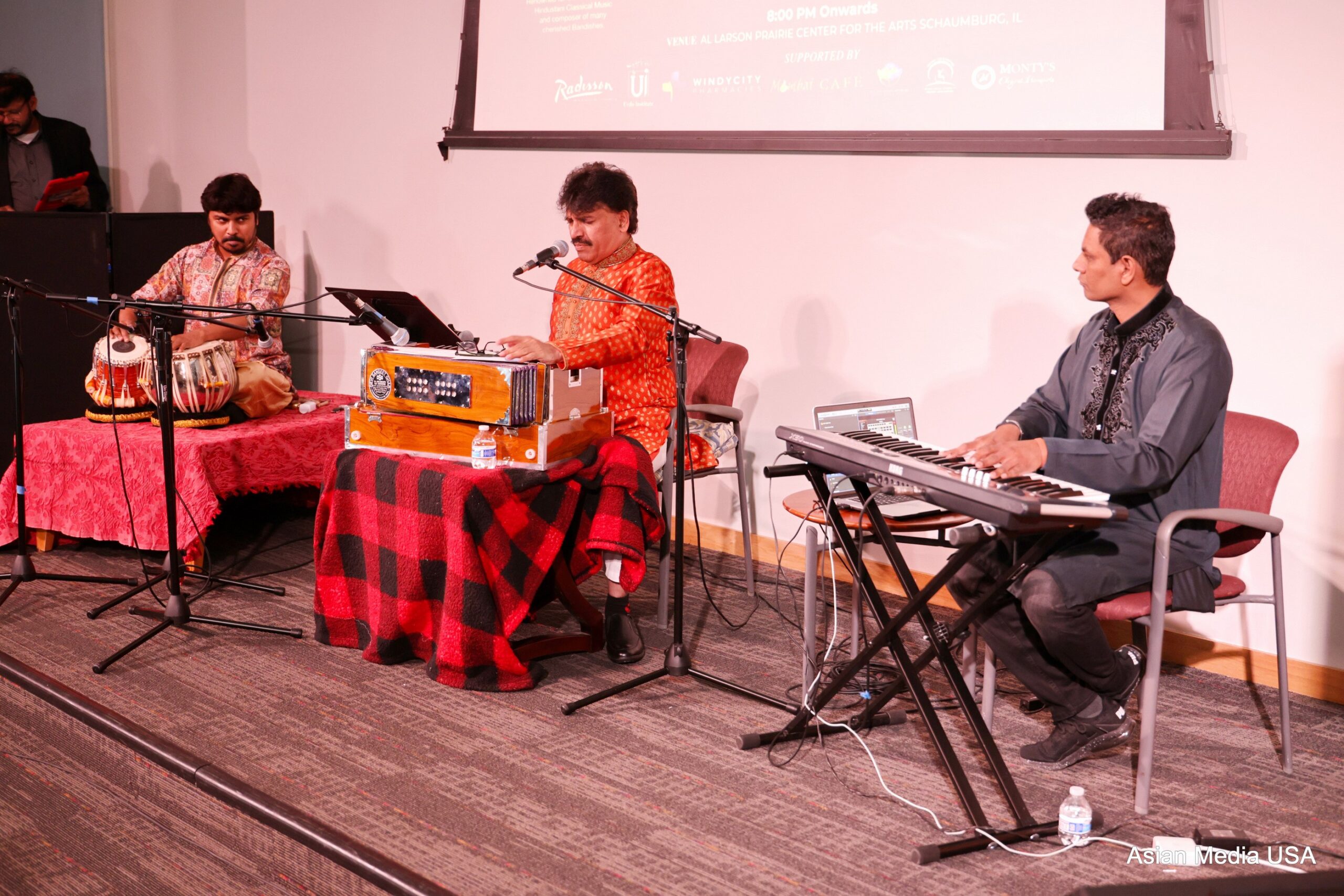 Ali’s Catering ensured that guests were well-fed, while Ena Agnihotri of the Radisson Hotel in Schaumburg provided additional hospitality support. Other significant contributors included the Urdu Institute and Aftab Baig of Monty’s Banquet. Their collective efforts helped transform the evening into more than just a concert—it became a holistic celebration of culture, heritage, and music.
Ali’s Catering ensured that guests were well-fed, while Ena Agnihotri of the Radisson Hotel in Schaumburg provided additional hospitality support. Other significant contributors included the Urdu Institute and Aftab Baig of Monty’s Banquet. Their collective efforts helped transform the evening into more than just a concert—it became a holistic celebration of culture, heritage, and music.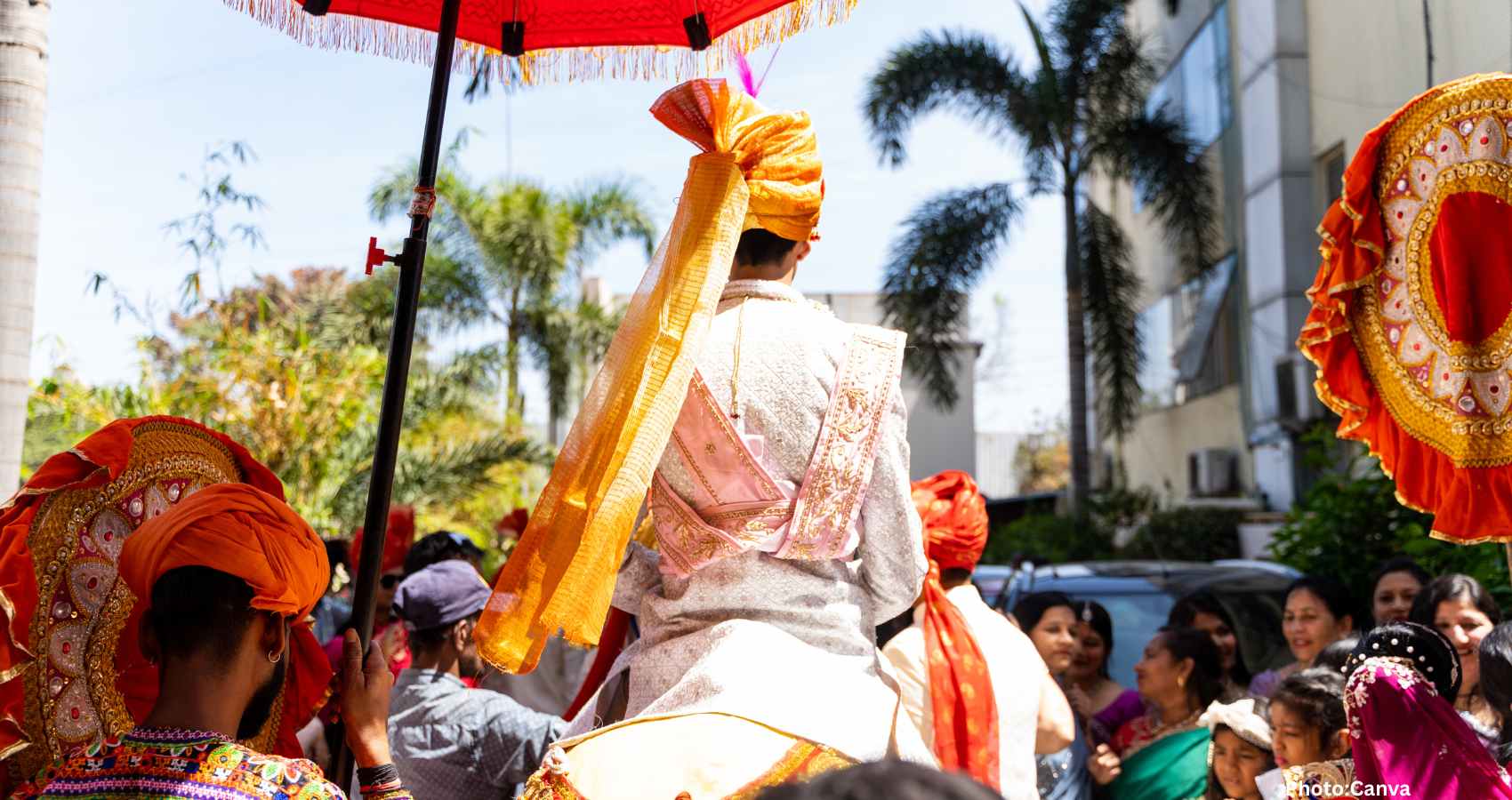

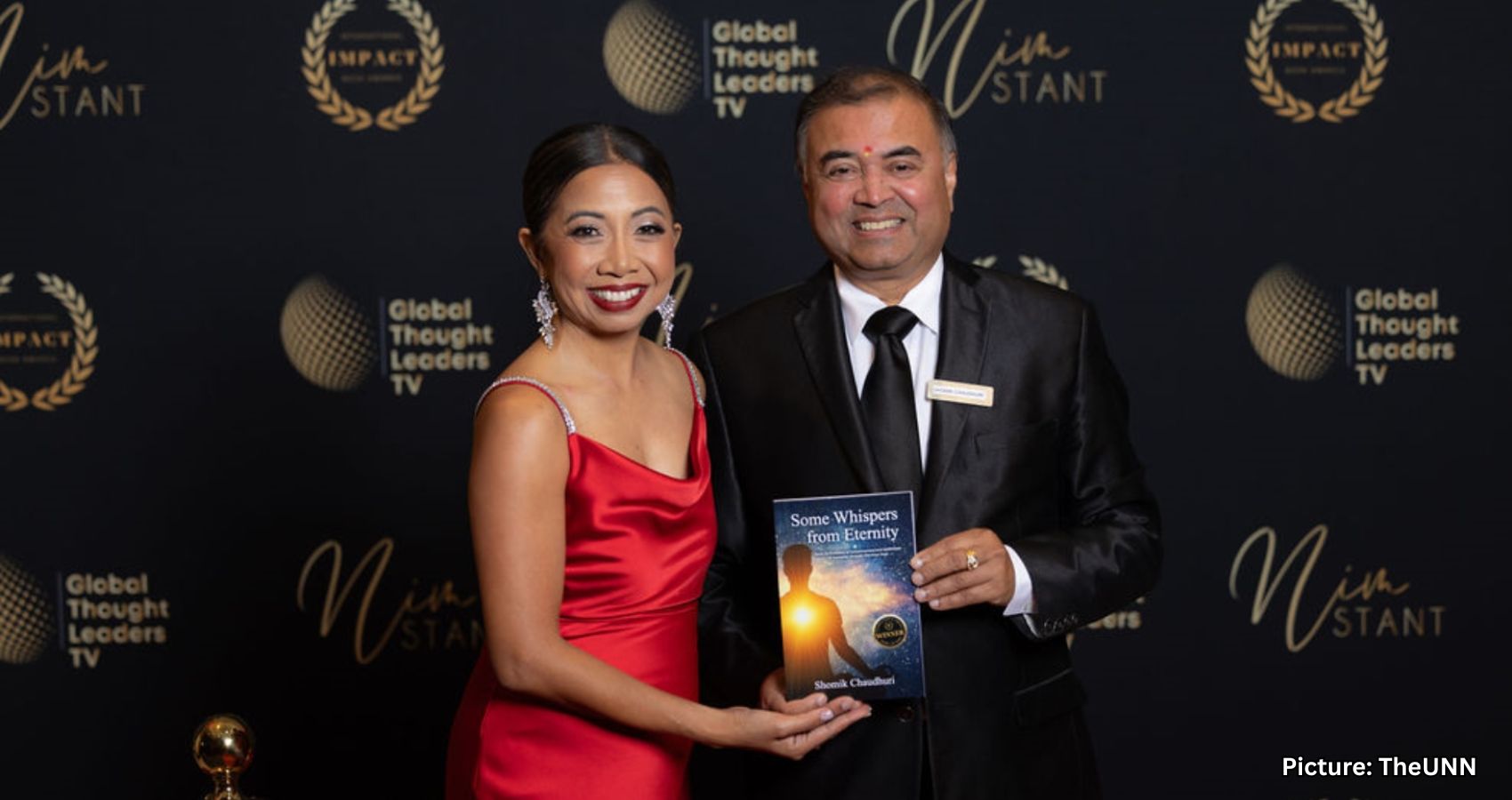
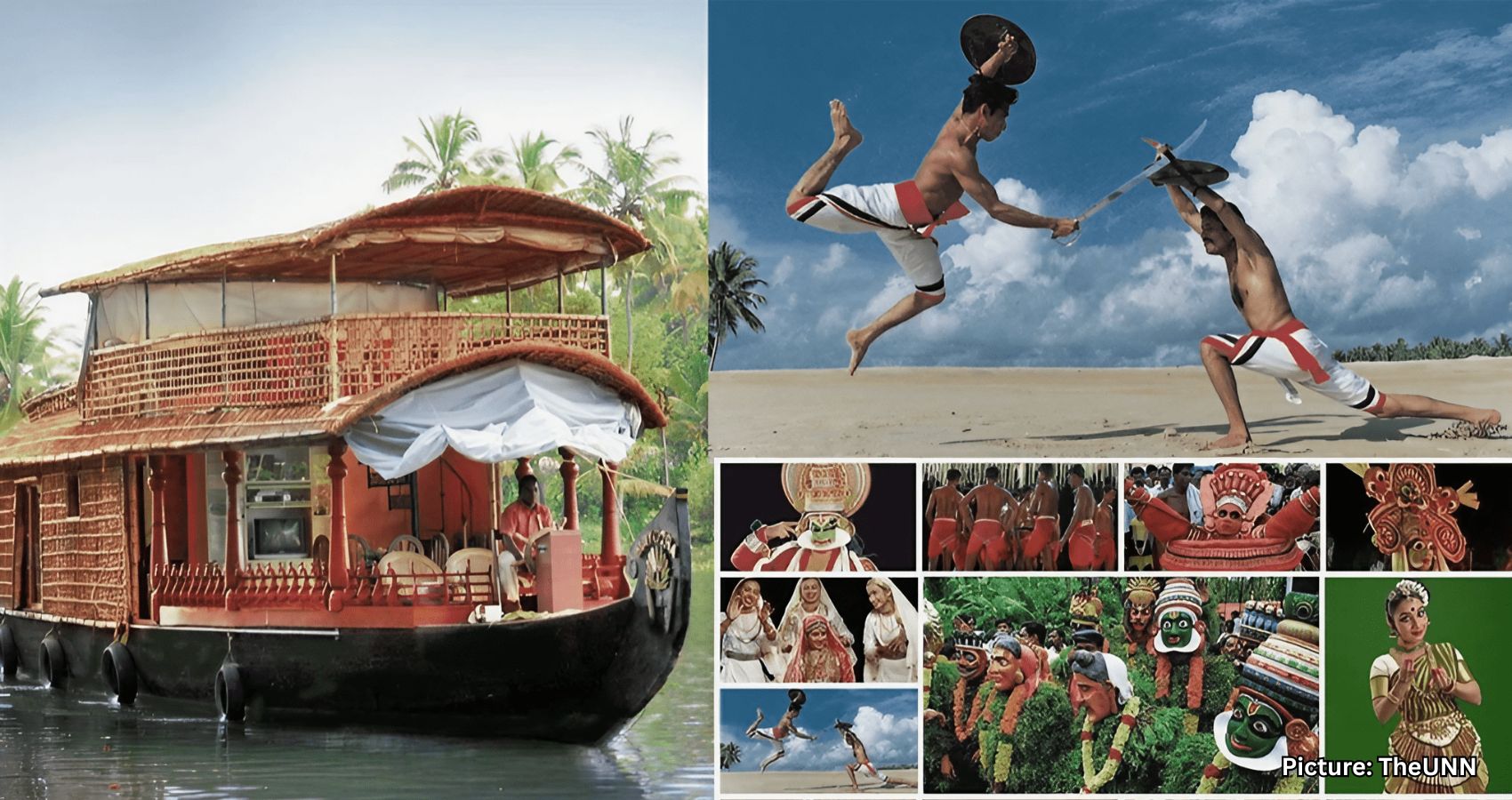
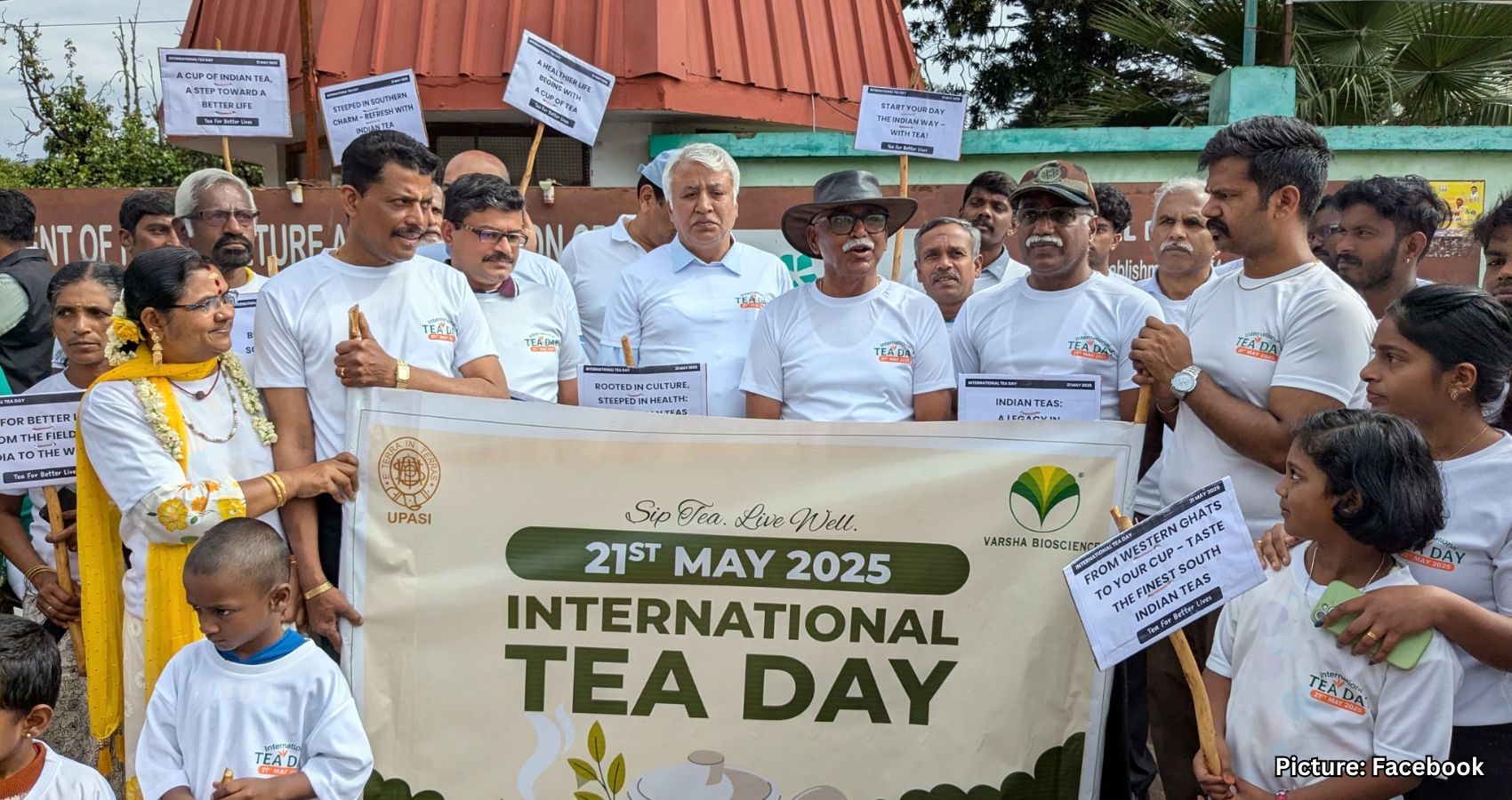

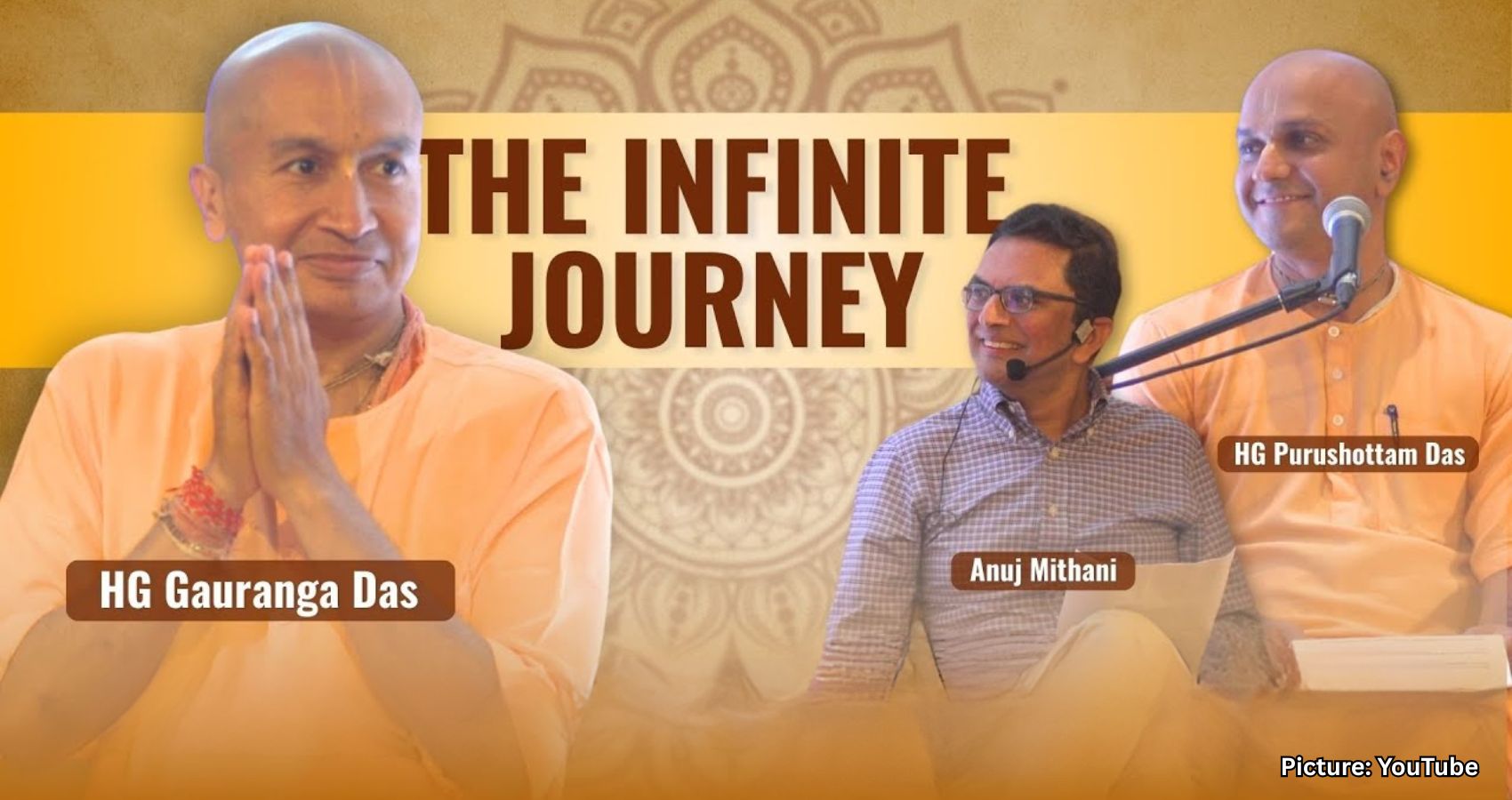
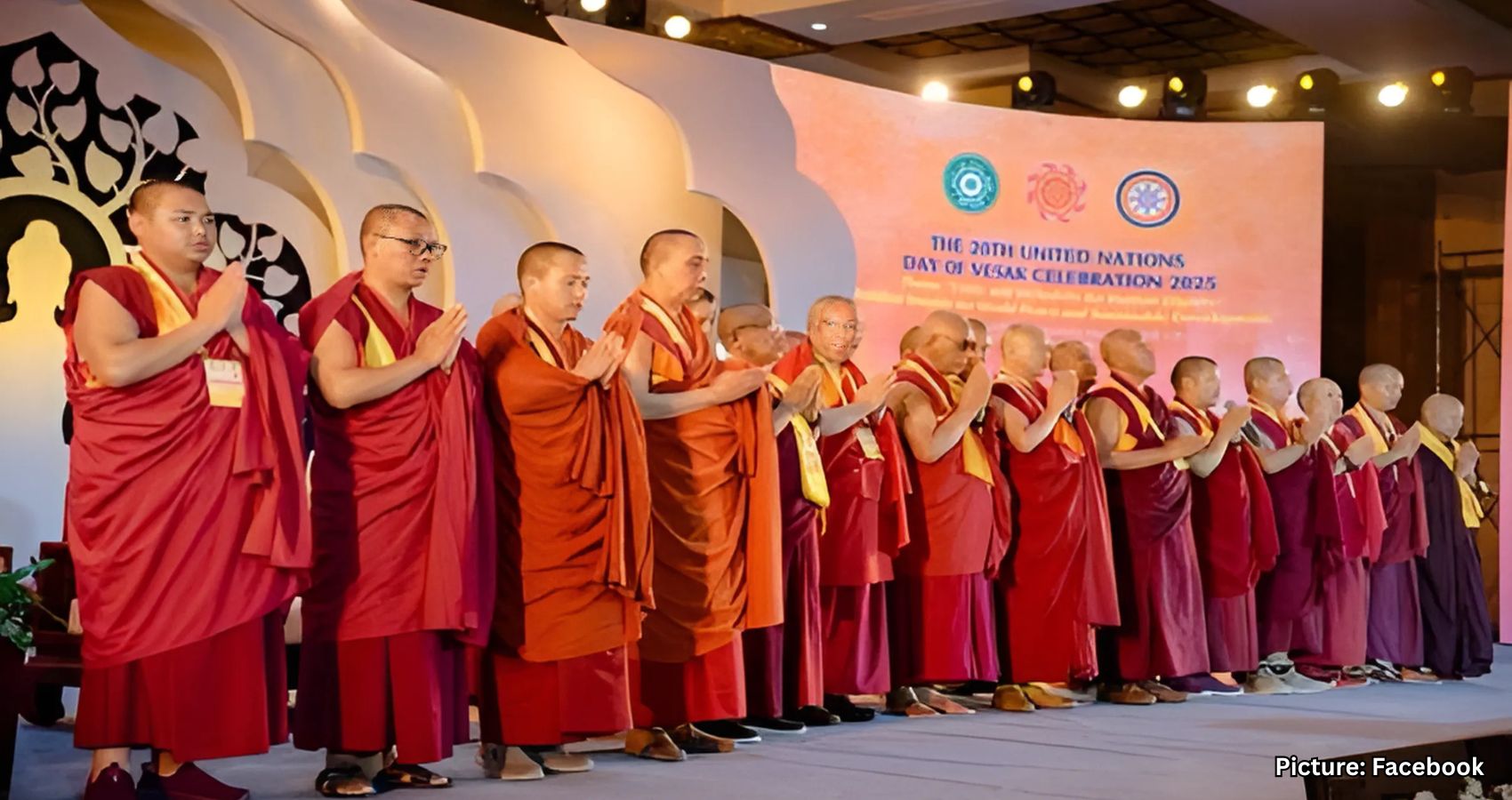
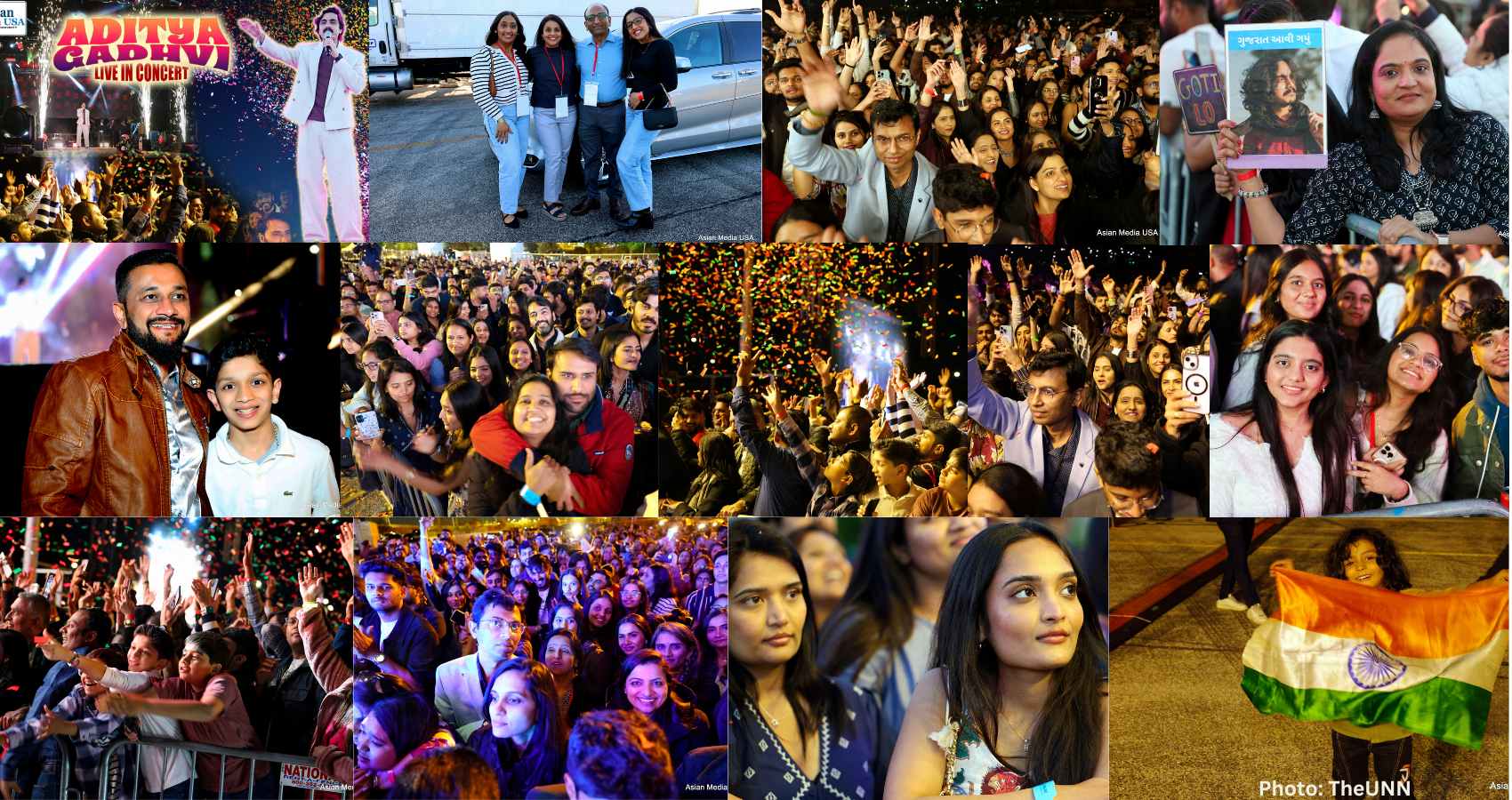
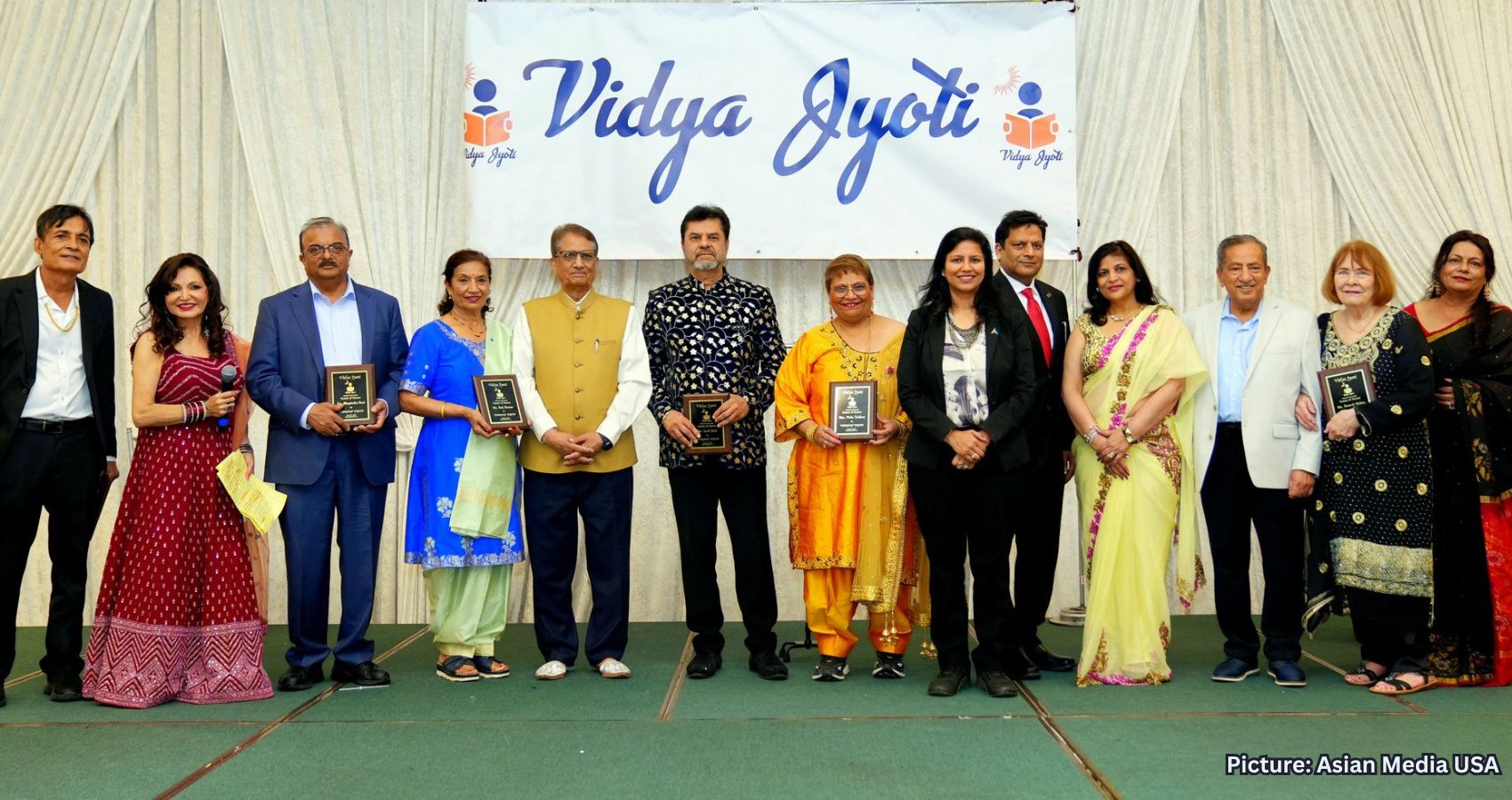
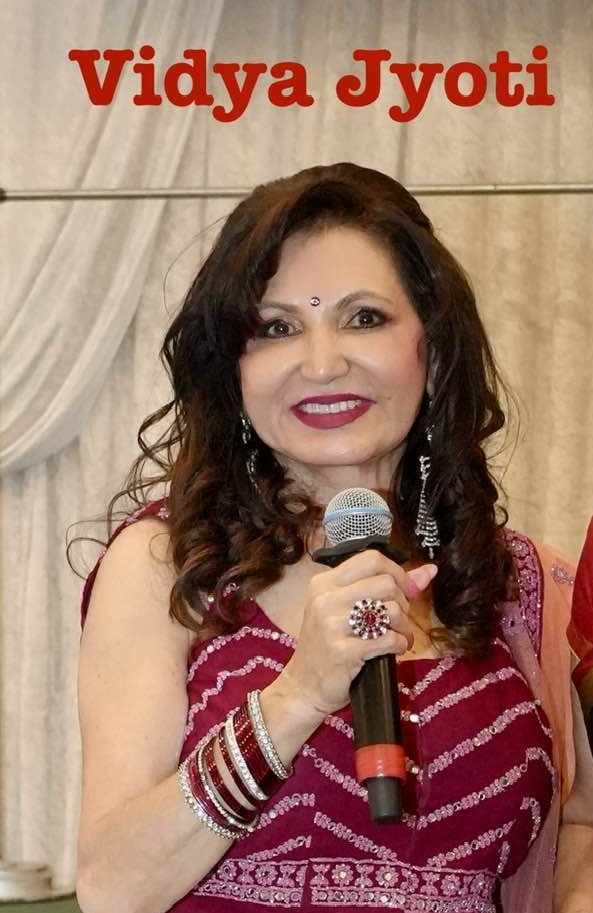 From the moment the guests stepped through the doors, they were swept into a celebration of Indian heritage, creativity, and most importantly: hope. The festival, free and open to the public, pulsed with color and life. It was hosted with charm and energy by two MC’s Neha Sobti and Priyanka Parekh, who guided the audience through an unforgettable journey. The show opened with an upbeat hip hop performance blending rhythm and youthfulness. As the day unfolded, the stage bloomed with a variety of dances: elegant ballet, vibrant Garba, classical Indian sequences, and children twirling in joyful abandon. Groups such as Suhani Dance Academy, Ghunguru School, and Four Stars Dance Group left audiences spellbound.
From the moment the guests stepped through the doors, they were swept into a celebration of Indian heritage, creativity, and most importantly: hope. The festival, free and open to the public, pulsed with color and life. It was hosted with charm and energy by two MC’s Neha Sobti and Priyanka Parekh, who guided the audience through an unforgettable journey. The show opened with an upbeat hip hop performance blending rhythm and youthfulness. As the day unfolded, the stage bloomed with a variety of dances: elegant ballet, vibrant Garba, classical Indian sequences, and children twirling in joyful abandon. Groups such as Suhani Dance Academy, Ghunguru School, and Four Stars Dance Group left audiences spellbound.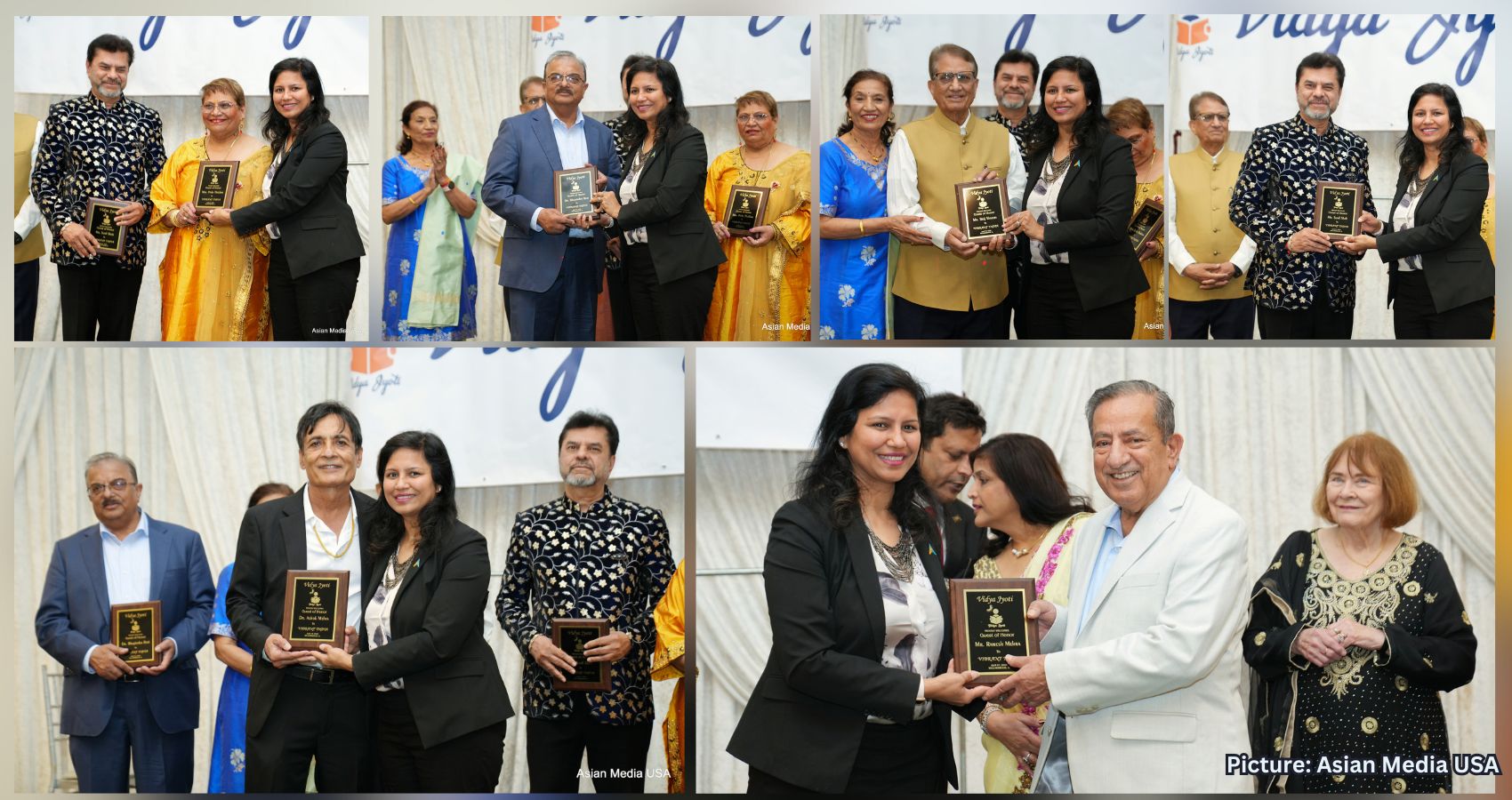 In the Title Walk, finalists were judged not only on style, but voice and purpose. When Rihanna Tandon and Archana Pantraffan stepped forward as winners, their poise and eloquence gave everyone chills. The judges Sanskriti Sharma, Sushma Bhanot, and Archana Agarwal beamed with pride.
In the Title Walk, finalists were judged not only on style, but voice and purpose. When Rihanna Tandon and Archana Pantraffan stepped forward as winners, their poise and eloquence gave everyone chills. The judges Sanskriti Sharma, Sushma Bhanot, and Archana Agarwal beamed with pride.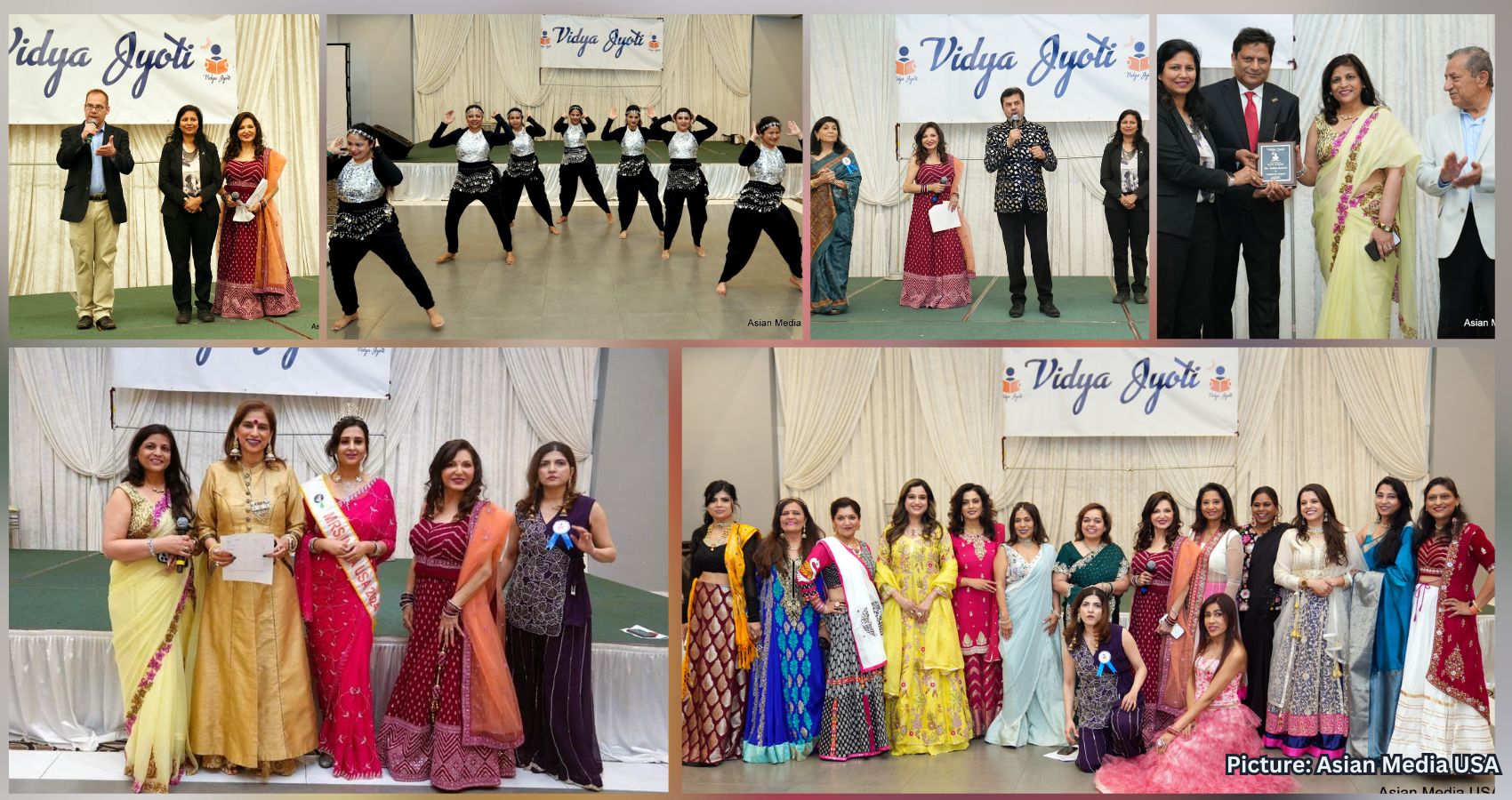 someone once invested in our education. For just $30 a month or a dollar a day, we can offer a child that same gift. Let’s make giving a habit, not a moment.” Ashok Potdar, a dedicated and passionate director of organization, reminded the audience that “Knowledge is the only wealth that cannot be stolen.” The room fell silent, then rose to applause. Another passionate advisory member, Ramesh Mehra had another powerful appeal to help folks understand the mission of Vidya Jyoti.
someone once invested in our education. For just $30 a month or a dollar a day, we can offer a child that same gift. Let’s make giving a habit, not a moment.” Ashok Potdar, a dedicated and passionate director of organization, reminded the audience that “Knowledge is the only wealth that cannot be stolen.” The room fell silent, then rose to applause. Another passionate advisory member, Ramesh Mehra had another powerful appeal to help folks understand the mission of Vidya Jyoti.

 Indian states. It includes: Brass idols of deities like Krishna and Jagannath Swami, Marble and brass Buddha statues with intricate inlay, Wooden temples and home altars, designed with both traditional and contemporary sensibilities, Stone sculptures by Padmashri awardee Pravakar Maharana from Bhubaneswar, Patented wooden art from President’s Award winner Charuhas Pandit ji in Pune, Rare Cheriyal masks, hand-painted by Mr. D Vaikuntam one of the last surviving families practicing this dying art in Andhra Pradesh, Upcycled vintage furniture—crafted from salvaged doors and window frames in Jodhpur, Papier-mâché, clay pots, jharokha mirrors, and seasonal décor sourced directly from rural Indian artisans. The collection bridges past and present, offering pieces that reflect deep mythology, spirituality, and symbolism, while also serving as functional and aesthetic decor for global homes.
Indian states. It includes: Brass idols of deities like Krishna and Jagannath Swami, Marble and brass Buddha statues with intricate inlay, Wooden temples and home altars, designed with both traditional and contemporary sensibilities, Stone sculptures by Padmashri awardee Pravakar Maharana from Bhubaneswar, Patented wooden art from President’s Award winner Charuhas Pandit ji in Pune, Rare Cheriyal masks, hand-painted by Mr. D Vaikuntam one of the last surviving families practicing this dying art in Andhra Pradesh, Upcycled vintage furniture—crafted from salvaged doors and window frames in Jodhpur, Papier-mâché, clay pots, jharokha mirrors, and seasonal décor sourced directly from rural Indian artisans. The collection bridges past and present, offering pieces that reflect deep mythology, spirituality, and symbolism, while also serving as functional and aesthetic decor for global homes.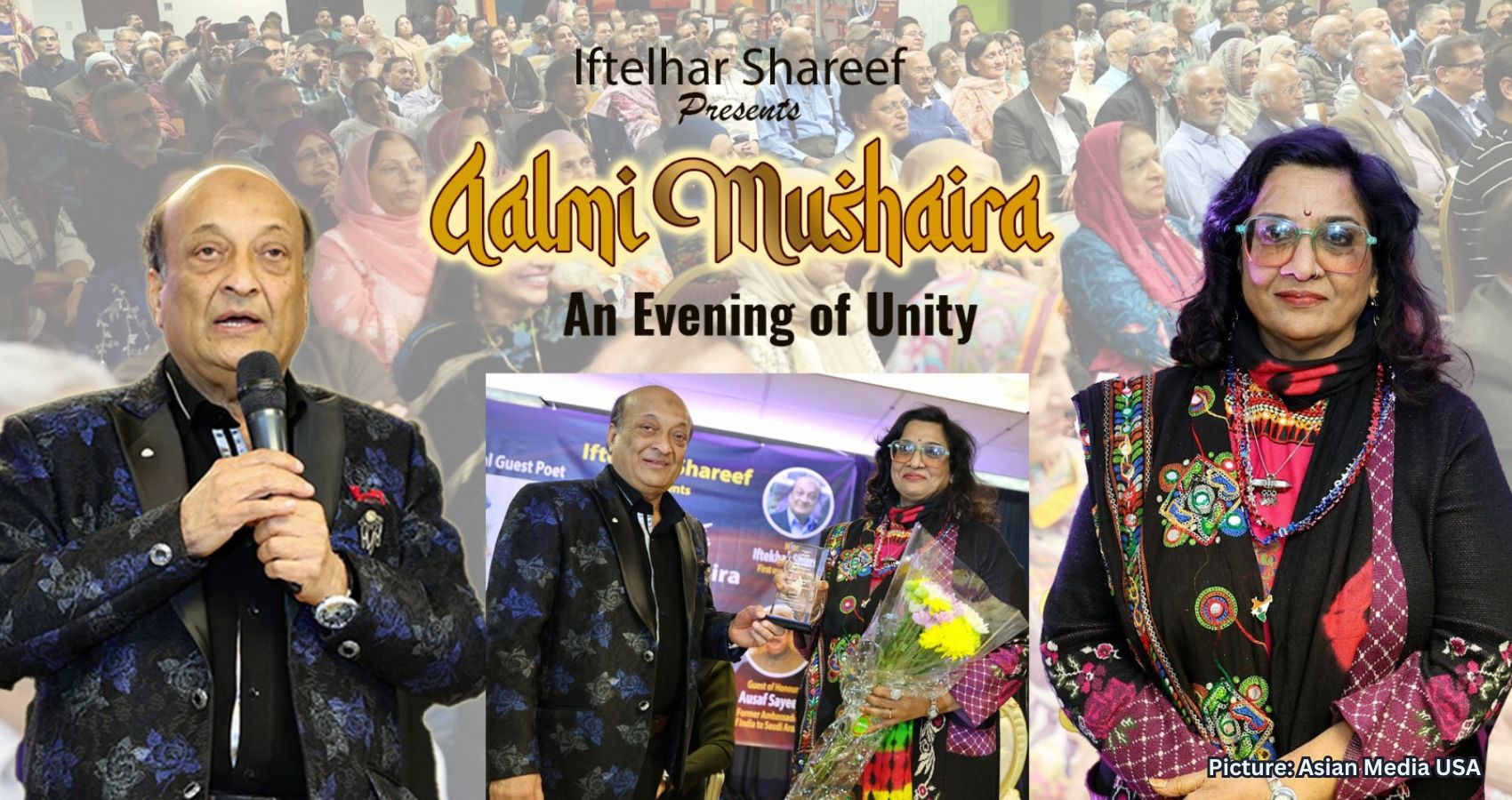
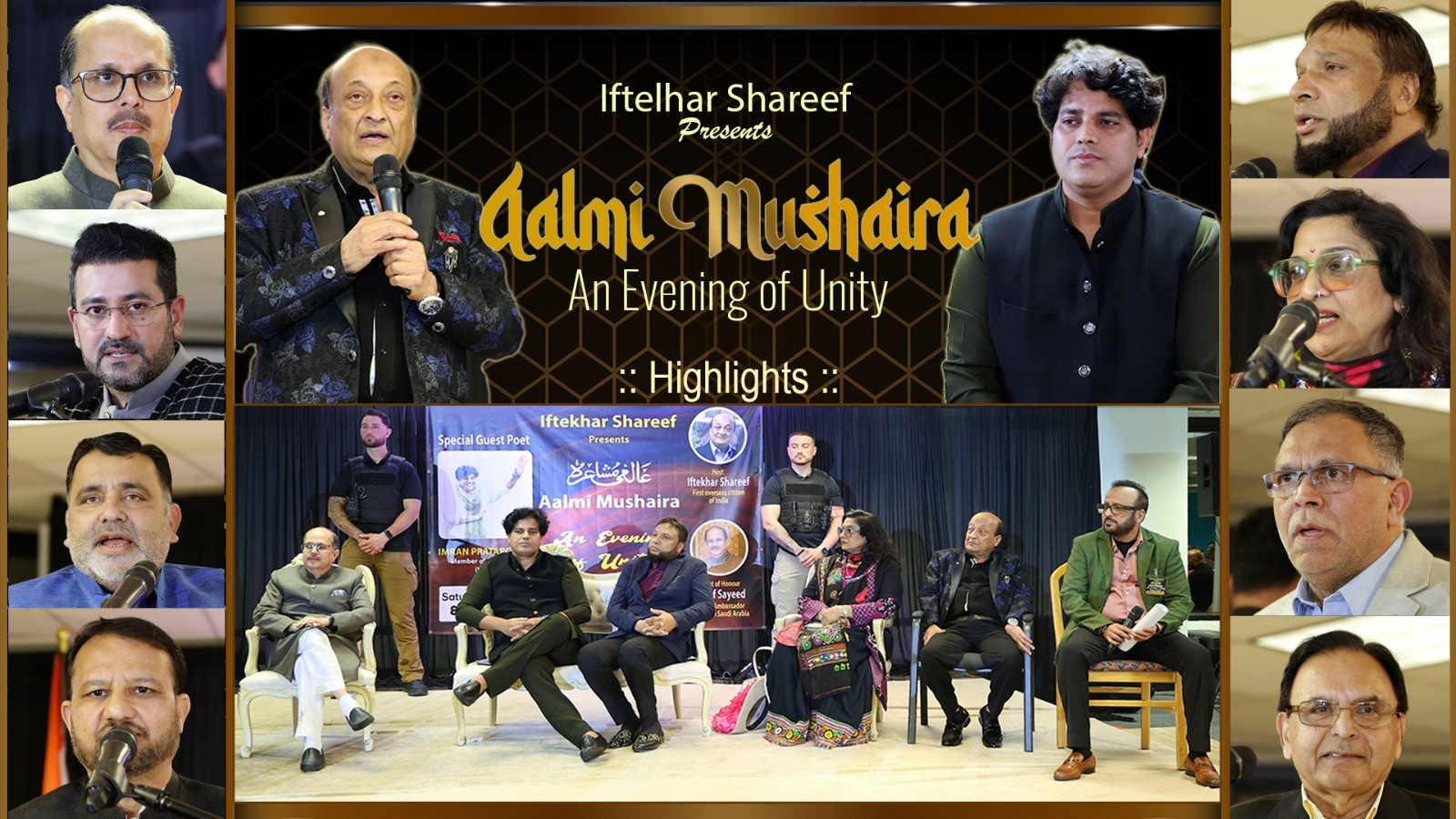 The evening was graced by
The evening was graced by 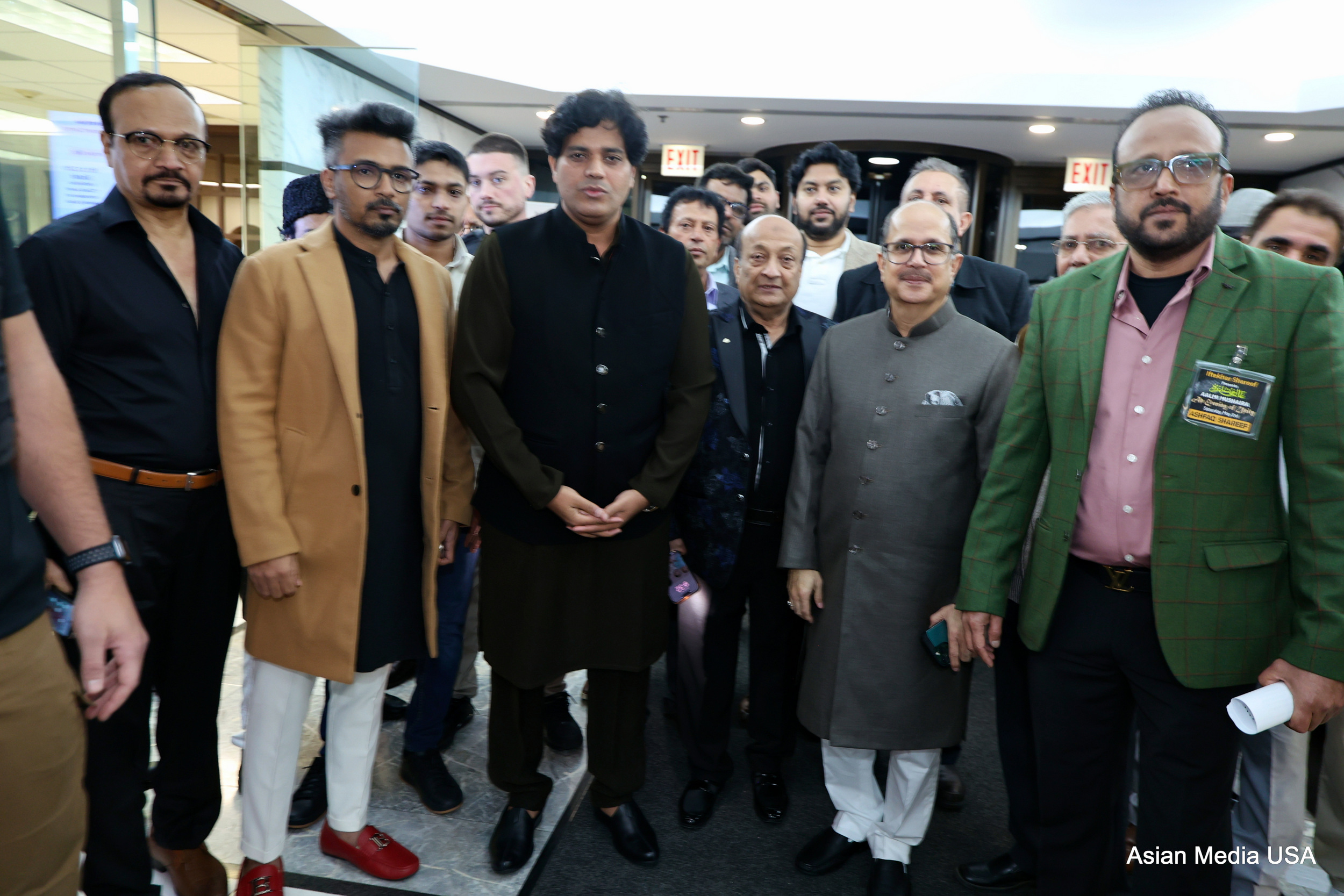 Pe Aati Hai Dua reimagined Allama Iqbal’s classic, weaving a heartfelt prayer for peace in conflict-torn regions like Palestine. “When bullets fly anywhere, it is humanity that dies,” he declared, urging the world to embrace love over hatred. His Lal Qila personifying the Red Fort as a witness to India’s history, stirred patriotic fervor, earning thunderous applause. Pratapgarhi’s ability to blend social commentary with poetic finesse left the audience spellbound.
Pe Aati Hai Dua reimagined Allama Iqbal’s classic, weaving a heartfelt prayer for peace in conflict-torn regions like Palestine. “When bullets fly anywhere, it is humanity that dies,” he declared, urging the world to embrace love over hatred. His Lal Qila personifying the Red Fort as a witness to India’s history, stirred patriotic fervor, earning thunderous applause. Pratapgarhi’s ability to blend social commentary with poetic finesse left the audience spellbound.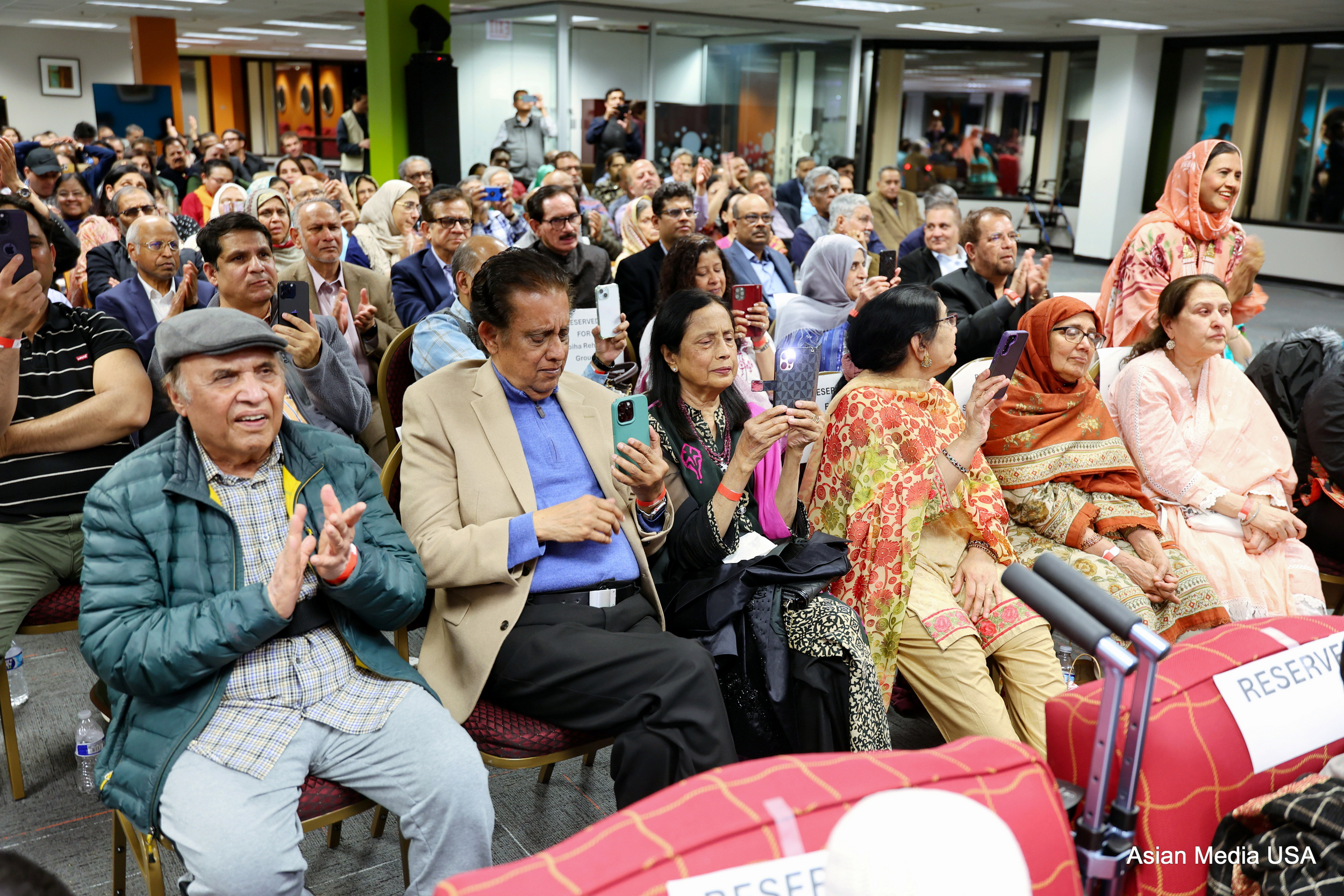 The mushaira concluded with a standing ovation for the poets and organizers, followed by the national anthems of the USA and India, symbolizing the shared values of both nations. Flowers were presented to the guest poets, and Minhaj Akhtar, President of the IOC Committee – Midwest region, joined in honoring the performers. Iftekhar Shareef’s closing remarks reiterated the event’s commitment to fostering peace and cultural harmony, leaving attendees inspired and uplifted.
The mushaira concluded with a standing ovation for the poets and organizers, followed by the national anthems of the USA and India, symbolizing the shared values of both nations. Flowers were presented to the guest poets, and Minhaj Akhtar, President of the IOC Committee – Midwest region, joined in honoring the performers. Iftekhar Shareef’s closing remarks reiterated the event’s commitment to fostering peace and cultural harmony, leaving attendees inspired and uplifted.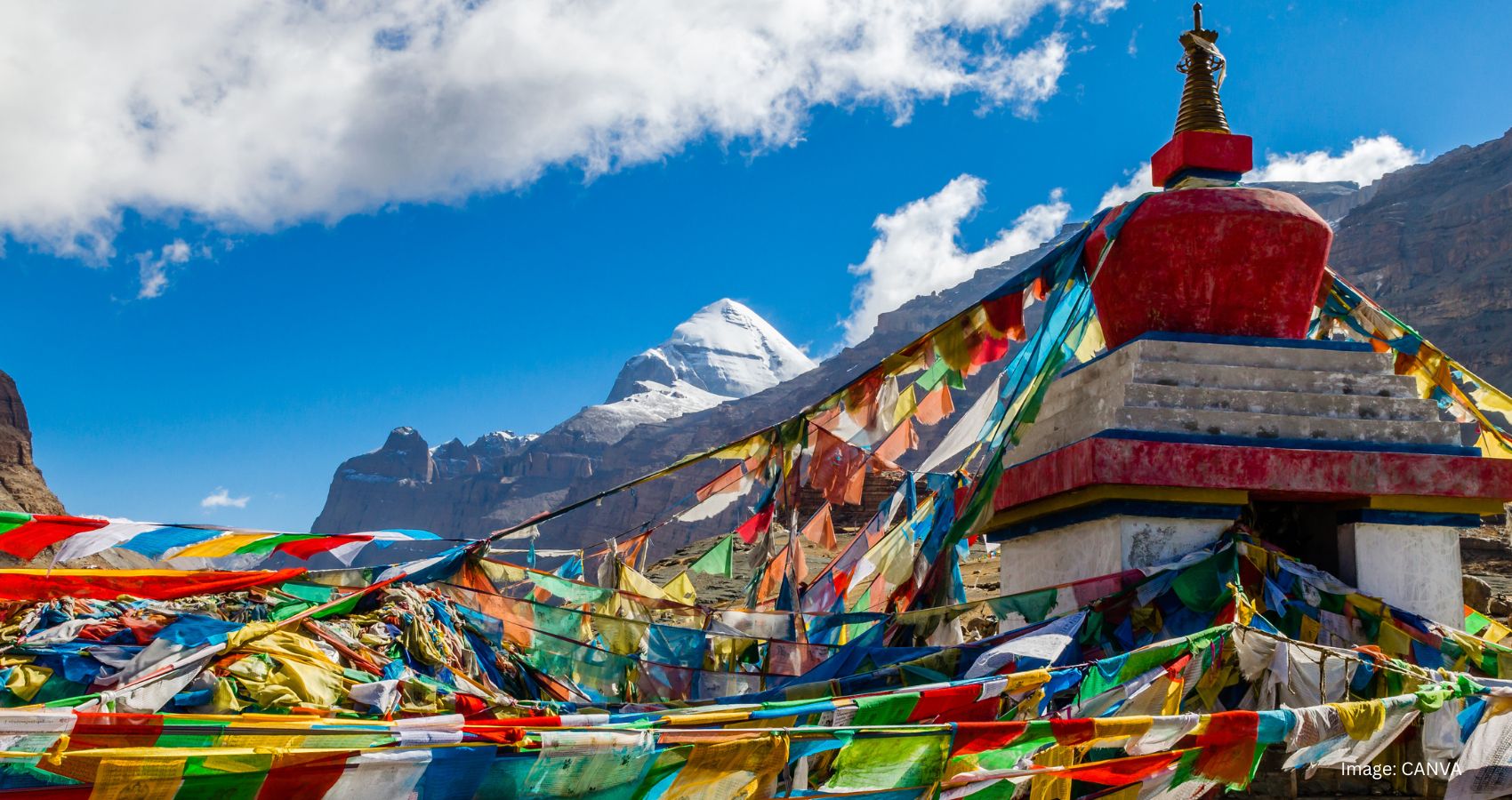
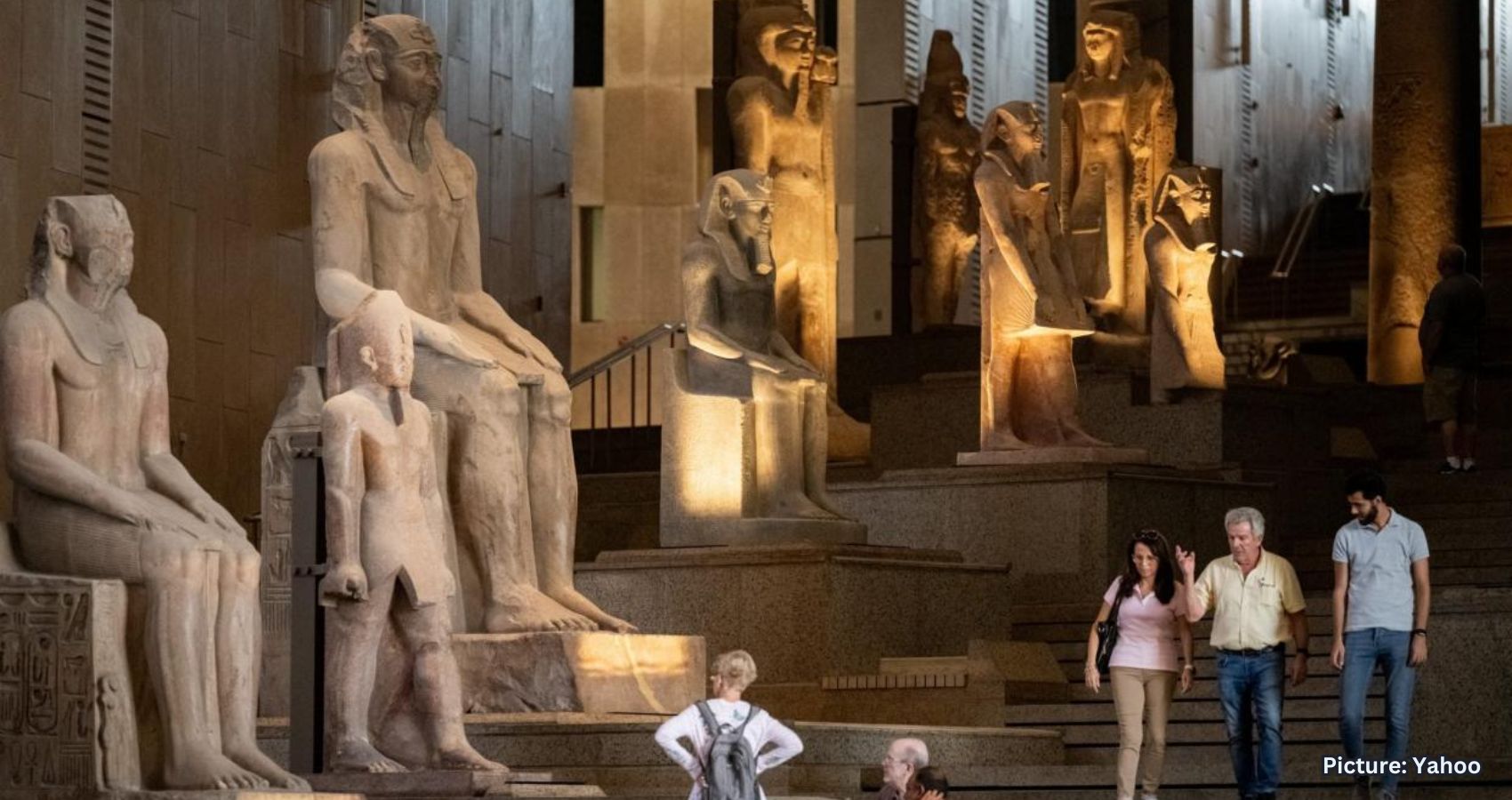





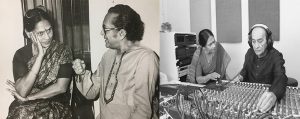






 The Global Malayalee Festival is planned to be held at the Crown Plaza Hotel, Kochi, on August 15 and 16, 2025. Describing the Festival as the largest ever Malayalees Sangamam, where Malayalees from all over the world are expected to be part of and celebrate the culture, traditions, and accomplishments of the Malayalee community, the organizers have urged people of Malayalee origin “to join in this great festival of global Malayalees in our beautiful homeland, God’s Own Country.”
The Global Malayalee Festival is planned to be held at the Crown Plaza Hotel, Kochi, on August 15 and 16, 2025. Describing the Festival as the largest ever Malayalees Sangamam, where Malayalees from all over the world are expected to be part of and celebrate the culture, traditions, and accomplishments of the Malayalee community, the organizers have urged people of Malayalee origin “to join in this great festival of global Malayalees in our beautiful homeland, God’s Own Country.” in India with an NGO status. The objective of the Festival is to offer a platform to network for the global Malayalees and stay connected for generations to come as members of the Global Malayalee Community.
in India with an NGO status. The objective of the Festival is to offer a platform to network for the global Malayalees and stay connected for generations to come as members of the Global Malayalee Community. “Malayalees from all over the World are invited to attend this great event, especially the new generation, born and raised outside Kerala. The Festival will be a perfect opportunity for the young generation to seek and explore their roots and heritage,” the organizers stated.
“Malayalees from all over the World are invited to attend this great event, especially the new generation, born and raised outside Kerala. The Festival will be a perfect opportunity for the young generation to seek and explore their roots and heritage,” the organizers stated. themes: 1. Innovating for a sustainable future, 2. Global Trade in the Digital Age, 3. Bridging Markets East Meets West, and, 4.The future of Trade, Trends and Predictions.
themes: 1. Innovating for a sustainable future, 2. Global Trade in the Digital Age, 3. Bridging Markets East Meets West, and, 4.The future of Trade, Trends and Predictions.
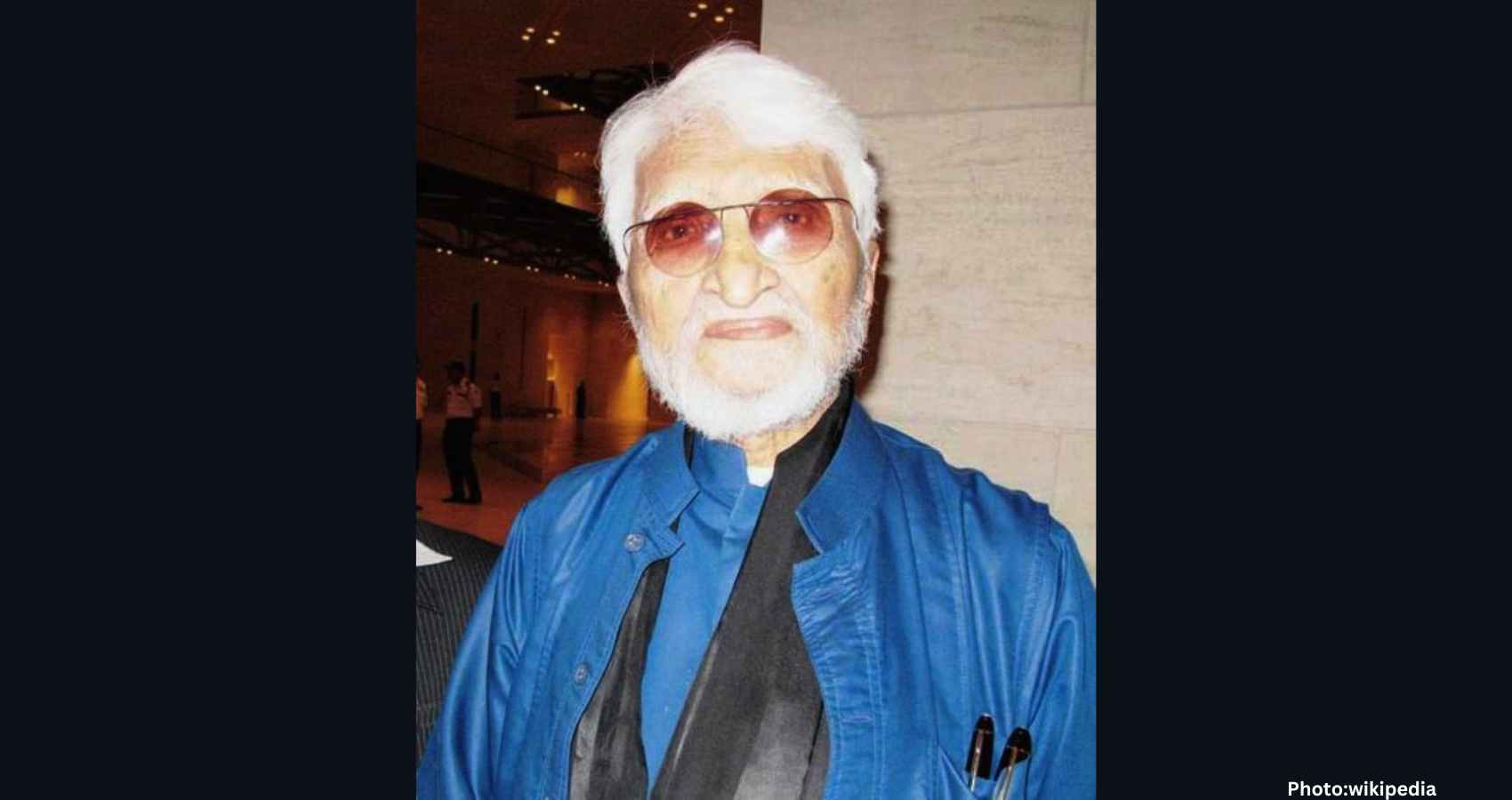


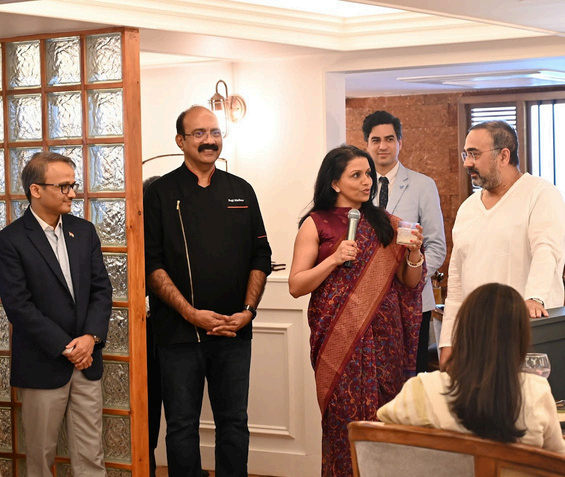








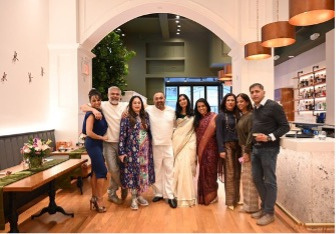


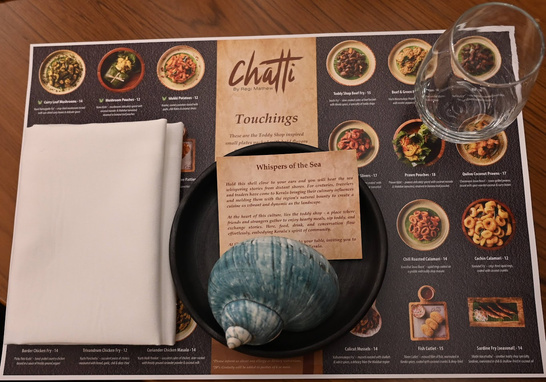
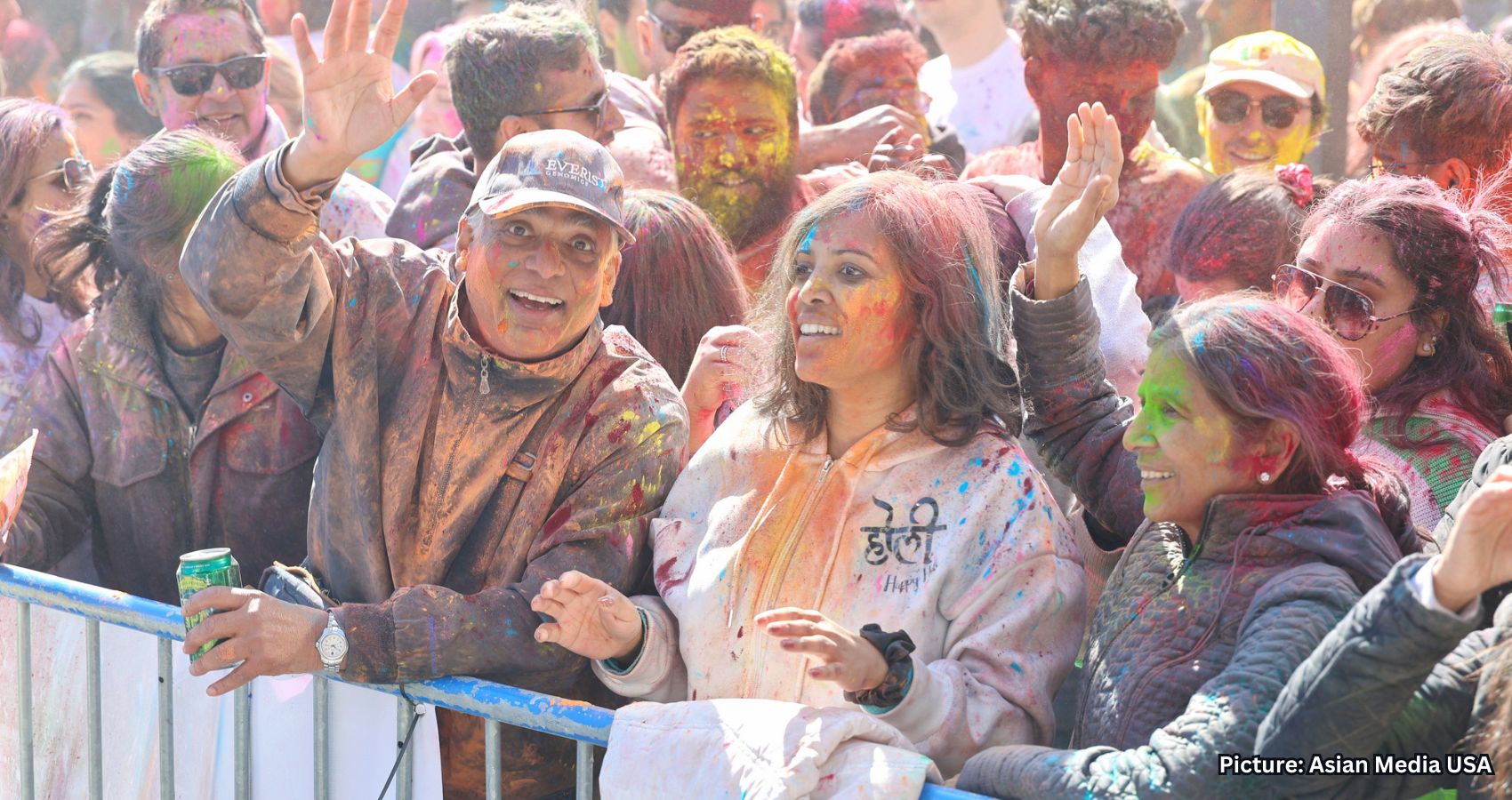
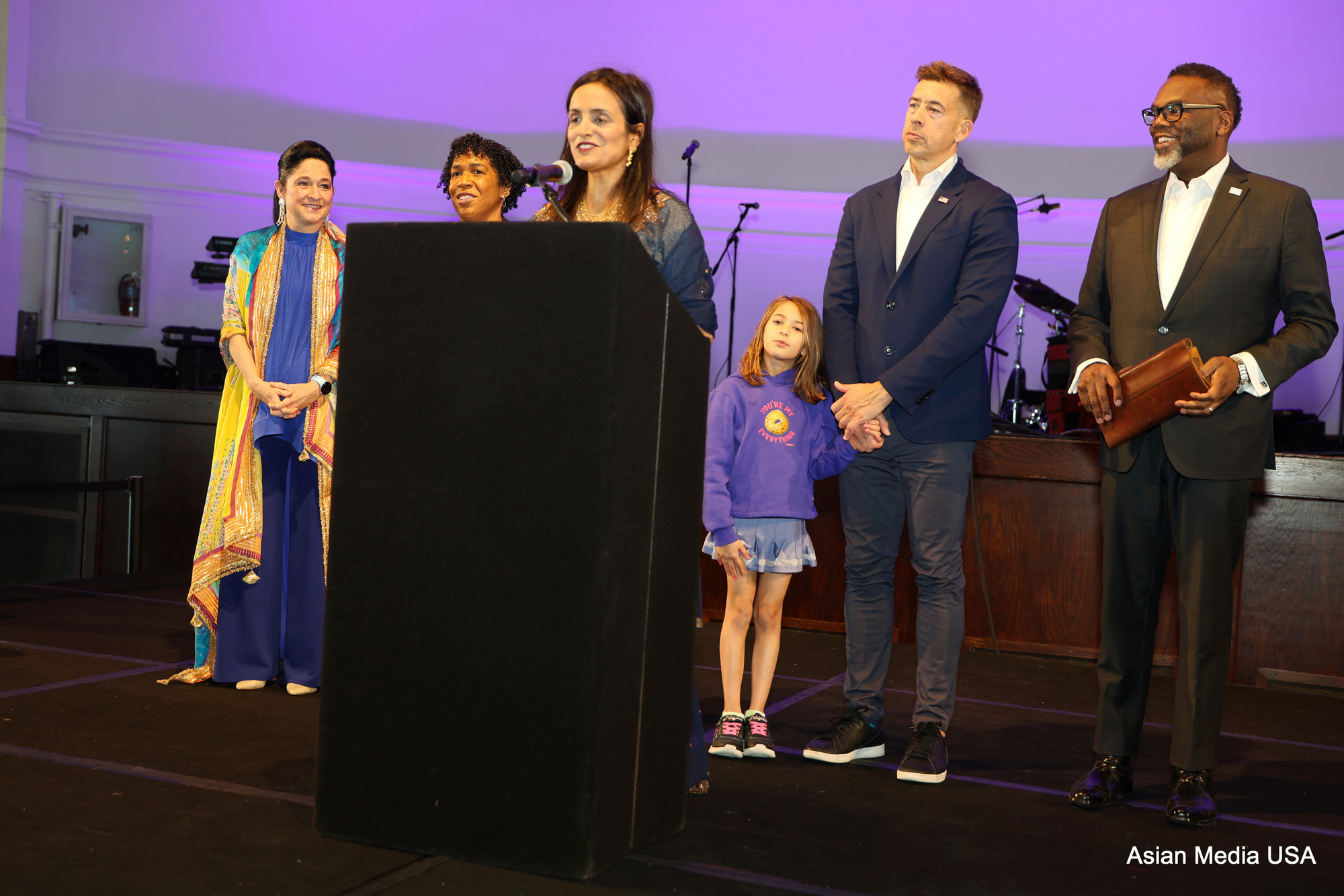
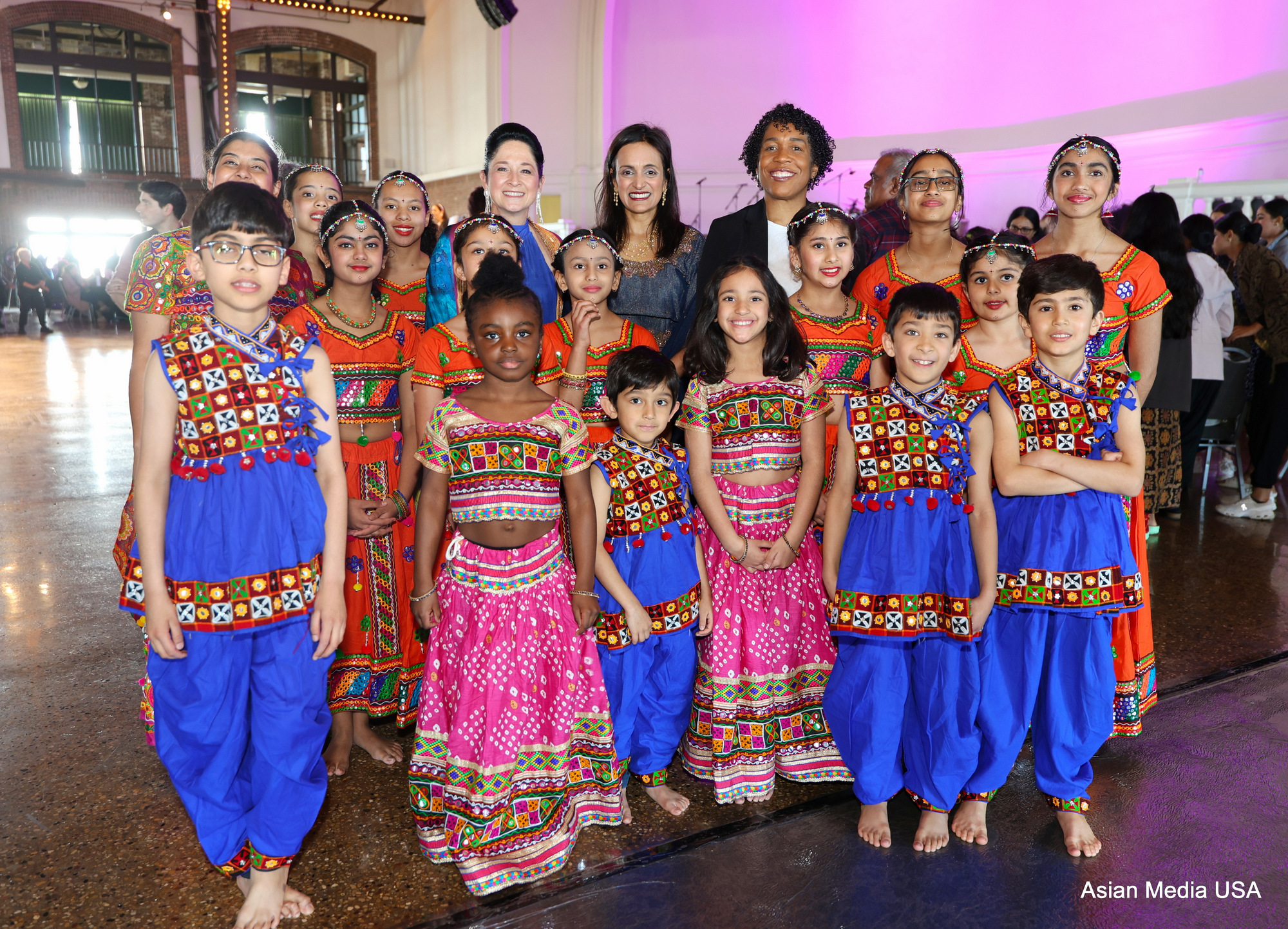
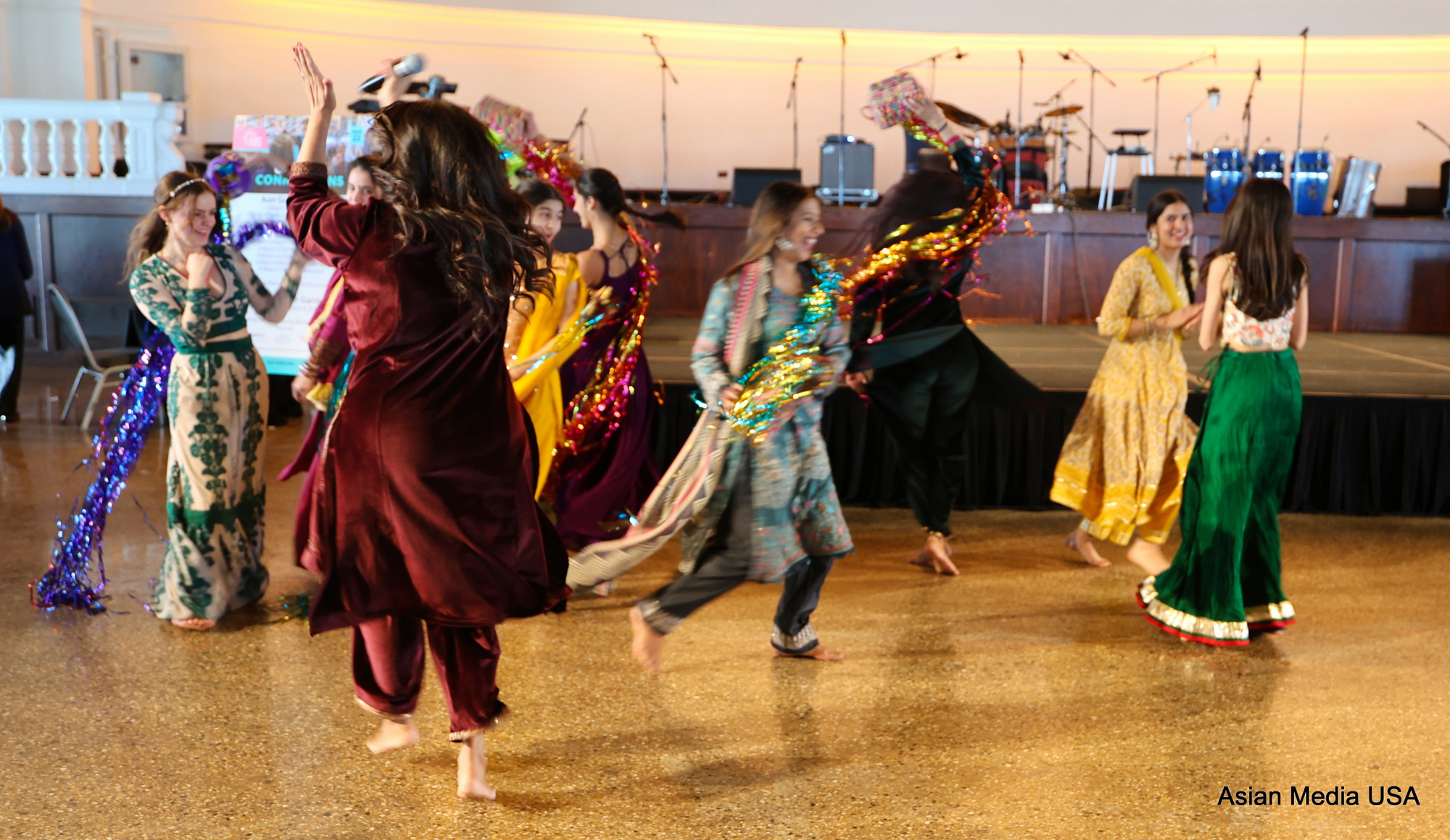
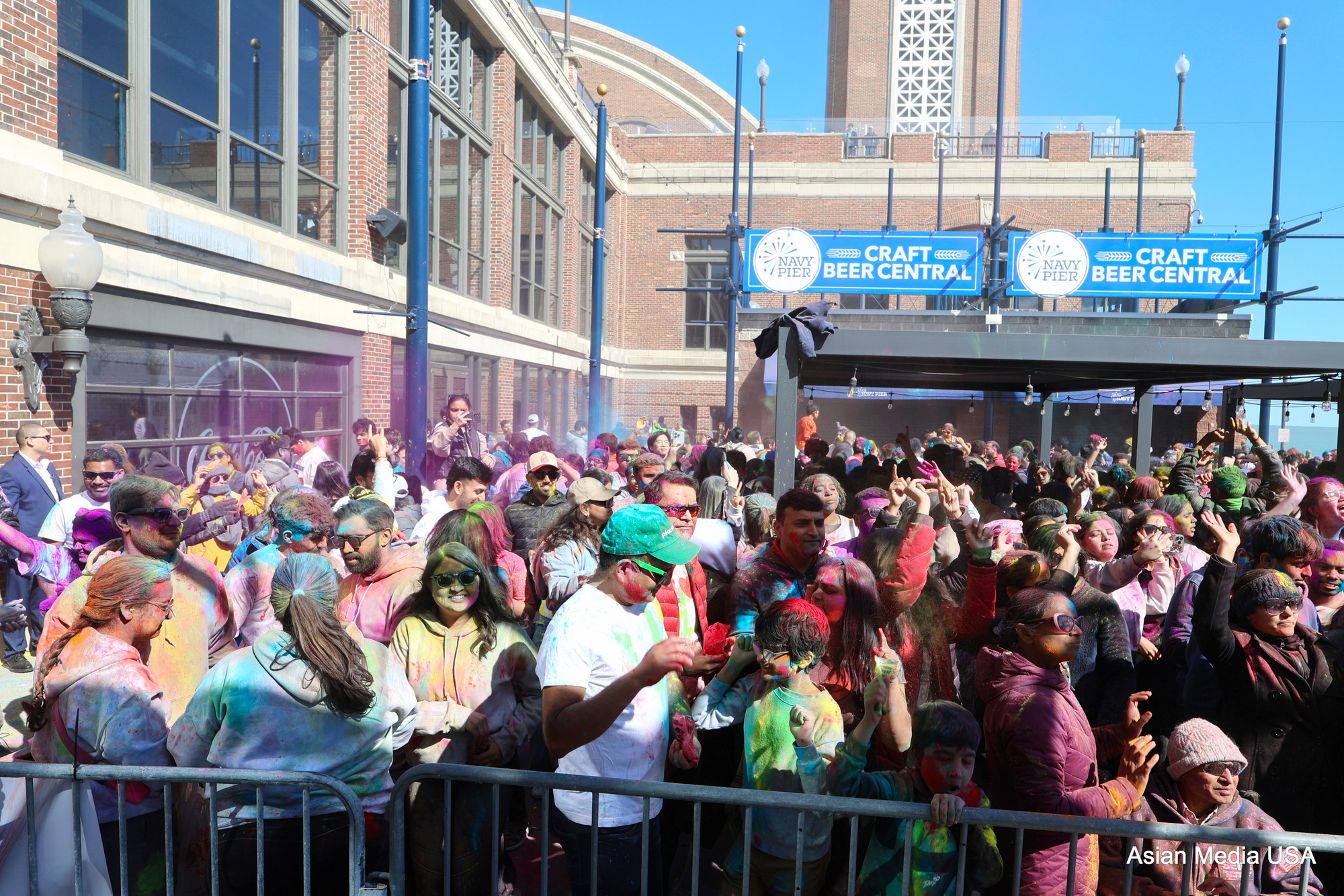
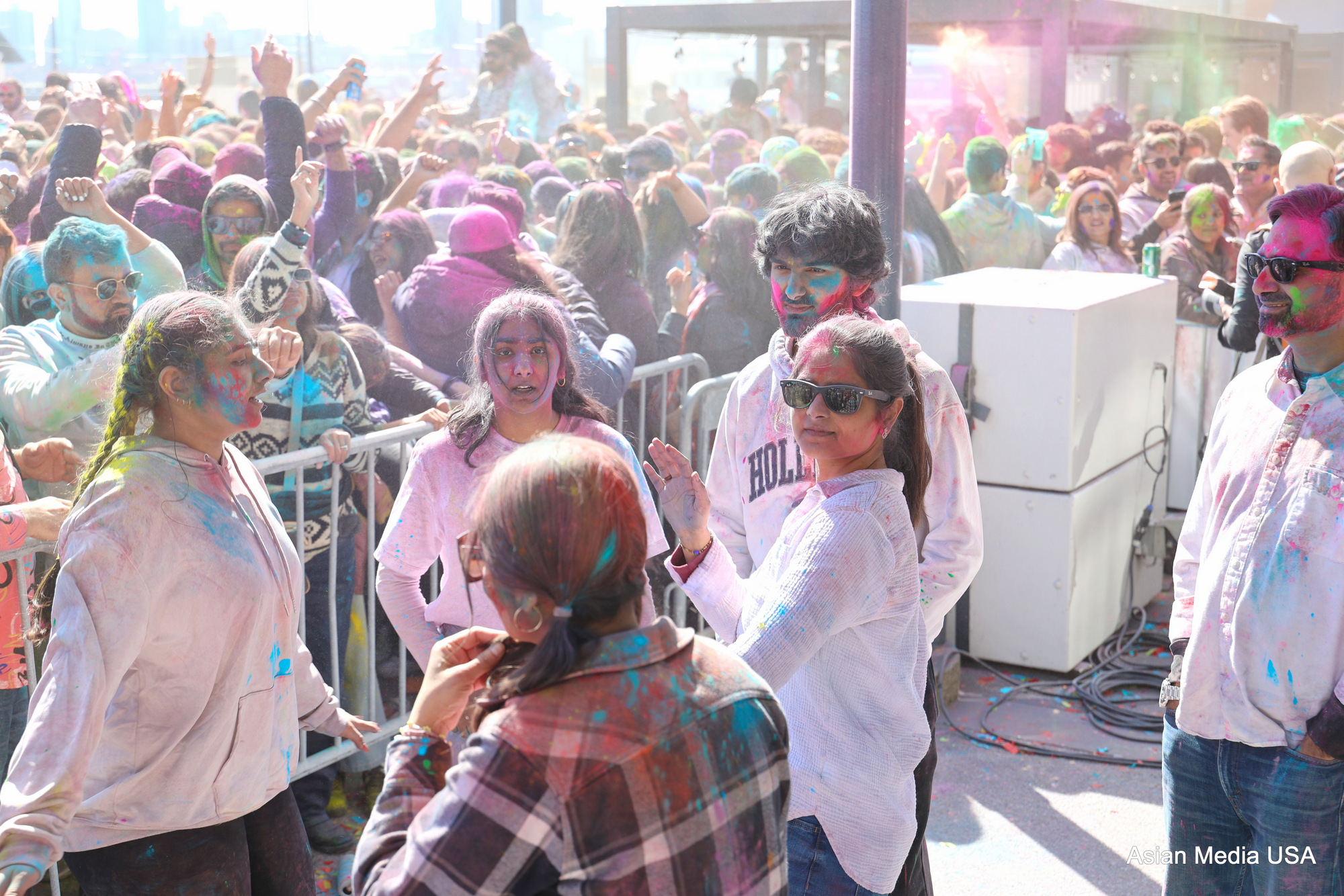






















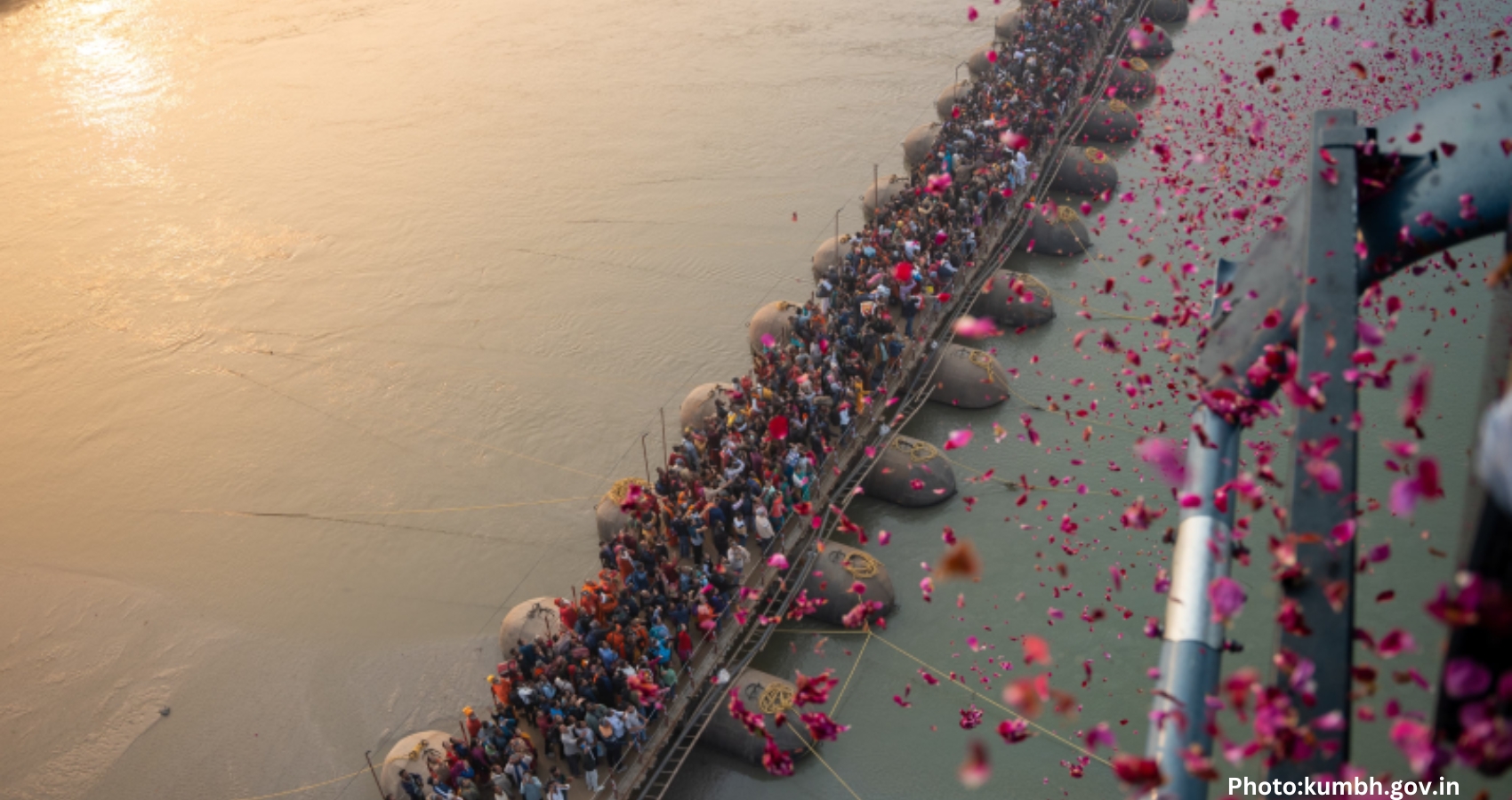




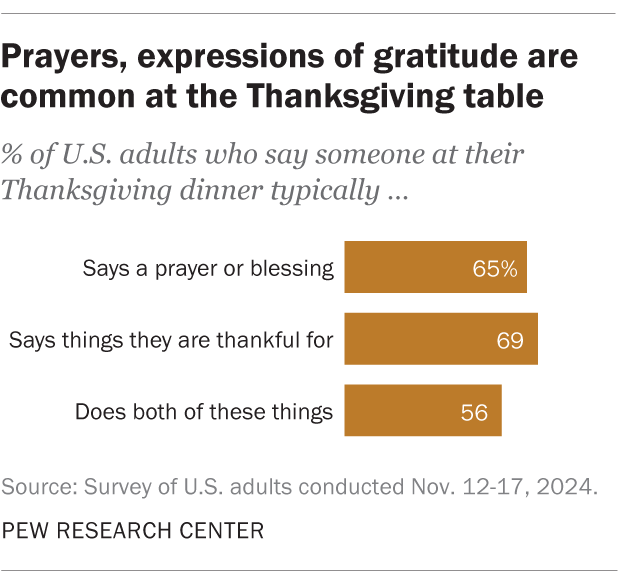

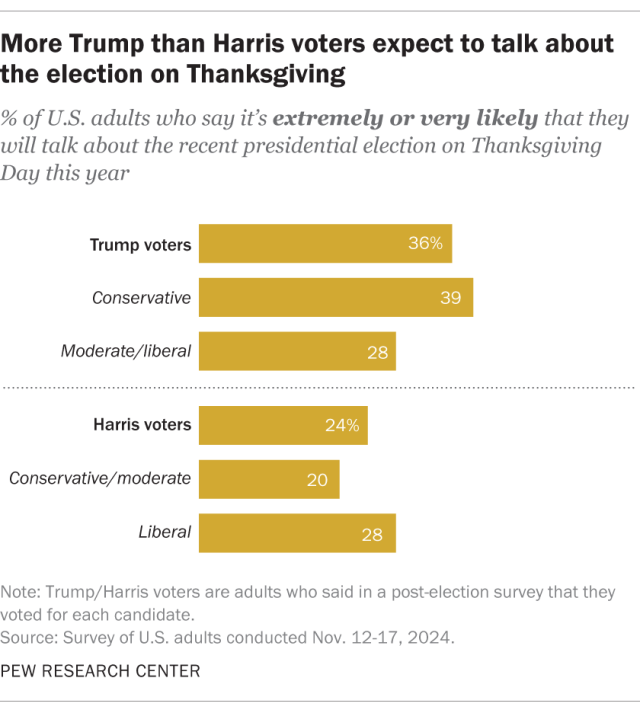

 For those of us who grew up in the 1960s and 70s as students, cinemas were a very different type of culture. Very different from today. First, with no television, no computers, no internet, no video games, with only the government controlled All India Radio, cinemas were like a window in our little lives to peep through now and then. But at the same time, as per the standards of those days, cinemas were also expensive. With an average price of 1.50 rupees for a chair ticket, it was equivalent to the price of a lunch in a casual restaurant or the price of an RTC bus ticket to travel to another town 40 km away or to reach a city that is 100 km away by train.
For those of us who grew up in the 1960s and 70s as students, cinemas were a very different type of culture. Very different from today. First, with no television, no computers, no internet, no video games, with only the government controlled All India Radio, cinemas were like a window in our little lives to peep through now and then. But at the same time, as per the standards of those days, cinemas were also expensive. With an average price of 1.50 rupees for a chair ticket, it was equivalent to the price of a lunch in a casual restaurant or the price of an RTC bus ticket to travel to another town 40 km away or to reach a city that is 100 km away by train.




 Indo-American Festivals, Inc. (IAF) organized its 26th Annual Grand Dushahra Festival on October 5, 2024, at the scenic Lake Papaianni Park in Edison, New Jersey. The day-long cultural celebration attracted more than 15,000 attendees, making it one of the most anticipated events in the Indo-American community. Families and friends enjoyed a vibrant array of activities, performances, and cultural performances.
Indo-American Festivals, Inc. (IAF) organized its 26th Annual Grand Dushahra Festival on October 5, 2024, at the scenic Lake Papaianni Park in Edison, New Jersey. The day-long cultural celebration attracted more than 15,000 attendees, making it one of the most anticipated events in the Indo-American community. Families and friends enjoyed a vibrant array of activities, performances, and cultural performances.
 The event was graced by esteemed guests, including Edison Councilman Ajay Patil and Grammy Award-winning artist Falguni Shah, who made a special appearance. The festival was also supported by generous sponsors and volunteers, whose dedication made the day a resounding success.
The event was graced by esteemed guests, including Edison Councilman Ajay Patil and Grammy Award-winning artist Falguni Shah, who made a special appearance. The festival was also supported by generous sponsors and volunteers, whose dedication made the day a resounding success.
 Now it is well known that from the reign of Elizabeth I to almost the coronation of Elizabeth II there is an entire unrecorded parallel history of pillaging of Indian treasures. Far beyond the overhyped stories of the Hukumat-i-Britannia’s ceremonial durbars, maharajahs’ balls, Viceregal tiger shoots, cricket matches, Anglicized curries, parades, pageants, and shenanigans in Shimla, there exists the shameful colonial legacy of theft. Notwithstanding the British Empire’s assertion of its benevolence in introducing modern medicine, law, civil services, progressive education and railways in India all the expensive art pieces and artifacts stolen from India are now safely placed in the galleries and vaults of Britain’s museums and stately manors. They signify grave crimes that were committed in India in the name of racial superiority. The British program of plundering was essentially an indomitable endeavour to destroy India’s splendid history and obliterate our nation’s historical accomplishments as if they never existed.
Now it is well known that from the reign of Elizabeth I to almost the coronation of Elizabeth II there is an entire unrecorded parallel history of pillaging of Indian treasures. Far beyond the overhyped stories of the Hukumat-i-Britannia’s ceremonial durbars, maharajahs’ balls, Viceregal tiger shoots, cricket matches, Anglicized curries, parades, pageants, and shenanigans in Shimla, there exists the shameful colonial legacy of theft. Notwithstanding the British Empire’s assertion of its benevolence in introducing modern medicine, law, civil services, progressive education and railways in India all the expensive art pieces and artifacts stolen from India are now safely placed in the galleries and vaults of Britain’s museums and stately manors. They signify grave crimes that were committed in India in the name of racial superiority. The British program of plundering was essentially an indomitable endeavour to destroy India’s splendid history and obliterate our nation’s historical accomplishments as if they never existed.